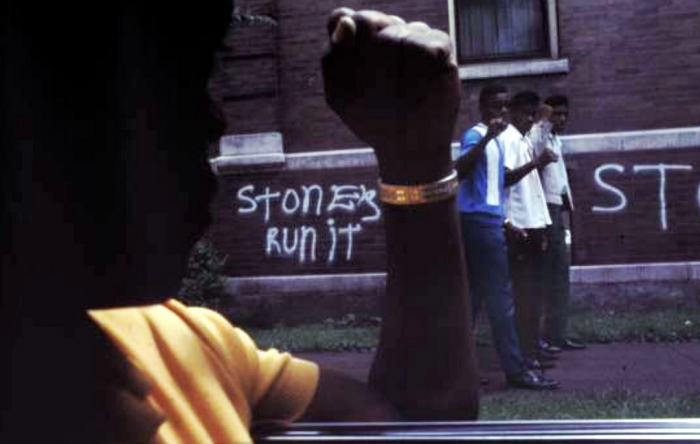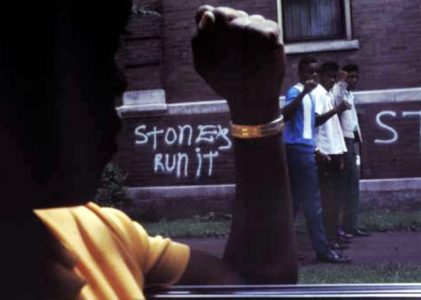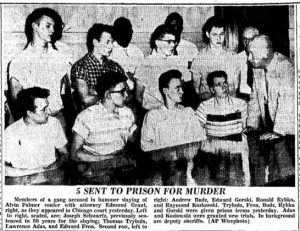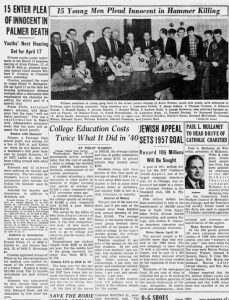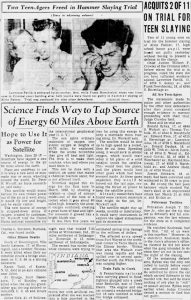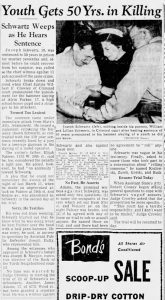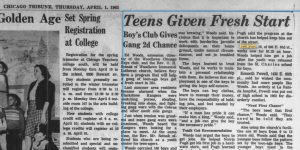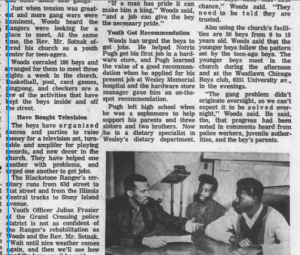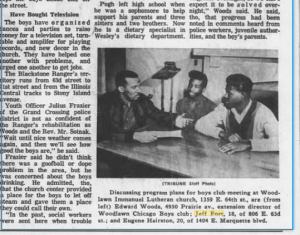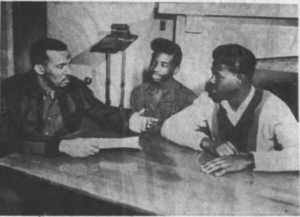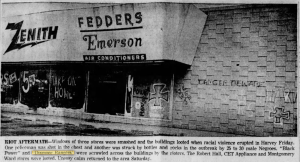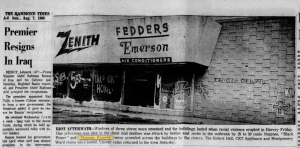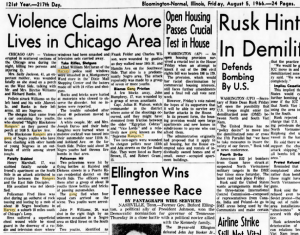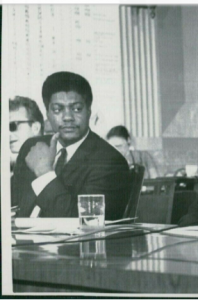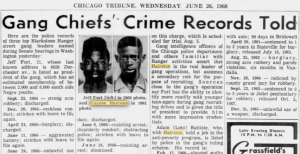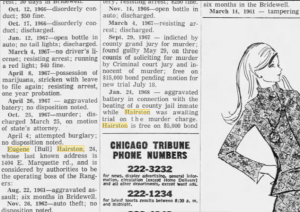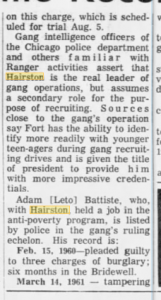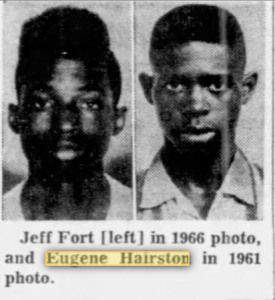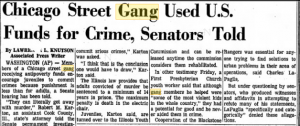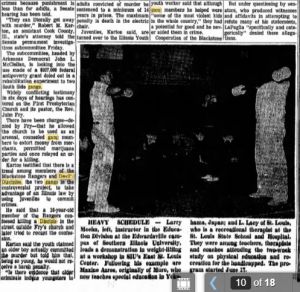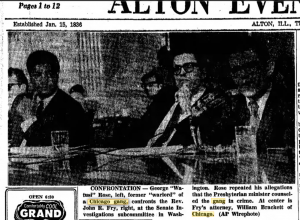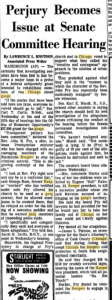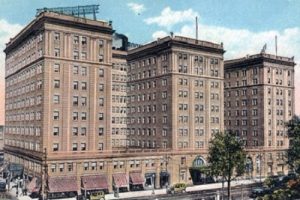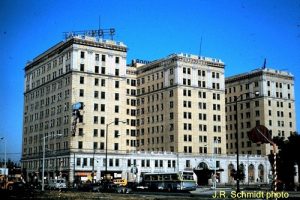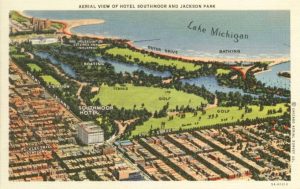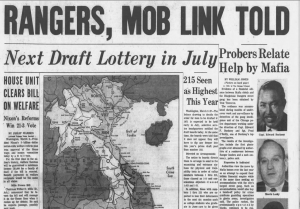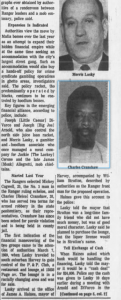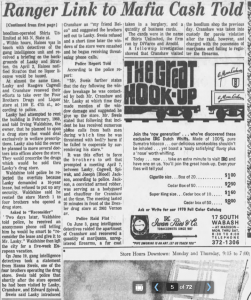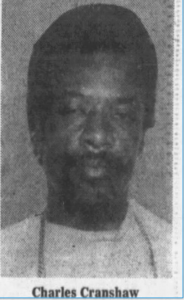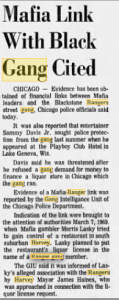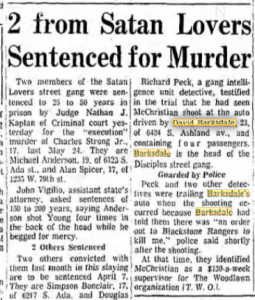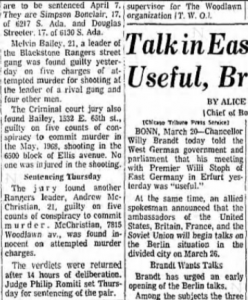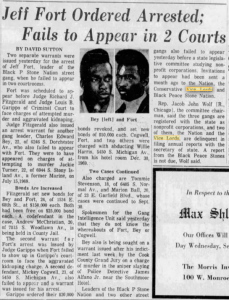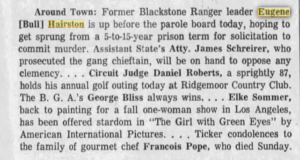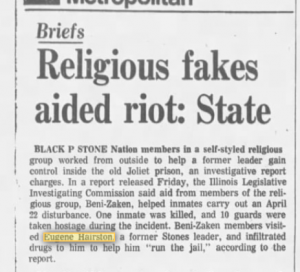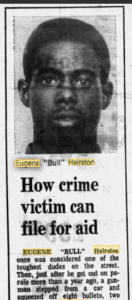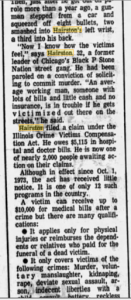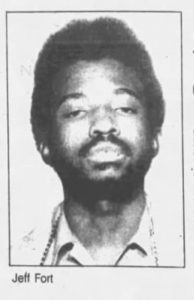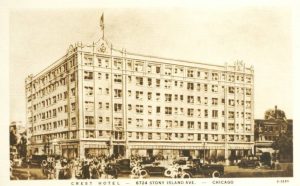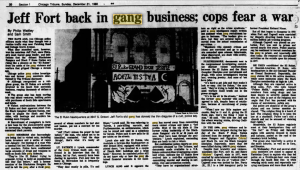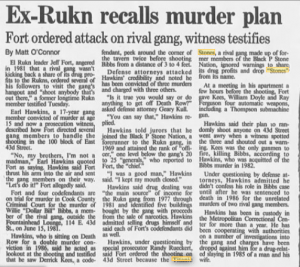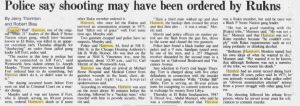| Founded | Founded in 1959 in or near Woodlawn |
|---|---|
| Affiliations |
People Nation
— 1978
–
2000 or later; |
| Colors | Black and Red |
| Primary ethnicities | African American |
| Symbols | Pyramid, 7, Sun, and Eye |
| Symbol usage | Pyramid with 21 bricks and a number 7 in the sun behind the point of the pyramid, eye behind the pyramid |
| Status | Active |
To begin the story of the Black P Stones it is first important to understand some background of the area in which the Stones began and some of the organizations that predate the Stones. The Stones began in the Woodlawn neighborhood on Chicago’s south side. Woodlawn was historically a neighborhood that fought to remain a white community and even created strict racial covenants to assure the community would remain white. What caused the white community to lose their firm grip on keeping Woodlawn white was a nasty economic decline during the Great Depression era of the 1930s decade. In the aftermath of the depression the white community could not organize neighborhood renewal in the 1940s and this led the neighborhood to depreciate, and deterioration began to settle in, naturally dropping home values. With the decline in property value landlords often sought to rent to blacks because they were willing to pay higher rent during the major housing crisis of the 1940s and 1950s. At that point, there was no stopping black migration to Woodlawn especially after the Supreme Court declared restrictive covenants illegal in 1948. During the 1940s Woodlawn began to change from white to black, however, the big transition did not occur until the mid-1950s when whites began to leave at a faster rate and the black population became the majority. Woodlawn fought tooth and nail against having blacks in the community until the later 1950s when they all decided to move out and take with them what was left of the local economy. White flight always equals poverty as communities become redlined from investment, renovations and bank loans that are sorely needed for business owners to start new businesses that provide jobs and tax dollars for the local economy of the neighborhood. Homeowners also suffer in redlined communities as loans are denied that will allow them to make repairs on their homes, in turn, the deteriorated homes drop the value of the community, a vicious cycle. Bottom line is communities that were known to be majority black were immediately redlined both officially and unofficially.
Black gangs on the south side of Chicago were never as vicious or as active as white gangs around the city before the late 1950s. The Irish street gangs especially gained notoriety in the old days and were well-known for being vicious combatants in the Cabrini Green area and on the south side in Bridgeport and the Back of the Yards. If you thumb through old newspapers and archives, you seldom hear much about black gangs or as the newspapers used to refer to them back then as “negro gangs.” Before the late 1950s it was very seldom to hear about the activities of black street gangs, and it wasn’t because the papers felt the need to leave out the race of the gang because by the 1950s the press was pretty much trigger happy notifying the public about the race of the non-white gang and that’s when you began to see “negro gang” in the paper beginning in the late 1950s.
The only real evidence of south side black street gangs was from some oral legends that told the tales of the Dirty Sheiks, Four Corners and the Deacons. There is mild documentation of the Deacons and Sheiks but nothing really on the Four Corners. The Four Corners and the Deacons once ruled the south side, mainly in the Bronzeville area but never really had much influence below the Grand Boulevard, Douglas, Oakland and Kenwood communities. Sheiks were somewhat similar to syndicates that began on the south side but did not develop into anything major. The south side black street gangs were not big on activism at all, although they formed in 1919 because of the race riots to protect their community from white invaders, they instead turned into small time hustlers that fought each other for turf. The black street gangs of the south side were not killers or mad dog gangster types they were just groups of young men that came together to shoot dice games for money or act as tour guides for white visitors to the blossoming Bronzeville area when these tourists came seeking drugs, prostitutes or booze; or some just wanted a tour guide to show them the best places to dine and catch good blues or jazz entertainment. Being a tour guide and catering to tourists was big business for black street gangs in Bronzeville and it would get competitive at times causing brawls to happen.
The biggest outfit among the south side black community was the policy racket that was a form of organized crime. These “gangsters” stimulated the local economy and provided employment and donations to the black community that sorely needed it. Besides the policy racket there were pockets of small syndicate gangster groups that rose in power once the Chicago Outfit flooded the south side black community with heroin and cocaine. Dope peddlers began to form small organized crime groups especially since they were now developing direct connections with the Outfit. This was how the black community was being infected with drugs and crime, issues that were minor in the years before 1952, the year the Outfit muscled in.
By 1954, black migration increased on the south side of Chicago. The Woodlawn neighborhood began its early transition from a majority white community to a majority black neighborhood. This was the year when white flight took off in Woodlawn as whites decided to no longer invest in this community and they took the local economy and profitable businesses with them. This was also the year when racial tensions began to heat up between newly arrived southern black families and white families that didn’t want to leave Woodlawn yet or couldn’t leave afford to leave yet. Racial tensions and protests led to the formation of white greaser gangs. Eventually black youths in Woodlawn stood up to greaser gangs by creating a gang of their own. This gang created was known as the “Players” or “Junior Players.” Perhaps the Players started elsewhere and the younger members where in Woodlawn by 1954, but whatever the story is the Players or Junior Players were in the Woodlawn community no later than 1955. This is the first and only black gang among newly arrived black southerners; former residents of Woodlawn from this era remember the Players.
The Players were supposed to be the club that would defend the black community but for some reason the group failed by 1955 and began to dissolve but some members developed the group just as it was about to go extinct and recreated the club to be named after the street they came from. This new club was named the “Blackstone Raiders.” The Raiders began in 1955 and became the main defenders of the black community I Woodlawn more so than any black gang on the south side. Raiders were connected with black syndicate groups and were even able to obtain firearms and hustle on the side. The Raiders developed a much stronger following than the Players.
In March of 1957, a white gang from Back of the Yards known as the Rebels made the newspapers as a group of them attacked a black youth named Alvin Palmer who happened to be a Blackstone Raider gang member. In the newspaper it wasn’t known that Palmer was a Raider, therefore, it looked like just a random racial attack as the gang of greasers beat Palmer to death with a large ball peen hammer at the intersection of 59th and Kedzie in the Gage Park neighborhood, Palmer resided in Englewood. The trial was a big one and lasted for months but eventually the greaser boys were convicted of the murder. What also isn’t talked about is how the Raiders got revenge for Palmer’s murder by gunning down a Rebel sometime later. The Raiders also got revenge by seriously assaulting twelve white youths. Palmer was a innocent bystander and the Rebels had no idea Palmer was in the Raiders but sure found out after the attack. This was the first time in Chicago history that the black gangs really stood up to the white gangs with a organized attack that left devastating results. The reason I bring this case up is because the Raiders were the first big influence on the south side and in Woodlawn and were the first group to show black youths that they can establish great power in numbers and fight this racial battle, this was bug influence for the later Blackstone Rangers.
By the year 1959 almost 90% of the white population had abandoned Woodlawn leaving extreme blight and abandonment of businesses and properties. Black street gangs from the more upper south side like the Devil’s Disciples and Egyptian Cobras of the south side settled in Woodlawn to offer protection to the black community as crime was growing and the Chicago police were brutal toward this new black community; however, within no time Cobras and Disciples began feuding with each other and in east Woodlawn the Cobras dominated.
The Vice Lords were a rising organization from the west side in 1959 and one of the founders had family on the south side of Chicago, particularly in Woodlawn. Leonard “Cal” Calloway was one of the first seven Vice Lords that helped put it all together and before he was a Vice Lord, he was an Imperial Chaplain. Cal was related to fifteen-year-old Eugene “Lil Bruce” Hairston. Hairston was no gang banger before 1959 and was not even a native of Chicago. Hairston was born on May 1, 1944, and was raised in Columbus Ohio in his younger years before his family moved to Chicago in 1955. The Hairston family first moved to the Low End (east side of Washington Park and south side of Grand Boulevard runs north-south between cottage grove/state street and east-west from around 55th/47th…towards Roosevelt). In 1956 the Hairston’s relocated to Woodlawn I think over by Stoney Island Avenue. Hairston connected with neighborhood pimps, hustlers, drug peddlers and gamblers when he moved to Woodlawn which got him his charisma and his ability to hustle on the side, in turn, he gained a lot of respect in the neighborhood and so began his nickname as “Bull” that would morph later into “King Bull.” The Hairston family was from a more middle class cut, however, they still bonded with the Fort family from 6536 Blackstone Ave (65th Place and Blackstone).
The Forts were a little different as they were from the black southern migration hailing from Aberdeen, Mississippi. Hairston’s family I believe was more middle class, but John and Annie Fort were cotton pickers. The Forts first lived in the Near South Side community by 22nd and Cottage Grove (this part of Cottage Grove was removed long ago) in 1955 until they had to relocate to Woodlawn in 1956 due to construction in the area that effectively removed Cottage Grove Ave from 22nd down to 33rd Street. Both families seemed to have relocated to Woodlawn in the same year of 1956 and they bonded since. It was through this bond that Eugene Hairston and little Jeff Fort became friends and as they became friends Jeff Fort was introduced to Cal. Jeff Fort was born on February 20, 1947, and was three years younger than Bull, so he was sort of in Bull’s shadow in the early years. In the later 1950s Jeff had behavioral problems and would often get in trouble at school and at home. Sometimes Jeff would run away to the west side and stay over by Cal, and this is when Jeff got to personally witness the rise of the Vice Lords and how Cal and the others were plotting strategy for taking over North Lawndale. This is how Jeff and Eugene learned how to be conquerors and gang leaders, from the original Vice Lords. They also learned how to draw up a constitution and create bylaws for the organization to follow and how to set and enforce rules (The Almighty Black P. Stone Nation, Moore, Williams).
In November of 1959 Jeff Fort assembled the Blackstone Rangers and this is how it all began.
In the beginning, Rangers were said to be thieves that stole purses and broke into stores in the neighborhood. These boys also fought battles with the much larger Egyptian Cobras. Jeff and his family lived at the corner of 65th Place and Blackstone at 6536 Blackstone Ave, therefore, he made 64th Street down to 66th Street along Blackstone Avenue the turf of the Rangers. Eugene Hairston started his own gang at the same time he called the “Harper’s Boys” that was named after the street they formed on which was between 63rd and 64th and Harper. The Harpers Boys were the same size as the Rangers with about a dozen guys and they claimed Jackson Park was all theirs as they guarded between 63rd down the 67th along Stoney Island Ave. Even though Fort and Hairston and their families had been friends for the past 4 years and they both were inspired by the Vice Lords, once they broke off to start their own gangs, they became bitter rivals. Not only did each of their gangs fight the Egyptian Cobras and the Devil’s Disciples north and west of them, they also fought each other tooth and nail which led to the shooting of Carl Robinson. The Rangers shot Carl with a zip gun and now the Harpers Boys were furious, and the rivalry became worse. The two gangs would fight each other for dominance but there was no winner. Jeff Fort’s group gained more notoriety in the community as Blackstone Rangers were reported more often and watched by authorities as opposed to the Harper’s Boys that were often just referred to being members of the Rangers (The Almighty Black P. Stone Nation, Moore, Williams).
In the year 1960, Jeff Fort went on a conquest to conquer the intersection of 63rd and Stoney Island which he wanted to call “The Enchanted City.” It was a bad area of the neighborhood with prostitutes standing on the corner night and day. Fort thought he could interact with the people here and dominate this corner to make rules of conduct for everyone, kind of like a socially engineered society. He felt he could help keep the community safer by controlling the criminal groups. As he tried to take this corner, he ran into too many wars with the Harper’s Boys and other gangs, therefore, it couldn’t happen (Brune and YLISELA, JR, Nov 1988, The Making of Jeff Fort).
In the year 1960, Jeff Fort and Eugene Hairston realized they couldn’t defeat each other; therefore, they combined forces as one organization. Eugene Hairston did not like the name “Blackstone Ranger” but because it was the recognized name on the streets and the Harper’s Boys name was not so much Hairston reluctantly accepted the name (The Almighty Black P. Stone Nation, Moore, Williams).
In 1960 Hairston wasn’t nominated by the Rangers as the Chief nor did he take it upon himself, he was appointed by a higher power in the neighborhood. Hairston always had connections with small adult black syndicate groups in the area and he was mentored by them and did favors for them. Now the syndicates wanted to work directly with Hairston’s gang. The syndicates saw how the Rangers could be vicious and how they had incredible influence on the streets of Woodlawn, therefore, they saw opportunity. These syndicates were neighborhood drug dealers, pimps, illegal gambling operators and worked as fences, they even had their hands in the policy racket. The syndicates had plans for these boys and were willing to pay them money to be drug couriers, collect extortion payments or even kill for them if needed. If a contracted killing needed to be done these syndicates would hire the boys to carry out the hit. Not only would the boys get paid for doing these acts the syndicates mentored them and helped them grow to recruit many more young boys under the age of 17 so that they could carry out illegal activities without facing serious jailtime that adults would have to face. The syndicates were also the ones that appointed Eugene Hairston as the head of the Blackstone Rangers giving him the title of “Big Chief.” They loved his charisma and the incredible respect he got on the streets; Hairston was also tough as nails. The syndicates appointed Jeff Fort as “Little Chief” and he was to be the one to recruit because he could get so many youths to follow him, and he was highly charismatic. Most boys would work as drug couriers, numbers runners and even lookouts and the syndicates loved it because they could pay them next to nothing to do these dirty and dangerous jobs. Most times they were paid just a few coins and of course the best part the older guys didn’t do jail time. The syndicates even installed a no snitching policy and scared them into not snitching when caught with threats. Eugene Hairston had the ability to relate to leaders of other gangs in the neighborhood and he could convince them to take their whole gang and join the Rangers and this is when the Rangers really started to grow in 1960 (The Almighty Black P. Stone Nation, Moore, Williams).
Once the nation was created in 1960, Eugene Hairston, Lamar “Bop Daddy” Bell, Charles “Reico” Cranshaw and other former Harper’s Boys created the “Main 21” ruling body which became a set of bylaws and a constitution the Rangers had to live by. The template for the bylaws came from the Vice Lords who were declared their “First Cousins” mainly due to actual family ties. Rangers were more about black power than Vice Lords originally were, and this brought about African rooted literature and symbols for the Rangers. The pyramid was chosen as it demonstrated their belief that ancient Egypt was the first civilization and since it is an African country it shows how Africans were first to walk the Earth and the first civilized society in Egypt. It also represents symbolism of their African ancestors and their divinity. The four corners of the pyramid are four 90-degree angles that add up to 360 degrees, hence, how the “360 degrees” was created. Each side of the pyramid had its own meaning representing earth, fire, air and water. The pyramid was given 21 bricks to symbolize the ruling Main 21 body. The colors of black, green, and red were adopted as these were pan-African colors. Main 21 does not refer to 21 members in it, but I’m not sure why the name was chosen (The Almighty Black P. Stone Nation, Moore, Williams).
The first conquest as a unified nation outside of Woodlawn for the Rangers was to the South Shore neighborhood in the year 1960. The Rangers spread south of 67th Street out of the Woodlawn area into the South Shore neighborhood conquering an area of the neighborhood that was first being settled by blacks around 67th Street on the north, 71st Street on the south, Stoney Island on the east and the Illinois Central tracks on the west by Dorchester Ave. Rangers grew in popularity with newly arrived South Shore black youths because they offered protection, especially from rival Devil’s Disciples and Egyptian Cobras that had already settled the neighborhood first. This was the beginning of a long a permanent legacy of the Black P Stones in this coveted community. Over the decades big time Stones have bought houses and ran some of the toughest decks in the city on these streets. Much of Black P Stone leadership has called these streets home since 1960 up to present day.
1960 was also the year Blackstone Rangers would spread to the Greater Grand Crossing neighborhood. This was a neighborhood that faced some of the same racial battles in the 1950s as Woodlawn and now by 1960 Greater Grand Crossing was 85% black and left as a blighted and impoverished community that became highly dysfunctional. The Rangers came here to support the black community struggling in this redlined community. Rangers came to deal with growing crime that victimized the black community but within no time Rangers battled Egyptian Cobras and Devil’s Disciples that were here previously. Great Grand Crossing became a permanent home to the Stones for decades to come to present day.
Also, as early as 1960, the Rangers were receiving assistance from the Woodlawn Lutheran Church and the Woodlawn Boys Club. These organizations needed to provide services to the Rangers because it helped inflate their budgets so they could keep getting more money. They sheltered the Rangers by giving them sanctuary so they could better organize along with technical assistance so they could grow. This also connected the Rangers with other institutions that would give Ranger leaders credibility. This is how the Rangers were given to tools needed to become an organized group, but it also opened the door to more recruitment as the early 60s continued (The Almighty Black P. Stone Nation, Moore, Williams).
As I stated earlier, the syndicates used the Rangers to do their dirty work by carrying out hits or committing other small crimes. All this caught up with Ranger leadership as Jeff Fort and Eugene Hairston would do some time in a juvenile detention center in 1961. This was the first time Ranger leadership was locked away, but the Rangers continued thanks to the interim leadership of Charles “Bear” Edward Bey. The boys were let out in 1962.
In the year 1962, the Rangers received a large boost in size when they established a tight alliance with the rival Egyptian Cobras. After the Egyptian Cobras from the south side received a large amount of press for several crime the organization became low-key and more organized and this was partially because the Cobras allies with the Blackstone Rangers and became “Cobrastones.” This meant the Rangers now had Egyptian Cobras and King Cobras attached to them. The south side Egyptian Cobras were perhaps the first gang to take on the “Stone” title.
During the years 1962 until 1964 the Rangers experienced quite a bit of growth multiplying into the hundreds in size and absorbing several gangs into the Rangers, but the bigger growth spurt would come in the latter half of the 1960s decade especially when money started to flow into the organization without young Rangers needing to split heads for pennies. It was a relief when Rangers began roping in legitimate money from sympathetic organizations. There was also a cry out for help from the community after a very nasty 1964 war between Rangers and Disciples as both gangs were growing and their territories were now very close to each other. Both groups simultaneously embarked upon a further south side settlement conquest to combat racist reactions to blacks moving into white neighborhoods. In 1964, Jeff Fort’s adult record began when he was thrown in jail for a short time for robbery.
In the year 1964, the Rangers spread their influence south of 79th Street as they crossed into the Chatham, Washington Heights, Auburn -Gresham and Roseland communities. There was much racial strife in Roseland and Morgan Park as battles between whites and blacks were becoming intense. The Rangers arrived to support black youths suffering these conditions. In Chatham the neighborhood was already majority black but suffered some of the same socioeconomical issues as Greater Grand Crossing. In the Auburn-Gresham community black migration had just begun larger black migration and white flight and racial tensions were building. Roseland was at the center of these racial issues on the further south side which was the hub of all Blackstone Rangers’ further south side settlement. Most of the Rangers were concentrated in the 95th and Wentworth area in and near the Lowden projects which was ran by the Syndicate Rangers group. During this campaign Rangers also settled in Washington Heights in the most eastern park of the community as 1963-64 was the time when white flight accelerated and black migration increased, racial strife soon followed.
One may ask what I mean by racial strife. From speaking to many over time from these areas and similar white flight areas around the city it can be any or all of these behaviors:
Bullying in school – Many times white youths would pick on black students by calling them racial slurs or treating them as less equal.
Teaching staff unequal treatment for black students – Often times when white and black students would conflict or even if black students would get in trouble in other ways black students were punished harsher. Sometimes black students were even accused of issues they were not part of.
Unfair neighborhood boundaries – After restrictive covenants were banished by the Supreme Court in 1948 communities established sometimes agreed upon racial boundaries in neighborhoods where blacks could not be seen venturing into declared white areas. The problem was in these changing neighborhoods the boundaries were decided by the whites and often included all the public facilities like pools, parks, shopping areas etc…often leaving blacks no choice but to venture into these areas and face violence or taunting.
Unfair police treatment – As black residents became new in white neighborhoods, they were watched by police closer, questioned by police more frequently and questioned whenever a crime was committed without just cause. When fights between blacks and whites happened police would not arrest the whites and often brutally arrested blacks involved.
These are just some of the behaviors that black residents faced in these changing communities. This is mostly lost history because these issues were often short lived because most whites took part in white flight rapidly and the racial issues were forgotten especially as groups like the Rangers ended up focusing more on conflicts with the rival Disciple groups. It is important to understand that the original cause was conflict between black and white even if it was within less than a one year duration.
After the Stones migrated to Roseland, Washington Heights, Auburn-Gresham and Chatham these communities became major strongholds for the Black P Stones for generations to come as these became large outposts and permanent homes for the Stones and it all started in 1964.
In the year 1964, the Rangers went on a major recruitment drive in the south suburbs of Chicago. In the suburbs of Robbins and Ford Heights, heavy poverty had settled in as these suburbs were struggling as all-black communities which made it very difficult to obtain state aid causing unfair conditions and poverty. In the suburbs of Chicago Heights, Harvey and Markham blacks were facing heavy discrimination from whites in those communities and roving white greaser gangs often attacked groups of black youths for no reason. In Chicago Heights, black families were forced to deal with heavy poverty and were confined to the east side of the village which was the oldest area and was deteriorating and full of public housing projects. In Dixmoor and Phoenix, racial harmony was occurring as blacks were moving in; however, black youths had to deal with hostility from neighboring Harvey especially at the Harvey and Dixmoor border on 147th Street and the border with Phoenix on Halsted Street. The south suburban black youths needed assistance and a voice to stand up for them; therefore, the Blackstone Rangers arrived at the 147th Street border and recruited among a group called the “Black Elephants” and fought side by side with them. Among the Black Elephants was 15-year-old Jerome “General Jake” Crowder who had an older brother that was a Ranger. Crowder was one of the Black Elephants recruited into the Rangers and was appointed as leader of the first suburban chapter in Dixmoor and Harvey. Crowder’s group became known as the “Harvey Dixmoor Rangers.” Crowder was mainly in charge of the Dixmoor Rangers but overall, for the Harvey Dixmoor branch. He was running it alongside 16-year-old Roger “General Tu” Bowman. Bowman was strictly in charge of the Harvey part of the Harvey Dixmoor Rangers, and you can say he is the co-founder of the Harvey Branch. It is very likely the Rangers were pivotal in taking part in the Gin Bottle Riots in Dixmoor that summer of ‘64 and if not, they formed right after that happened in response to that incident. Right after the Harvey Dixmoor Rangers were created the Rangers colonized nearby Phoenix then from there they settled in Robbins, East Chicago Heights (Ford Heights), Chicago Heights and Markham. In Markham 14-year-old Willie Tompkins was appointed the leader and founder of the Markham branch, this group went by the name “Kingston Green Rangers” that started in the Kingston Green subdivision which was the subdivision that brought a major boom to the black population of the village. Soon the Kingston Green residents were met with racial strife and angry white gangs; hence, why the Rangers landed here. The Ford Heights chapter was headed up by 14-year-old Monty Powell who arrived in the town as an active member in community services, he was the founder and the first leader of the Ford Heights Rangers. The first leader and founder of the Chicago Heights branch was Jerome Branch who later took over leadership of Ford Heights too after Monty Powell was locked up for killing a Ford Heights police officer at the Ford Heights police station. As for Robbins, William Harper, an original Harper’s Boy, started this branch. This suburban conquest was the first ever conquest put together by any Chicago street gang in history as the Black P stones can be credited with being the first Chicago street gang to open territory in the Chicago area suburbs since 1964. The Disciples got there at the same time but were not as powerful or influential in these suburbs initially.
During the early years between 1960 and 1965, the Rangers made money not only from small payments from the syndicates but also from taxing drug dealers, pimps, hustlers, and gambling houses. Rangers also visited stores and taxed store owners in exchange for protection from any rival gangs or other criminals. Young Rangers often worked for adult drug dealers moving product for a cut. Rangers’ leaders Eugene Hairston and Jeff Fort learned this from the older syndicates and passed in on to the boys coming up in the neighborhood as Rangers (The Almighty Black P. Stone Nation, Moore, Williams). The neighborhood syndicates had learned from the Italian Outfit and maintained strong connections to the mafia, and this is how the Stones were getting their first connections to major organized crime. Before the Rangers controlled the pimping and drug dealing, the market ran rampant and outside forces controlled these rackets which brought outsiders to come into the community and cause trouble and even rob and steal from the community. The Rangers put a stop to this and kept the business within the neighborhood flushing outsiders out. One of the biggest issues was when white customers would venture into the neighborhood seeking drugs and prostitutes, they would often become the victim of a crime in the area and because that man was white, the police would come in cracking heads of many black men that had nothing to do with the crime. The Rangers wanted to put an immediate stop to this by keeping trouble making whites out and that meant cutting off white syndicates pimping women and distributing drugs in Ranger controlled areas.
A change began early in the year 1965 when Ed Woods, the Extension Director of the Woodlawn Chicago Boys Club and Reverend O.H. Wilson Sotnak of Woodlawn Immanuel Lutheran Church (1359 E. 64th Street, at 64th and Kenwood Ave) wanted to help the boys get a “fresh start in life” according to the April 1, 1965, Chicago Tribune article. Reverend Sotnak offered his church for the Rangers to meet in 3 days a week so they could play basketball, play pool, play card games, play ping pong and checkers to keep the Rangers off the streets. Here the Rangers organized dances and parties to raise enough money to buy a television set, turntable, and amplifier for playing records. Here they were helping each other obtain jobs and Ed Woods was working with Fort and Hairston on how to help them help each other find jobs or he himself was helping the Rangers find employment (Source: Chicago Tribune April 1, 1965). This was a very positive thing because many youths in the area struggled to find jobs due to a lack of employment offered in these crumbling communities.
Now that the Woodlawn Boys Club and the Lutheran church stepped up their involvement with the Rangers in 1965, Ranger membership became even more attractive for Woodlawn youths and recruitment soon swelled. It was also in this year that Jeff Fort connected with Reverend John Fry of the First Presbyterian Church located at 6400 S Kimbark Ave (64th and Kimbark). Fry wanted to connect with Jeff Fort who was always the visible leader of the Rangers since the beginning as Hairston was more behind the scenes, therefore, Fort was the one to talk to. Fry wanted the boys to come to the church and have meetings there so they could learn to become a community-based organization instead of being a street gang. Fry was offering the Rangers key guidance that would become pivotal with their connections with several organizations that would pay money to the Rangers to provide public services to neighborhood youths. The church become a major hangout for the Rangers as they threw wild parties in the gymnasium and even stashed several guns in the basement. Reverend Fry and other members of the clergy there said they had the intention of preventing gang wars between Disciples and Rangers, however, the Disciples were not taken in by the Reverend. Residents of the community, law enforcement and even higher up religious figures were very suspicious of this relationship and even criticized Reverend Fry for controlling the Rangers, such an allegation he and the Rangers denied.
The church worked with The Woodlawn Organization (T.W.O) by operating a Head Start program that had a specialty with job training for adults. This was a prime opportunity for the Rangers to be incorporated in with the program and this is what legitimized the Rangers and got them on the payroll funded by T.W.O and the church. Several Black Stone Rangers were now on the payroll and earning a salary just for attending meetings and guiding neighborhood youths with tools needed to try to obtain employment or to organize events that kept youths off the street. Now Rangers could afford bush-top fade haircuts and converse gym shoes that were worth quite a bit of money back then. They wore khakis and white T shirts setting the fashion trend for the whole neighborhood. Kids in the neighborhood looked at the Rangers styling and now wanted to become members and the growth soon boomed going into 1966 as the Rangers started to become an empire (The Almighty Black P. Stone Nation, Moore, Williams). The Rangers in 1965 had 200 members but that number is just what was on record, there were hundreds more city-wide.
Beginning in 1966 major recruitment of other street gangs from neighborhoods like Englewood, West Englewood, Grand Boulevard, Douglas, Near South Side, Oakland and Kenwood began as the Stones were now spreading north. Rangers were even able to flip gangs up north in the Near North Side neighborhood in the Cabrini Green projects. The Stone nation now basically became an unofficial alliance of gangs coming together under one umbrella as gangs within this alliance were adding to their gang’s name either “Ranger” or “Stone.” Each gang still would operate independently. This was also done to keep up with the rival Disciple alliance that was being built up around the city as more gangs were going by the last name “Disciple.” Thanks to this confederation, the Rangers were now numbered at 1,500 members as far north as 31st Street. Even though the facts say 1,500 on record there were thousands more.
By 1966, Jeff Fort had begun to read about Islamic teachings. I am not positive if he converted to Islam at this time, but he was for sure exploring many of the teachings by this point in time. In December of that year Jeff Fort gave an idea to Eugene Hairston to create an official alliance of street gangs under the name Black Peace Stone or Black Prince Stone nation. This idea delved deep into Islamic teachings deriving from the Blackstone of Mecca that is believed by Muslims to have come from heaven to earth through Archangel Gabriel. This stone has long been part of a sacred ritual requiring the faithful to travel to the Kaaba which is a chamber that holds the stone in the center of the Masjib Al-Haram Mosque. It is Muslim belief that the blackstone was received by Adam to be used at an altar of worship. Gabrial then brought the stone to Abraham to use on an altar that was to be used to sacrifice Abraham’s son Ishmael. It was also said this stone was discovered by Abraham and Ishmael while looking for stones to build the Kaaba which they used in the building’s cornerstones. These teachings somehow tie into the month of December which was the exact month Jeff Fort created the Black P Stone alliance and the name was born.

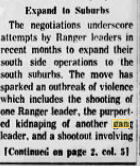
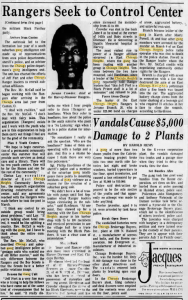
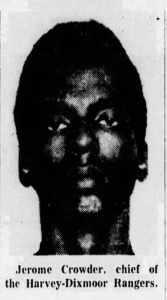
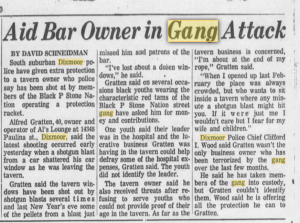
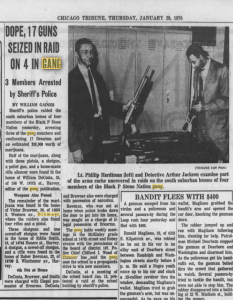
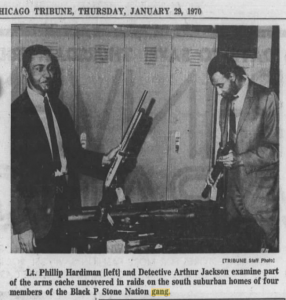
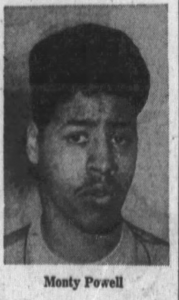
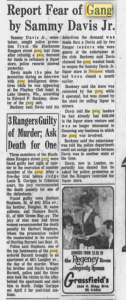
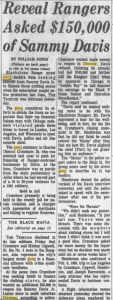
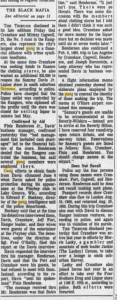
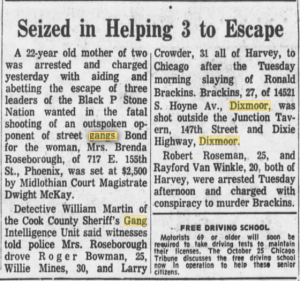
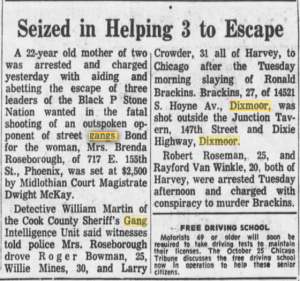
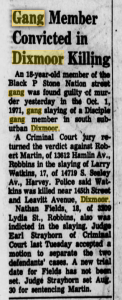
The Dixmoor Rangers was just one of the 15 branches of the Rangers. There was also the 113th Street Rangers from the Roseland area. Other Ranger groups were the FBI Rangers, Golden Rangers, Maniac Rangers, Imperial Rangers, Syndicate Rangers, Russian Rangers, Cossack Rangers, Gypsy Rangers, Traveling Rangers and the Dixmoor Rangers. The gangs that adopted the last name of “Stone” were: Cobrastones, Gangster Stones, Apache Stones, Cherokee Stones, Nova Stones, Rolling Stones, Egyptian Stones, Nomad Stones, Pimp Stones and Four Corner Stones.
Englewood was an important turnout because the Rangers were able to take over from 69th Street down to 75th Street. Once the coalition and conversion of gangs happened in 1966, the Englewood chapter would grow larger, especially between 54th to 56th Street in the Back of the Yards, Englewood, and West Englewood areas. The Garfield Boulevard zone was heavily contested by the Disciples all the way down between Englewood and West Englewood. The Rangers were trying to run it at Disciple expense. Not only did Rangers over here battle ferociously against the Disciples they also fought white and Hispanic gangs from just over the Garfield Boulevard border. Garfield Boulevard is the dividing line between Back of the Yards and both Englewood neighborhoods. The Back of the Yards community was still very white back in the 1960s and the first half of the 1970s and gangs like the Gaylords and Latin Souls fought savagely against the Disciples but now the war with Rangers heated up by 1966. It got so bad over here that Gaylords and Latin Souls considered a truce with the Disciples on several occasions because of how badly the Rangers fought against them. These hard-fought battles made the Rangers a major force to be reckoned with on that Garfield Boulevard border and in later years this corridor gave birth to the Rubenite Stones and the Jet-Black Stones. Rangers would also eventually take turf in the Back of the Yards and crossed that Garfield Boulevard border taking over a good piece of 54th Street and all the way up to 51st Street. All this Englewood turf from 51st to 57th became known as “Moe Town.”
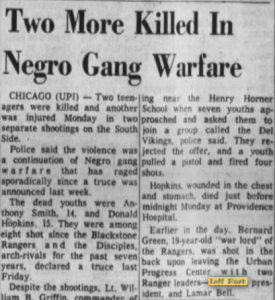
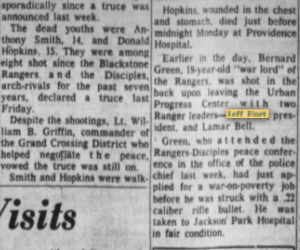
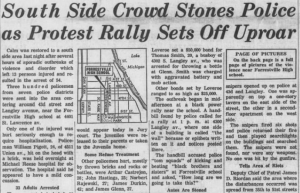

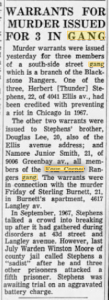
Another legendary take over was in the Oakland neighborhood at the intersection of 39th and Lake Park Place right outside the Lake Park Meadows public housing projects and 43rd and Indiana in the Grand Boulevard neighborhood. This is when the Rangers met Randy “Rube” Dillard (who ran 43rd) and Herbert “Thunder” Stevens (who ran 39th). In 1966 these two men took their gang into the Ranger nation as “Four Corner Stones.” From here Rangers spread very quickly into the Ida B. Wells public housing projects and the Clarence Darrow projects, especially in the 727 E. 38th Street building in the Darrow Homes. At first this group was known as the “Four Corners” and I wonder if this was the same Four Corners gang that started in the 1930s at 35th and Indiana that the Rangers flipped, if so, that is some very deep history.
Another legendary settlement for the Rangers was in the Near North Side community in the Cabrini Green public housing projects. The Rangers met with gang leader Samuel “Two Mac” Dillard and brought him and his gang into the Ranger nation and this is the story of how the Stones came to Cabrini Green in 1966.
Rangers also landed on the west side of Chicago in the year 1966. Rangers were in the North Lawndale area attempting to settle this area alongside Egyptian Cobras and Vice Lords. Rangers were soon having gun battles with rivals although I don’t know exactly which gangs they were conflicting with. As far as I know the Rangers never had permanent settlement in North Lawndale, but they did settle in nearby Austin eventually but 1966 was the beginning of west side Black P Stones regardless. I believe these were the FBI Rangers that settled out west first.
The Black P Stone settlement of the Grand Boulevard community started a long, powerful and permanent settlement of this community that has been strong for generations up to present years. Even as Grand Boulevard has undergone renewal in recent year the Stones will perhaps continue to remain a permanent fixture in Grand Boulevard permanently.
The Rangers settled in the Near South Side community in 1966 into the Harold Ickes public housing projects making these buildings a major stronghold until the buildings were razed.
Now with a massive army of Rangers all over the south side of Chicago, the Rangers now connected with the black nationalist movement and were present when Martin Luther King came to Chicago to march through the south side. In June a rally was held at Soldier Field for 60,000 people to listen to Martin Luther King speak. At this event hundreds of Rangers marched into the event waving a large flag that had a picture of a .50 caliber machine gun on it. The Rangers surrounded the upper deck of the stadium making many people frightened, however, there was no violence at all or ill will, the Rangers were simply introducing themselves to the Black Liberation Movement and the SCLC (Southern Christian Leadership Conference); this is what began the Ranger’s connections to the black nationalist and black power movements. After taking SCLC non-violence workshops the Rangers were able to march alongside Martin Luther King as he made his legendary marches into white neighborhoods that summer (The Almighty Black P. Stone Nation, Moore, Williams).
Chief Bull was especially all about being a black power movement and by 1966, he started encouraging Rangers to start wearing afros to show more black pride. Hairston also opposed drugs whether it was for personal use or for narcotics trafficking. The only vice Hairston had was smoking marijuana and drinking alcohol, but Jeff Fort didn’t even smoke marijuana or use any drugs or alcohol, heck, he didn’t even use curse words.
Eventually Rangers would connect with the Black Panthers. An old tale spun mostly by law enforcement that told a story that Jeff Fort ran the Panthers out of Chicago by pointing over 100 guns at them, but this is far from the truth. The Rangers instead had common ground with the Panthers and there was a mutual respect between the two groups, but they could not see themselves fully working together after they officially met in 1969. The Panthers viewed the Stones as too violent and not political enough, while the Stones considered the Panthers as idealists and pseudo-revolutionaries, thus, the thought of a coalition never came to fruition but there certainly was never any violence or even an ounce of hate or conflict between the two groups; the two groups hating each other is a myth (The Almighty Black P. Stone Nation, Moore, Williams).
By the end of 1966, there was major frustration building up in the Woodlawn community over the violent gang wars between Rangers and Disciples over the crossing of Woodlawn Avenue which served as the dividing line between the gangs. In December of that year, the Presbyterian Church began seeking grants from T.W.O to give to the Rangers so they could seek programs to minimize violence.
In the Spring of 1967, T.W.O received $927,000 from the U.S. Government Office of Equal Opportunity (known as O.E.O). O.E.O was created by President Lyndon B. Johnson to fight his war on poverty. T.W.O’s President was Arnold Brazier who was also a Revered at the Apostolic Church of God and working with Reverend Fry and both men worked with the Rangers. It was because of this connection that allowed T.W.O to disburse the money to the churches that, in turn, disbursed money to the Rangers to run the educational and job training centers. Not all the money went to the Rangers, half went to the Disciples to carry out the same duties. Rangers and Disciples were paid a salary to oversee youths and act as instructors in classrooms. Jeff Fort himself was paid a salary of $6,000 a year. The program was a big success as young black youths including several Rangers were finding employment and even attending college this, in turn, kept many youths off the street and saved many lives.
During the summer of 1967, Rangers successfully prevented a violent riot from occurring on the south side as they policed a very angry community and kept things cool. Ranger popularity grew as now membership was at 3,000 members on record but there were several more thousands unaccounted for.
All went well with the OEO program until November of 1967 when Jeff Fort was thrown in jail on murder charges until the following year for a murder he was later acquitted of. During his time in jail the program became disorganized as many Rangers began engaging in fraudulent activities with the grant money. Rangers would often sign their names as attending the job training centers or education centers then take sign in sheets home to fill in the entries; checks were also falsely signed for. All these actions would later fall under investigation. Without Jeff Fort, the program was without proper leadership and all over a murder case that was pushed on Fort, and it was something he didn’t even do (The Almighty Black P. Stone Nation, Moore, Williams). To make matters worse Eugene Hairston was arrested and put in jail in September of 1967 for conspiracy to commit murder, he would remain in jail during his trial that continued until May of 1968. At the later part of 1967 and early part of 1968, the Rangers were left without leaders that could understand how to operate this program and could understand the consequences of fraud.



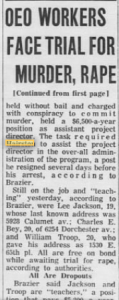
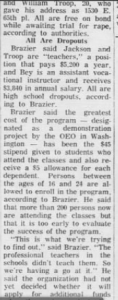
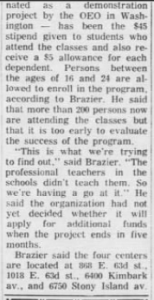
Overzealous law enforcement became a major problem for the Rangers heading into 1968 as police closed in very sharply on the Presbyterian Church. Law enforcement pinned the staggering 1967 crime rate stats on the Rangers. Law enforcement also criticized the church and Revered Fry for harboring these boys and letting them store stockpiles of weapons in the church. Reverend Fry did admit there was a stash of guns in the church but it was for the purpose of collecting the weapons so they could be off the street to keep the streets safer. The weapons were then locked in a safe, however, Rangers often did transfer guns in and out of the church. Boys would drink and party in the church, but Fry said there was nothing he could do about that, and his main mission was to just keep the Rangers off the street and away from violence, no matter what the cost. The church was then raided and this time for the safe full of weapons. On the day they did the raid, Rangers happened to be meeting with agency representatives about employment and housing while others played basketball. The weapons were indeed secure in the safe out of harm’s way, but police still raided the church, and it was said they were verbally abusive while disrupting positive programs (The Almighty Black P. Stone Nation, Moore, Williams).
The police began to declare war on the Rangers heading into 1968 which resulted in several false arrests on mostly Main 21 members. Charges were dropped against Lee Jackson, Melvin Bailey, Allen Christmas, James Lofton, and Leonard Sengali. Illegal search and seizures, harassment, defamation of character and even police beatings plagued the Rangers. This all led to the Rangers lawyering up thanks to Eugene Hairston’s connection with Charles Kettering and the Kettering Foundation.
Eugene Hairston was on trial for soliciting four young boys to gun down three drug dealers at the intersection of 61st and Dorchester. The charges stated that Eugene Hairston ordered boys aged 13-15 years old to carry out the assassination of these dealers because they were taking money from the neighborhood by selling drugs, according to court documents. 13-year-old Dennis Jackson approached a car full of the dealers with a .45 caliber pistol and fired six bullets into the three men, two bullets a piece killing Leo McClure and wounding the two others. Apparently, Paul “Prophet Paul” Martin oversaw the hit from across the street and told the boys when to advance. Before shooting the men, Dennis Jackson said, ” I hear you was messin with the Chief!” (Source: The People Vs. Hairston) Hairston was convicted and sentenced 5 to 15 years, he then was sent to Statesville. Law enforcement considered this a major victory because they had been investigating the Rangers for years with allegations of adult leaders soliciting young boys to carry out hits for them. Police knew the adult members would benefit because they avoided jail time, and the boys would only be lightly punished even for crimes as heavy as murder. Earlier in the decade the neighborhood syndicates did the same to the young Rangers, paying scraps to carry out murders because young Rangers would get light sentences, now the Rangers were grown up and learned from this way of handling business. The young ones enthusiastically carried out the hits because it got them recognized and got them respect. The pay wasn’t big, and it really wasn’t all about the money. In the murder case Hairston was swept into he paid the kids $6 in total to split and gave them a big plate of food according to court documents (Source: The People Vs. Hairston). During the trials Eugene Hairston claimed his innocence and even said the money paid to the boys was for their work as an usher. Paul Martin was brought up on the same charges with the same exact evidence presented but he was found not guilty based upon the poor evidence, but Bull was somehow convicted on that same evidence which shows there was favoritism to convict the leader of the Rangers. It is very much possible the boys took this murder on themselves to make a name for themselves then when trouble with the law came they could have easily just pointed to Hairston, this type of thing always happened to gang leaders over the years.
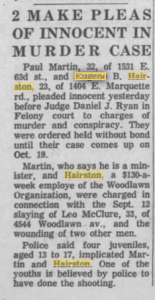


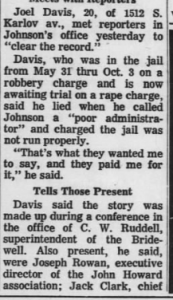
During the time both leaders were locked up law enforcement closed in on the Rangers as a major war with the Disciples ensued until March 4, 1968, when Disciples and Rangers came together to call a truce so they wouldn’t lose their OEO money that paid them a salary of $45 a week. Starting the next day anonymous tips supposedly poured in that the Rangers were stashing several weapons of destruction in multiple locations for the purpose of waging war against the police and the city. A meeting with a group of white communists was blown up after this group offered guns and grenades for a war against the U.S. The Rangers allegedly rejected the offer outright because it would be damaging to their organization but the F.B.I and the papers blew it up as if the correlation was in the works. More harmful rumors circulated, and police were driving down hard on the Rangers on the streets. These rumors and investigations were false, but it became clear that law enforcement was desperate to dismantle the Rangers once and for all. 24-hour surveillance began on the Rangers as they were being made out to be a group of black nationalist terrorists, far from what they were about. What didn’t help is that the feds flipped Main 21 member George “Watusi” Rose who gave lots of false information including the story about the meeting with the white communists, that never happened.
Jeff Fort was released from jail in March of 1968. Fort then assumed control of the organization as now there was lots of disorganization in the nation as branches were ready for full civil war especially a branch known as “Imperial Lovers.” Fort had no choice but to do something drastic to restore order to the nation and this is when he assumed total control and had no choice but to push out Eugene Hairston that was still standing trial. There was major pushback from Paul “Profit Paul” Martin, Eugene Hairston’s most loyal follower and the spiritual leader of the nation. Martin was soon to make a major stir among the nay sayers about Fort taking over and would have very likely led a rebellion against the new order. Martin was then led into an alley and shot in the back of the head three times in 1969. Fort now was fully in charge of an army of 5,000 known soldiers in 1968. The change of leadership was not fully accepted by the whole nation and some groups of Stones and Main 21 members outright opposed it and kept their loyalty to Eugene Hairston. Hairston did accept the second in command position while he was standing trial as he was on the street for some time during his court proceedings, at the time he was alright with being Vice President, the conflict didn’t begin until he went to prison.
An act that helped the Black P Stones bounce back was how they handled the threat of riots proceeding the Martin Luther King assassination in April and all through the summer of 1968. Stones successfully kept things cool once again on the streets for a second consecutive summer while the west side burned during that day in April. Jeff Fort himself organized the Stones to maintain order even when Stones advanced on Mount Carmel school and rocked a bus full of white students. Jeff Fort raised his arm and ordered the attackers to stop immediately, and all the Stones stopped and withdrew, Jeff then ordered his Stones to leave the school alone. After this day, there wasn’t a single shooting between Disciples and Stones for an entire month. Jeff Fort understood the power of non-violent protest even in these early days and became pivotal in preventing the Stones from plunging into destructive behavior that would have made the Stones become public enemy number one and leading to the complete elimination of the Stones, therefore, understanding Jeff Fort is important to Black P Stone history.
In July of 1968, Senator John McClellan or Arkansas held hearings for the investigation of Jeff Fort and the Black P Stones about the management of that $927,431 given to T.W.O for the job training program in which Jeff Fort was considered “Center Chief.” Fort was cross-examined about allegations of taking the money and not using it for the intended purpose especially since leadership continued to face charges of murder, rape, and strong-arm robbery according to court documents. The program was intended to reform the Rangers but instead it was viewed as ineffective as payment was taken without the committee’s expected full results (Source: United States of America Vs. Jeff Fort). The committee had high expectations and did not understand it would take a long time for the program to have full effect. The committee was wanting instant results and did not consider enough that Jeff Fort’s murder charge was vacated and the fact that him being locked up caused the program to become misguided without leadership. Never was Eugene Hairston’s murder charge looked into about the reason for the crime. Courts and the public only saw that he guided teen boys to kill three men, but never was it viewed that the reason for the shooting was to clear out rogue drug dealers pushing Heroin onto these streets without authorization, thus, causing harm to the community. Granted, the solicitation of teen boys to commit the murders indeed is a tear at moral fabric, however, in these organizations younger members were more than willing to commit such crimes as they eagerly looked for advancement and respect, therefore, were used for these crimes or went rogue and did the crimes to be noticed without leadership backing. Without many other positive role models to look up to in such a destitute area, youths often only had hardened gang leaders to look up to as heroes and gang leaders used this to train these youngsters on how to come up and become effective in the gang just like how a manager of a company trains employees to one day become managers. Most times founders and overall nation leaders take no part in such crimes it is usually lower level leaders that would use young boys for self-interest and not for the interest of the nation. At the hearing, the only information Jeff Fort provided was his name and once it got to asking him his address his council advised him to say no more. Fort then stood up, raised a clenched fist, and walked out, he would later face charges for this. One thing the committee didn’t bring up at all was the fact that about $200,000 of the grant money was sent back to the federal government as unspent money, not only that of the remaining over $700,000 only about 33% was actually paid to the Rangers, $1,467.79 of that was put into Jeff Fort’s pocket, these were numbers largely ignored. Perhaps if these numbers were brought to light, it could be seen how much less greed came into play (Brune and YLISELA, JR, Nov 1988, The Making of Jeff Fort).
These organizations that funded the Rangers were all fighting each other to push money into the Ranger’s pockets without giving the best guidance. Bottom line is these organizations needed to provide money to groups like the Rangers and Disciples because it justified their budgets. Without these gangs in existence these groups would have far more limitations. These groups thrived on the wars between Disciples and Rangers because it gave them justification to ask for more money. The sole purpose of the money was to pay these gangs to detract from gang warfare and when violence was reduced it was a big win. Law enforcement also benefited from the gang wars between Disciples and Rangers because it gave them more excuses to lock both organizations up and attempt to destroy their entire infrastructure. Law enforcement would even grease the wheels a little by pitting the two gangs against each other by putting word out on the streets that one gang was about to move on another, a form of egging them on. There was actual evidence that the FBI sent letters to gang leaders giving them alleged intelligence the opposition was about to hit them which is an obvious attempt to get both sides to destroy each other, thus, allowing law enforcement to come down on both groups. Law enforcement could always get further justification afterward saying both groups were black nationalist groups rising to become terrorist organizations pointing out the violence as an example (The Almighty Black P. Stone Nation, Moore, Williams). This is why it became so pivotal for leaders of all the gangs to work tirelessly non-stop to keep up peace treaties because leaders like Eugene Hairston, Jeff Fort and David Barksdale all knew a dirty game was being played by law enforcement and these social service agencies.
The peace between Stones and Disciples was shattered on May 8, 1968 when Ellis Rebel Stones attempted to assassinate Disciple leader David Barksdale after falling into a trap. The Ellis Rebel Stones were the only Stone section in the western part of the Woodlawn neighborhood between 65th and 67th and Ellis and the Disciples had always wanted them out. Chicago police came to talk to David Barksdale and Barksdale mentioned that these Stones liked to shoot Disciples anytime Disciples got near their territory and Barksdale wanted to prove his point to these detectives. Barksdale asked the officers to follow him down to 65th and Ellis and once David and his known car made an appearance Andrew McChristian, Melvin Bailey and Edward Dinkins opened fire on Barksdale’s car and detectives swarmed in right away to arrest the three shooters (Source: People Vs. McChristian) (The Almighty Black P. Stone Nation, Moore, Williams).
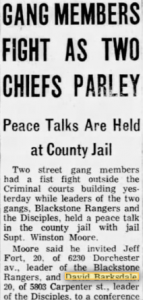
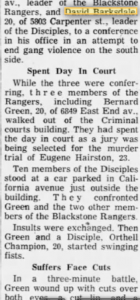

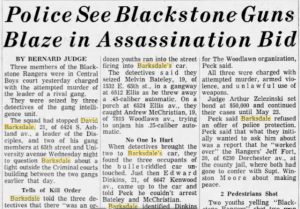
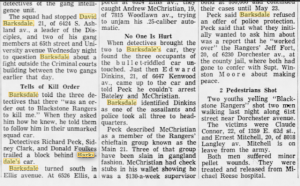
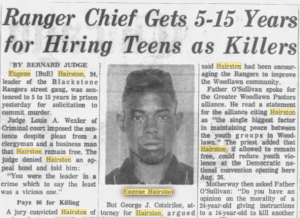
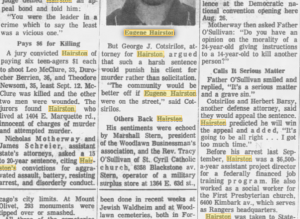
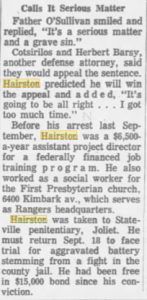
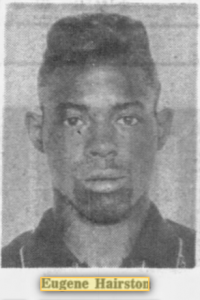
1968 was a year of big wars between Disciples and Stones in the Clarence Darrow projects. Stones were fighting to make the 727 E. 38th Street building all theirs and became fed up with Disciples hanging out near the building. One September night as Disciples were shooting dice near the building, Stones planned the “Svengali Massacre.” That night Stones tucked shotguns and handguns in long coats. The Stones then got into the power source for the 727 building and cut the power creating a spooky atmosphere. As the darkness befell the project building a blaze of gun fire suddenly sparked through the darkness as bodies hit the ground. Stones chewed their way through a massive crowd of Disciples gunning down 17 young men all shot in the darkness. Housing Authority guards became alert and shot it out with the Stones for a while. It was miraculous not a single person died which is why this shooting only had one newspaper appearance in the Chicago Tribune on September 10, 1968 (United States of American Vs. Williams).
The F.B.I liked to publish reports that Stones were anti-white and were perhaps rising up against the white man. In 1968, the F.B.I reported the Stones in the suburb of Harvey were assembling all black groups under the Black P Stone nation in what they considered “racial tensions.” There were also reports Stones were gathering heavily in the suburb of Chicago Heights for the purpose of attacking the police which proved to be false. Reports also said Stones were trying to extort money for contributions to businesses owned by singer Sammy Davis Junior to support his businesses in the Harvey and Dixmoor communities which was also false (The Almighty Black P. Stone Nation, Moore, Williams). It is true that Stones were being paid by Davis to protect his businesses but there was no extortion, there was just a falling out. There were even allegations that the Stones were attempting to disrupt the Democratic National Convention on August 26th to get even with Mayor Daley for opposing further funding to OEO into the pockets of the Stones but not a single Stone member ever showed up at the convention, another false report (The Almighty Black P. Stone Nation, Moore, Williams).
Despite all the issues with government investigations the Stones faced, Stones were still working with community groups and receiving payment. In 1968, Jeff Fort was hired by the Kenwood Oakland Community Outreach (KOCO) program in which he was made to be Youth Director. KOCO also lent the Stones $100,000 and Reverend Curtis Burrell himself lent them $3,000 to open a restaurant on Woodlawn Avenue (Brune and YLISELA, JR, Nov 1988, The Making of Jeff Fort). Fort was also leading marches against disadvantages people faced in the black community with housing and overall poor treatment. On the flip side the Stones were also extorting businesses for protection and killing rivals in the streets. Stones also didn’t want to see any grant money going into any other organizations, so they shook down all other groups to make sure the money channeled their way. Not only that, business deals always fell through with organizations and individuals including Sammy Davis Junior as Stones accused them of trying to take advantage of them, this was the dark side of the Stones that caught negative attention and of course all this was blamed on the highest leadership, however, running an organization with thousands of members had extreme challenges and almost all this bad behavior was not passed down by the highest leadership and was actually condoned. Even the arrangement with Reverend Burrell eventually fell through in 1969 when Burrell became enraged that some Stones still demanded their paycheck even though they didn’t want to do the work. When Burrell was confronted by a Stone one day demanding to pay him even though he wouldn’t show up for work Burrell fired a gun at the floor near the Stone because he was blocking Burrell’s path. This all started a conflict between Stones and Burrell’s backers and Burrell was in danger until Burrell raised an army of hundreds of angry people in the community. The beef was eventually squashed but this was a big example of how control was being lost with the community organizations.
Despite the investigations on the Stones and Jeff Fort and Jeff Fort walking out on the Senate hearing in July of 1968, a major shock came to law enforcement when an Illinois politician sent an invitation to Jeff Fort to appear at the January 1969 Presidential inauguration ball. Jeff Fort declined the invitation and instead sent Henry “Mickey” Cogwell the Cobrastone leader to the ball alongside Herman “Moose” Holmes another Main 21 leader. While Mickey Cogwell was mingling with high society politicians making the Stones look great Chicago police were back home trying to arrest him for crimes and even went to his house just to find out he wasn’t there and worst yet when they found out he was invited to the White House they had a major fit. Law enforcement all over the Chicago area felt betrayed that Stone leaders were invited to this event. This event was further solidifying Mickey Cogwell’s political connections which of course would help connections to the whole Black P Stone nation.
In January 1969, Fort developed a business and warfare strategy by calling a truce and peaceful meeting with Supreme Gangster leader Larry Hoover. The Gangsters and Stones had been at war perhaps since the Supreme Gangsters formed in 1964. As of 1968 the Gangsters were now engaging in a bloody war with former close allies the Disciples and Fort used this opportunity to establish an alliance with Hoover. Larry Hoover’s Gangsters were built upon making money and hustling in the streets, while the Stones were on a similar page with making money. Larry Hoover accepted this alliance between the two nations and a total cease fire went on for about a half a year with some violence here and there. One violent incident involved the Double Six Kings, a Stone group from 69th and Halsted area of Englewood thinking the war was still on with the Gangsters. This ended up involving Larry Hoover’s brother Charles Hoover and this was the beginning of the end of the Stone and Gangster relationship. By the summer of 1969 the Gangsters allied with the Disciples to create the “Black Gangster Disciple Nation.”
Since 1960, the Black P Stones were a money-making organization. The oldest way the Stones made money was to carry out favors and hits for adult small black syndicate groups on the south side. Soon the Stones were making money just from imposing taxes on drug dealers, pimps, gambling dens and other small rackets. Basically, in Woodlawn and eventually other new territories you could’t make money without Ranger approval and without paying a percentage. This was a hustle that worked for many years since the 1960s and the Stones also developed the way of making money by visiting local businesses and offering paid protection. There have been many criticisms to this tactic because business owners were left with no choice but to pay the Stones to protect their property or the Stones would not only leave the business vulnerable to attack, they would also rob that store since it wasn’t on their list. The paid protection was scandalous because it assured that Stones would not attack the store which is basically paying someone to not mess with your own property, very hard to swallow. But one has to view this from another perspective, Woodlawn, Englewood, West Englewood, South Shore, Bronzeville area became very high crime areas in the 1960s and not only would gangs rob and steal from businesses, criminals hit these locations making the store owners highly vulnerable to being robbed and vandalized. When the Stones offered protection, not only did they stop their own members from victimizing the business they also posted signs on the businesses warning the community and visitors that this was Black P Stone property and if you dared attack there would be dire consequences. Stones placed signs that displayed the pyramid and gave a strong warning that this was Stone property and property of the Chief. In these high crime areas police patrols were scarcer and just about every store would suffer vandalism and robbery which was very costly. Paying the Stones was often a better option as the store owners would not have to deal with sudden destruction or robbery. In areas more absent of law enforcement this was the best option in many cases. Violent examples were made in the streets for offenders that touched these stores that were marked by the Stones. Perhaps a robber or vandal was beaten severely in the streets for everyone to witness or bodies would be found later as this was considered direct disrespect to the Chief. The stores most collected from where Jewish owned businesses that usually charged higher prices for products, thus, somewhat taking advantage of the community and the Stones were taking some of the extra money back. Stones often left black owned businesses alone because they supported black entrepreneurs especially since there were very few. Stones would often protect these stores for free. Stones would always send different young boys to the stores to collect the money, never would the same Stones show up to collect money. Stones also often had members come in from outside the neighborhood, so their faces weren’t as known, this was a smart operation. One needs to understand this in perspective. If you are a store owner in these communities where police patrol scarce you can more easily fall victim to crime which will cost you more money than the money you give to the Stones, in the long run this became a better deal. Not only is it less costly the Stones were better security and more watchful than the police because if they allowed criminals to do anything to the business it insulted the whole organization and made other organizations think they can take over.
According to Jeff Fort and many of the Stones in the 1960s they played the role as guardians in the black community and their business protection plan was one of the examples. Other examples were how the Stones controlled the drug trade on the south side as they taxed and monitored all the dealers in their vicinity. Not only was this arrangement beneficial financially to the Stones but it was also a way the Stones could control how the business was carried out and what types of customers come into the neighborhood. The Stones themselves were not drug dealers and rules forbid the sale and use of drugs for the nation in the 60s. Even Jeff Fort himself had once threatened Milwaukee Italian Outfit leader Frank Balistreri that if he kept supplying heroin to the black community on the south side, he would kill him but over time this attitude would change especially once the Stones wanted to dig deeper into the drug game.
The main reason Eugene Hairston was locked up in prison for the 1967 murder was because the charges stated he was removing three Heroin dealers from the neighborhood. These were non-gang related curriers that were bringing the dope to the community off the radar from the Rangers. Hairston himself always wanted to remove any Italian Outfit connected dealers of any sort, therefore, any direct connection to the Outfit was prohibited in Stone territories. This attitude would all change when Mickey Cogwell explored the possibility of involving the Stones in the direct sales of drugs on the streets. Cogwell had friends that were connected to the Chicago Outfit and Cogwell had been working with Outfit members for some time in his involvement with the policy numbers racket. Cogwell also worked with the Outfit to control several restaurants, nightclubs, and hotels in the black communities on the south side and west side. He also was known for providing muscle to extort business owners to unionize under the Outfit controlled restaurant unions. Since government funding had mostly dried up by 1969 due to the Senatorial investigations, Mickey Cogwell and Reico Cranshaw were the first Stones to bring the nation into the direct drug trade business. Chicago Police Department’s G.I.U. group claims to have photos and surveillance of Stones and Italian Mafia associates meeting to discuss this business. The first of these meetings was with Joseph “Little Caesar” DiVarco, Joseph “Big Joe” Arnold and Morris Lasky. I don’t know the full extent of the deals, but this was supposedly when the Stones began to directly partake in the drug trade mainly in Heroin and prescription Ts and blues. The motivation for this connection was because Stones needed the money as their numbers had exceeded 6,000 members by 1969 and the legitimate forms of money they were receiving prior were either non-existent or minimal. The Stones were the first gang to engage in higher level drug marketing and this is how Jeff Fort got the reputation as being the king of the Heroin business on the south side even though he was not involved in this early deal. This started out a deal for just Cranshaw’s Stones and Cogwell’s Cobrastones (The Almighty Black P. Stone Nation, Moore, Williams). Because of this business deal with Cogwell this is how the first major Heroin distribution business came to the Robert Taylor projects, especially in “The Hole,” the cluster of three buildings around 53rd and State in the Washington Park neighborhood. This Heroin involvement was not big enough to catch the attention of law enforcement much as mainly Stones were known for selling Marijuana, Codeine and other narcotics and pills. Stones also began robbing other drug dealers in the area as they went to great lengths by even robbing drug dealer homes.
The Stones also made a big move in 1969 when they took over the partially abandoned Southmoor Hotel located at 67th and Stoney Island at the border of the Woodlawn and South Shore communities. Legends say that T.W.O helped the Stones take over this building because right before hand T.W.O had an office in the building and met with Stones here. Legend also says that the Stones pestered the owners and basically forced them to leave the building while the Stones took over the top floor penthouse on the roof and the hallway leading to the penthouse. Stones put furniture as a barricade so police couldn’t easily rush in and they had lookouts inside the building and on the rooftop, this became the new headquarters for the Stones. This was also prime property because it sat next to a series of hidden trails that branched all through the South Shore community down to Woodhull Park at 73rd and Cornell. The trails also continued to the South Chicago community down to an old park near 83rd and Colfax. The trails even extended out to Pocket Town in the Greater Grand Crossing neighborhood and even ran north above Jackson Park into Hyde Park and even up to Kenwood and into Oakland by the Lake Park area. This allowed large groups of Stones to move in silence from place to place along the south side without detection. They could bring large groups in for surprise attacks or possibly for theft operations. Sometimes all the Stones would arrive on bicycles and surprise everyone when they suddenly emerged. For about 20 years the Stones controlled this trail system until the city covered them over in the late 1980s to stop this activity.
By 1969, a seeming war began on the streets between law enforcement and the Stones as police continued to raid Stone hangouts and brutally beat young black males in the streets and in custody, sometimes resulting in death. Law enforcement considered the Stones to be animals and dangerous criminals, therefore, they became increasingly brutal in their law enforcement methods. This was even felt by the Disciples as even David Barksdale, leader of the Disciples also suffered a brutal beating while in police custody. Frustrations boiled over until a March shooting of police officer Richard Peck brought the Stones into a bigger spotlight. Peck was shot at least 15 times while he sat in his squad car at the intersection of 62nd and Woodlawn. Black P Stones were the shooters of Peck and now the police waged a bigger war on the Stones even though Peck survived the onslaught and even was able to do an interview in 2007 for the History Channel’s T.V. show “Gangland” for the episode “Stone to the Bone” which was about the Stones. Law Enforcement once again closed in on Jeff Fort as he was charged with the battery of a postal worker in June of 1969. As Fort was facing legal issues and sitting in jail, he caught wind of a hustle one of his main 21 members was involved in. He had found out that William Throope was selling lots of Heroin just like other Main 21 members like Mickey Cogwell and Reico Cranshaw. Just like Cranshaw and Cogwell Throope was connecting to the Italian Outfit through a west side connection. Throope was getting many of the Main 21 members connected in with the Heroin trade and this is when the Stones started getting in deeper with this business. Fort now was fully aware of what his Main 21 was up to and he decided to authorize the business, something Eugene Hairston would have never consented to, but Fort needed $80,000 in bail money and wanted payment from then on. Throope was supposed to be the one to pay this $80,000 debt but he never paid all of it to Fort and even though Jeff didn’t directly order it, Throope ended up getting shot up for not paying the Chief. For the first time, the drug game was sanctioned by top leadership including Fort now as of the Autumn of 1969 (The Almighty Black P. Stone Nation, Moore, Williams).
There has been a story that has floated around that Jeff Fort personally met with Milwaukee Outfit leader Frank Balistreri for Fort to officially take over the whole drug game from the Outfit. The meeting was supposedly arranged by youth Outreach worker Charles Lapaglia that was supposedly known to police as a low-level Heroin dealer connected to the Outfit, making Lapaglia seem to lead a double life. Lapaglia was grilled to death in the Senate hearings in July of 1968 but other than that it seems like this is the closest Lapaglia had a run in with law enforcement. The man was able to continue as a youth worker well into the 1980s which doesn’t fit the profile of a mafia connected drug courier that supposedly dealt in the stuff since the 1960s. Anyway, legend has it that Lapaglia personally brought Fort before Mob boss Frank Balistreri. Legend has it that Jeff Fort came bearing a gift of a $10,000 fur coat that Frank Balistreri disrespectfully tossed outside to be used as a door mat and Jeff Fort scurried out of there when the meeting was over. Well, I will poke big holes in this story that don’t add up. First, Frank Balistreri was put in prison for income tax evasion in March of 1967 in a federal prison in Sandstone, Minnesota. Frank Balistreri was then locked up until June of 1971. Before March of 1967, Eugene Hairston was still a free man and very much in charge of the Rangers, he most certainly would have never sanctioned any Heroin business and he would have possibly even tried to kill Jeff over it if he was involved. Not only that Jeff Fort himself was threatening Balistreri about bringing Heroin to Stone territories, therefore, no way this meeting happened before March of 1967. The meeting would have had to happen by June of 1971 but at that time Jeff Fort was in jail too since April while he was on trial again for the same defrauding issues brought up in the Senatorial hearings of 1968, so there is no way this meeting could have happened before 1976. By 1976, the Stones were already well plugged into the Heroin racket and now had become El Rukns. New El Rukn doctrines forbid the sales and use of drugs especially Heroin that was outlawed until 1985, so after 1976 wasn’t likely either. I’m not saying the meeting didn’t happen but what I am saying is, I highly doubt Jeff Fort was there for it. Jeff Fort also would likely have not tolerated the fur coat being shoved in the mud right there on the spot, he would have likely walked right out. There is no doubt Fort eventually sanctioned for participation in the drug market and perhaps Stones did meet with Balistreri in the 1970s, but it wasn’t Jeff that attended because the men were both locked up at different times and could not meet. It appears the main hookup into the trade was all done in the fall of 1969.
As I stated before, the Stones were big into fashion and setting the trends for the neighborhoods they lived in. By the later 1960s they wore the afros accompanied with dark ray ban sunglasses, combat boots and red berets. When out on the town, Stones could be seen wearing long fur coats with nice styling hats, pimp canes, platform shoes and lots of color heading into the 1970s.
In the year 1969, student programs began at Senn High School in the far north side neighborhood of Uptown. This bussed in many south side black youths to this school including members of the Black P Stones. Soon, many black families Found Uptown to be an affordable community although it was blighted and impoverished. It was a mostly impoverished white community and when the Stones settled in this neighborhood in 1969 white gangs became infuriated like Gaylords and Uptown Rebels that both started here that year due to increased black and Hispanic migration. The crime rate happened to increase too which was blamed on black and Hispanic families; therefore, the Stones settled these streets to protect the black community. The Uptown Black P Stone settlement was the first Black P Stone section to settle on the north side of the city. The drawback was these early Uptown Stones found conflict with the Disciples that arrived at the same time. The Stones would survive these streets for decades to come especially in Argyle section of the community, these Stones are a large chapter and have permanence into current years.
In the year 1969, black migration came to the more southern streets of Roseland as black families were moving more south of 95th Street. As black families moved further south in Roseland, they began crossing the eastern and southern borders into the Pullman, West Pullman, Morgan Park and Riverdale communities. The mostly white communities often fought back by imposing restrictions for the black community to use public resources such as, access to better schools and recreation. Many deep south side whites became violent and greaser gangs from Pullman and Roseland became vicious. Among all this racial strife came the Stones to settle these streets in heavy volume in 1969. The Stones arrived in the Altgeld Gardens projects to address the growing crime rate and restrictions Riverdale residents faced when trying to use public facilities in nearby West Pullman and Pullman. Within a short amount of time Stones conflicted heavily with Disciples settling in Riverdale but up to present years the Stones have been heavily engrained on the streets of Riverdale and the Altgeld Gardens. In West Pullman and Pullman Stones aided the growing black community facing racial conflict on these streets but soon Stones got caught up in wars and extreme violence with the Disciples making their cause not look as good. West Pullman and Pullman would become major community areas for the Stones that would last decades up to present years.
The year 1970 would prove to be a very trying year for the Stones. By August the Stones were at war with KOCO and Reverend Burrell. On August 5, Jeff Fort even held a press conference at the First Presbyterian Church condemning Burrell, his group and Senator McClellan, calling McClellan a racist. This press conference was used for the television show Gangland in 2007 showing Jeff Fort wearing his floppy hat wearing sunglasses. The video byte showed him saying “there would be no killing without killing.” The T.V. show showed this in reference to Jeff Fort making this conference so he could threaten the Chicago police that there will be bloodshed, but, this video was a threat to Burrell and his group, there was no public threat to police. Once again disinformation showed its ugly head.
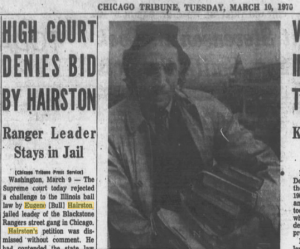
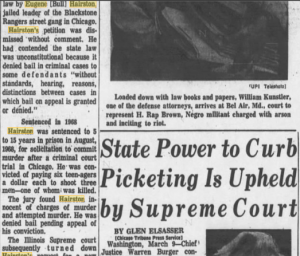

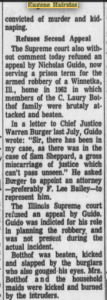
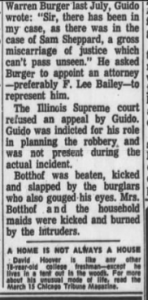
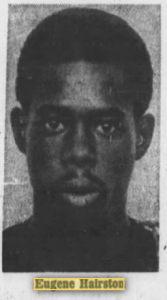
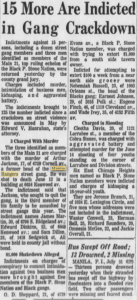
What caused the mix up with this press conference as being a threat against the Chicago Police was the shooting death of patrolman James Alfano on August 14, 1970, right outside the SouthMoor Hotel in an alley behind the building. Alfano came to the scene to investigate a gang fight in the area but as he got out of his car snipers on the roof opened fire on Alfano. Alfano eventually died from his wounds two days later after undergoing two cardiac arrests and the loss of lots of blood. The reason for the shooting was frustration built up from the Stones after police had raided the headquarters and beat members of the Stones in the process. Police were also doing brutal sweeps in the area rounding up Stones and brutalizing them. The Stones reached the peak of frustration and were now ready to shoot any police that came near the hotel and Alfano ended up being the target. Main 21 leader Charles Edward Bey was one of the Main 21 members arrested for the shooting. The Stones were then under hot water after Alfano was shot and now the world was shown the ugliest side of the Stones. Stones held a news conference right after the shooting to share their side of the story until it was broken up by police claiming they were responding to reports of gun fire, but the reporters even stated they heard no gun fire, therefore, the breaking up of the conference seems suspicious (New York Times August 18, 1970). Crooked police officers brutalized the Stones until the retaliated opening fire on an innocent police officer that was originally not involved in the brutality showing how harmful these crooked police procedures were as it cost the innocent life of one of their own just trying to do his job.
Later in the year 1970, Jeff Fort now faced new charges in September of attempted murder, kidnapping and helping someone escape capture. Fort attempted to flee to Algeria but was apprehended in New York in October. He ended up fighting the charges and won and was out of jail by December as the charges ended up being prejudiced and bogus put together by overzealous police officers. Fort was then arrested again for mob action after he took part in a protest by the University of Chicago to rename Midway Plaisance after Jerome “Pony Soldier” Cogwell that was recently slain in The Hole at the Robert Taylor homes. Police came and reported the Stones were involved in mob action and causing a disturbance, but all the neutral witnesses nearby said it was a very peaceful protest. All this fighting legal battles in court caused Jeff’s leadership to falter as he now didn’t have as much time to tend to Stone business as he fought his own legal battles, and this is when internal strife was beginning.
More troubles came in April of 1971 when Jeff Fort and other top Main 21s were now brought up on charges of defrauding the federal government. The investigations since 1968 had finally brought charges and now Jeff Fort would remain in jail during his trails leaving the streets wide open without leadership. Authorities thought they were taking the Stones down but in reality; they were just creating a wild organization without a central leader. At the time, the Stones sorely needed a central leader especially since Hairston and Fort set up the nation to be reliant on needing this type of leadership. One of the other major downfalls was the involvement in the drug game that caused many Main 21 members to feud among each other over drug profits and without Jeff there to cool things down violence between Stone groups flared up. Another issue was many Main 21 members began using Heroin, as the access to the drug now became easy. The final conviction of Jeff Fort came down in 1972 while he was in jail and he was sentenced to five years in prison with one year served, he would be sent to Statesville prison in Crest Hill Illinois.
During these crucial years while both Fort and Hairston were locked up the Stones began a decline and a disorganization in leadership. Eugene Hairston and Jeff Fort were both struggling to bring about order over the nation from behind bars but each of them had their own agenda and this made them rivals in many ways. Both men were locked up in Joliet area prisons, Fort was in Statesville in Crest Hill and Hairston was in Joliet Correctional. As far as I know there was no action to their rivalry while both men were locked up in Joliet area prisons. Jeff Fort became fed up with Main 21 members acting disloyal and not obeying laws or paying dues, therefore, it became time for the Chief to set examples. When Main 21 members broke the laws and showed disloyalty they were executed, this was the only way to maintain order while the Chief was locked up (Source: United States Vs. Andrews).
In the early 70s the Stones would experience growth as white flight was running its final course in the area of 71st to 79th Street in South Shore which prompted Stones to advance into this area that faced rapid decline after this South Shore white flight pattern was more devastating than the previous white flight north of 71st Street. Stones were then able to establish themselves very well on these streets setting up permanent sections like “Terror Town.” Stones took over apartment buildings, condos and town homes and older gang members bought many houses in this area to raise their families. This was the beginning of a major legacy of the Black P Stones.
In May of 1974, Jeff Fort felt the need to gain power in a key area on the south side. This coveted area was the intersection of Oakwood and Drexel in the Oakland neighborhood. At this intersection the Stones wanted to run out any drug dealing opposition by force and to even take it as far as running out all competition in the nearby public housing projects in the Ida B. Wells, Clarence Darrow Homes, and Madden Park Homes, but mainly Ida B. Wells and the “727” building of the Clarence Darrow Homes located at 727 E. 38th Street. This all started with the murder of Gilbert Collins who was shot to death in his apartment near 38th and Cottage Grove by a Stone hit squad consisting of Sammy Knox, Anthony Sumner, Harry Evans, Jackie Clay. The bullets were meant for his brother Michael but the mistaken identity cost Gilbert his life, regardless, the word was put out that the Stones were coming to run it. Later on the same Stone hit squad consisting again of: Sammy Knox, Anthony Sumner, Harry Evans, Jackie Clay shot up Gregory Freeman as his body was found in an alley by 40th and Drexel. Stones then talked to or threatened witnesses to the murder to not talk to the police and the charges were dropped (Source: United States Vs. Andrews).
Stones also pursued their own over the new bigger drug trade when examples were made out of two Main 21 members Willie McLilly and Roy Love as they were both assassinated by another hit squad with one of the same guys consisting of Alan Knox, Felix Mays, Andrew Craig and Harry Evans who shot up the men as they sat in a car at 83rd and Ellis in the Chatham neighborhood on November 29, 1974 as the assassins were allegedly acting on orders from Jeff Fort for mishandling the narcotics trade and being disloyal (Source: United States Vs. Andrews).
In the late part of 1974, Christiana Bey the National Secretary for the Moorish Science Temple of America (MSTA) paid both Fort and Hairston a visit while they were in prison. Hairston brushed her off and was not interested but Jeff Fort was all ears. Bey taught Jeff Fort that black Americans descended from “Asiatics” and “Moors.” To sum up these teachings, the descendants of black Americans came from a superior civilization that once ruled a large piece of the world. During slavery days, Moors were exempt from slavery and only “Negros” could be slaves, thus, honoring Moroccan Moors as superior and not classified as negros. In the 18th century, George Washington covered this fact about the Moors up to justify the enslavement of them and soon these tribes forgot their identity and became part of the enslavement and oppression of American society. Teachings also stated that Islam was the natural religion of Africans, and that Jesus was of another color then killed by the Romans to create Christianity as their legends distorted him into a white man. Teachings also stated that the black man is superior to the white man and the white man has kept the black man at a lower level out of fear of the black man’s superiority. These teachings were uplifting to Jeff Fort, and he continued his visits with Bey even after he was transferred to Leavenworth Federal prison. The MSTA had started a major recruitment drive and was trying to convert as many blacks as possible and converting Jeff Fort and the whole BPSN was a major step for them. By 1975 Jeff Fort was fully converted into the nation of Islam and followed the MSTA teachings.
While Jeff Fort was converting to Islam Eugene Hairston faced trouble in Joliet when he was accused of threatening another BPS affiliated inmate who wanted to leave the gang. A prison disturbance also went down on April 22, 1975, when a religious group known as “Beni-Zaken” helped inmates carry out a disturbance by bringing drugs to Eugene Hairston so he could use them to control Joliet Correctional as Hairston was now beginning the earliest stages of trying to take over Joliet prison now that Fort was moved, this action caused a prison riot that resulted in one death. Even though Hairston denied the cause of the riot and threatening another prisoner he was transferred out of Joliet to Menard Correctional all the way in southern Illinois. The idea was to get him far away from Chicago area contacts. After his transfer in early 1975 Hairston connected with Herbert “Thunder” Stevens who was back in Statesville. After Jeff Fort was transferred, he gave Thunder full control of Statesville. Thunder was also the leader of the Titanic P Stones formerly known as Four Corner Stones out of Bronzeville/Grand Boulevard. Thunder was on good graces with Eugene Hairston and Jeff Fort which often didn’t happen with Stone leaders, they either chose one or the other. Fort was for sure locked up without parole until March of 1976, but Hairston was up for parole later in 1975. A big decision needed to be made by Stevens to either continue following Fort of go with Hairston who was more likely to get out and take back over the Stones. Stevens hedged his bet on Hairston and took the Titanics under the wing of Hairston; now Hairston was running the BPSN in both prisons which was a major power move and showed that he was still more than relevant. Hairston then sent orders to his men back on the streets to get ready to take it all back and ordered his younger brother Leroy “Lil Bull” Hairston to venture to 43rd Street and connect with the Titanics and assume immediate leadership. Leroy Hairston gathered many to support this take over and several Stones found the courage to begin this coup which was a concern to Fort’s followers who were still the majority. As this coup was about to arise Mickey Cogwell stayed out of it and was willing to just take his Cobrastones in an independent direction. Jeff Fort appointed his younger brother Bennie Fort to run the Fort supporters. Soon a war ensued in 1975 between the younger brothers and this got Lil Bull thrown in prison for violent crimes. The war was a mess and Eugene Hairston was up for parole in that same year and this was a threat to Jeff Fort and his supporters. Jeff Fort then had many phone conversations with Mickey trying to convince him to run the nation because he would be a better acting Chief than Bennie, finally, Mickey agreed to take over the nation. Mickey then set out into the streets and took control of the Fort supporters and once this happened and many of Hairston’s supporters got word Cogwell was stepping up they jumped sides to stand by Cogwell because he was so respected. The primary branch still on Bull’s side was the Titanics. In Statesville the momentum shifted as Fort’s Stones took the power away from Thunder. The Titanic Stones then pretty much dissolved in the prison system while Willie “Dollar Bill” Bibbs took over as Chief of the Titanics on the streets. Dollar Bill brought the Titanics under the wing of Jeff Fort’s side which made it look like Bull’s attempted coup was just about finished.
Later in the year 1975, Eugene Hairston was granted parole and he returned to a crew of followers still loyal to him. It would take a lot of rebuilding for Hairston to regrow support and take back over but Fort’s guys were still not going to risk it. It was said that Jeff ordered a hit on Hairston but there was never any evidence of that but there was indeed an assassination attempt. As Hairston was walking along 70th and Paxton a few blocks from where he was staying, a man jumped out of a car and fired 8 bullets, two of which struck Hairston’s left wrist and one bullet struck him in the back. Hairston fled to a cleaners on 71st nearby and asked for help, he survived. After Hairston’s assassination attempt, he realized he could not take over the main bulk of the Stones, therefore, he packed up and moved up north to the north side of the city where random Stones living up there were out of network from the main branches for the most part. Hairston organized the Stones up north in areas like Uptown, Rogers Park and Lincoln Square. These Stones became “Blackstones” and would not honor the Black P Stone nation and the “P” was dropped.
1975 was the exact year Stones settled in Rogers Park and Lincoln Square and have become permanent residents in these communities. Rogers Park Howard Street was known to be a seedy area since the 1940s. The Jonquill Apartments and Juneway Terrace Apartments were known to be rougher and shabbier apartments where vicious white gangs and criminals dwelled. In the year 1975 many whites moved out of this area and public housing helped black families establish themselves in these two apartment complexes and along Howard Street. The white community of Rogers Park was outraged over this and white gangs like the Simon City Royals and Hispanic gangs like Latin Kings often victimized groups of black youths this is when Disciples and Stones were established on these streets in 1975. The Stones made this part of Rogers Park their permanent home establishing a large following for generations to come, and they still remain a solid part of the Jonquill and Juneway Terrace Apartments. In the same year Stones arrived on the unwelcoming streets of Lincoln Square which was a north side white neighborhood that became affordable for black families. Black families were not welcomed by many white residents and racial strife ensued. White gangs like Insane Popes and Gaylords often attacked groups of black youths; therefore, the Stones arrived in 1975 and would became a permanent part of the Lincoln Square community for decades to come even surviving gentrification just like in Uptown and Rogers Park.
On March 12, 1976, Jeff Fort was released from Leavenworth prison with a stipulation imposed upon him that he was not allowed to officially reside within the city limits of Chicago, therefore, he chose to move to Milwaukee because he had a lot of family in that city. Fort’s return was anxiously awaited as several followers gathered to the city of Milwaukee for hopes that their leader would help show them the way to restore the nation that had now become divided. Fort came out of prison with enlightenment, and he was willing to share all the teaching of the Moorish Science Temple with all those that would listen. Jeff threw an open house type celebration in a building that served as the temporary headquarters so that he could share his new uplifting and spiritual beliefs. Some of the leaders respected the new ways and wanted to convert to Islam alongside Fort but many others declined as they felt they should remain Christian, and this new Muslim religion was foreign and something they wanted no part of.
Once again, this nation became trendsetters but this time it wasn’t for fashion it was for religion. Afros were now replaced with braided hair or cornrows, and the colorful outfits of the first half of the 70s were replaced by simple shirts, pants and sometimes Shriner hats worn at worshipping events. El Rukns still sported black, green, and red colors. The most devout and closest to Jeff wore Fulani straw hats with a chin strap.
At the time of the El Rukn conversion Jeff Fort became referred to as “Chief Malik.” “Malik” means “King” in Arabic. Many just refer to him as “Chief” and from here on out in this story I will begin referring to Jeff Fort as “Chief” because that is the respective way he is known as and is always considered the Chief to many Black P Stones even presently; he will always be the Chief of Chiefs and is the most important man in Stone history.
Around April of 1976, the Stones were about to advance back onto the south side of Chicago after Chief established a contact with James “Prince Yak” Brantly who had just started his own movement called “Beniae Zaken” which was the Hebrew word for Black Stones. Prince Yak was a mentor to Chief and helped him solidify the Stones during their shaky beginning in Milwaukee. Prince Yak was actually well into his 50s in age, therefore, he became a part of Chief’s army at an already older age which was not unheard of and became more prevalent during these days. Prince Yak had opened “Sons of the Ancient Israelites Holy Temple” or “The Camp” at 42nd and Prairie in the Grand Boulevard neighborhood. At this temple it was the headquarters of the “Israelite Stones” a branch that embraced the black Hebrew faith because in the Hebrew religion the black race is God’s chosen people. Many have said this was just a cover to mask illegal activities. The temple was just one block north of the Titanic P Stone headquarters at 43rd and Indiana located exactly at 4233 S. Indiana Avenue (Four-Trey). Some of the members of the Main 21 were present at this celebration along with Blackstone leader Eugene Hairston. Jeff Fort only wanted his chosen Main 21s present that he wanted to convert these new ways that were soon to be announced. One of the Main 21 present was the leader of the Titanics Willie “Dollar Bill” Bibbs. The rest of the Titanics were left to Robert “Button” East. The new order established by Jeff Fort was called “El Rukns” which means “Cornerstones” in Arabic. A cornerstone is basically a foundation and an important piece withholding two walls, mainly in reference to a pyramid. It was at this meeting that Jeff Fort officially disbanded the Main 21 and declared the Black P Stone name defunct and was to be replaced by the El Rukn name. Some of those in attendance did not like this new way and the most vocal was Eugene Hairston. Chief then held a private meeting in one of the rooms with Hairston and an argument broke out as Chief was trying to convince Hairston that this was the best route for the nation, and this would bring young black men the proper spiritual guidance that would allow them to stray away from the slave mentality. Hairston disagreed mixing religion in with gangsterism and even stated that he disagreed with wearing turbins in the daytime then dressing as gangsters at night. He saw this as hypocritical and a disrespect to the religion. Chief became enraged and ordered his death on the spot, but Prince Yak intervened and pleaded with Chief not to kill Hairston even after Hairston taunted Chief. Instead of killing Hairston Chief declared that Hairston was completely out of the organization for good. Hairston warned that this would be the downfall of everything, and Chief responded with a threat to end Hairston if he ever saw him again. Hairston was allowed to walk out of the meeting but was now an even smaller figure in the overall spotlight, but he remained Chief of the Blackstones, while the Black P Stones were supposed to be finished for good as well.
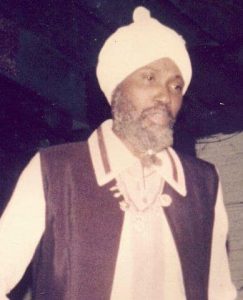
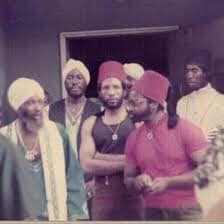
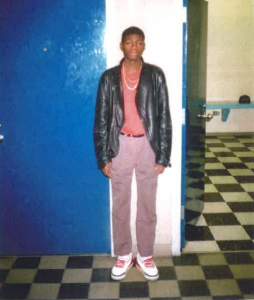
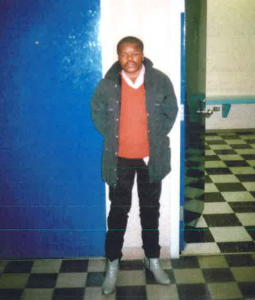
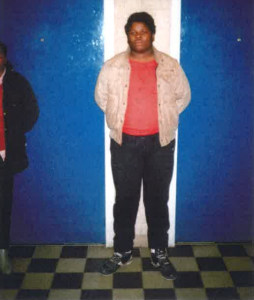
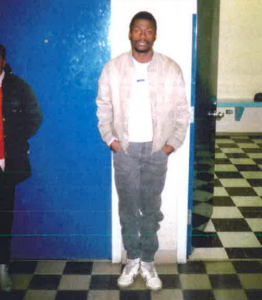
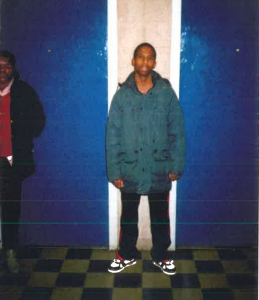
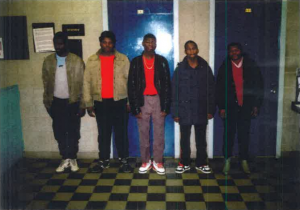
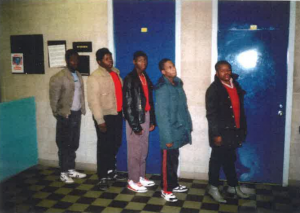
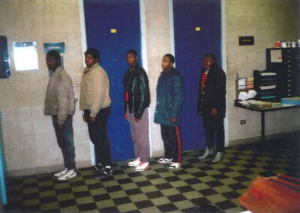
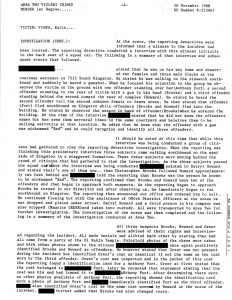
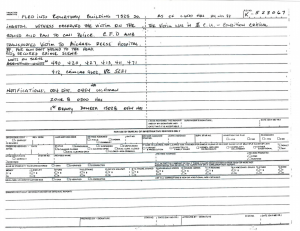
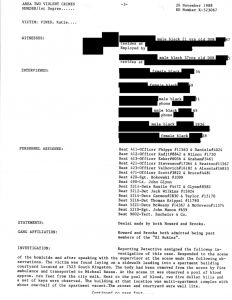
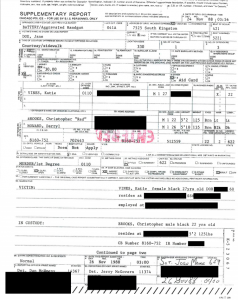
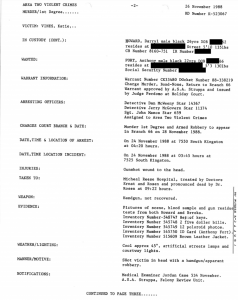
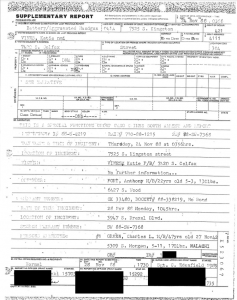
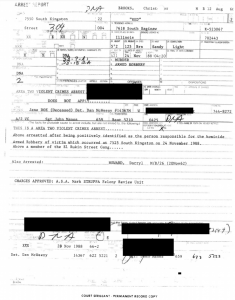
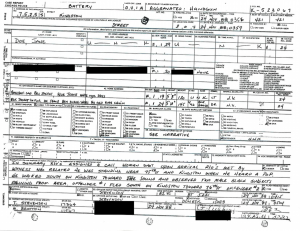

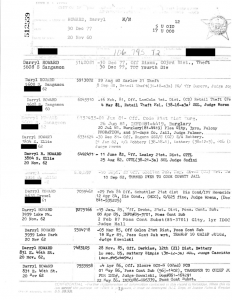
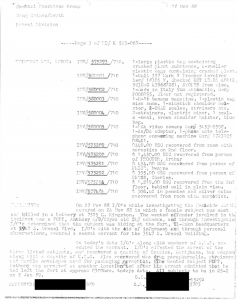
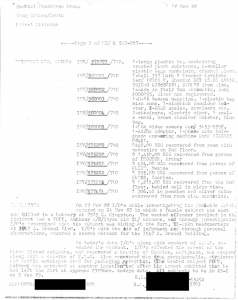
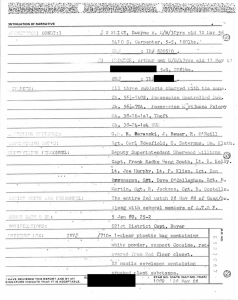

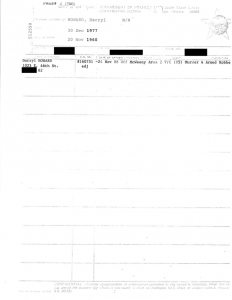
Replacing the Main 21 was a group of Generals that Chief personally appointed, these original Generals were: Felix Mayes, Jake Crowder, Alan Knox, Derrick Portor, Floyd Davis, Walter Pollard, Edward Williams, Roger Bowman, Bernard Green, Thomas Bates, Eddie Franklin and others. Chief also appointed a group of enforcers: Harry Evans, Earl Hawkins, Ronald Lewis, Anthony Sumner, Louis Hoover, William Doyle, Derrick Kees, Hank Andrews, George Carter, Ronald Jennings, and others (Source: United States Vs. Andrews).
One of the first groups to drop the Stone name was the Moroccan Tribe. I am not sure what this group was originally called when El Rukn was first created but as soon as Jeff Fort brought in the El Rukn name this group was the first to appear to have dropped the Stone name, however, they were unique from other Stones and El Rukns. This group may have even dropped the name before the El Rukn declaration. This group was located mainly in the Lake Park projects at 3939 S. Lake Park Avenue heading south all through the rest of Oakland into the Kenwood neighborhood to 47th Street. They were a part of a well-versed group of Stones that were also in the Ida B. Wells projects that were all early Islamic converts that studied the Holy Koran 7 and wore blue fezes. The Lake Park Projects group were the Stones that became the Moroccan Tribe and kept peace with both El Rukns and Stones. Moroccans had a vicious rivalry with Black Gangster Disciples, but they weren’t a gangbanging crew.
Hairston was still the Chief of the Blackstones on the north side of the city as there were no El Rukns up there. Stones up that way had some different enemies and even fought against Hispanic and white gangs like the Gaylords, Simon City Royals, Brazers, Latin Eagles and some others. I’m not sure when and how the connection came about with the Latin Kings but eventually the Latin Kings and Stones became very close, and it may or may not have begun in the Uptown/Rogers Park area with Eugene Hairston’s guys or not. Hairston’s Blackstones had two offshoots that broke off and settled in South Shore right in the heart of El Rukn activities. These were the Kingston Raiders and Kingston Killers. The Raiders were from 72nd down to 75th and Kingston while the Kingston Killers were from 79th to 83rd and Kingston, the Killers were in South Chicago. The problem is both groups were enemies and they both liked to terrorize south side high schools. Herbert “Thunder” Stevens was one very close to Eugene Hairston and could unite the Kingston Raiders and Kingston Killers, he was very much looked up to by Hairston supporters and was perhaps Hairston’s top man. The Raiders paid heavy tribute not only to Hairston and his side but also to the old ways of the Blackstone Raider days and it is possible many of their members were original Raiders.
There have been legends that once Chief declared the El Rukns as the official replacement for the Stones, he threatened anyone that dared go against the new ways would be killed. The old story if that Mickey Cogwell was the biggest objector to the El Rukn order but as I had shown, it was Hairston who was the biggest objector. It is true that Mickey did not want to convert to El Rukn and that’s when the Cobrastones split away from Chief’s army, but Chief did not sign Mickey’s death warrant. It was an option to become an El Rukn and if you chose not to be embraced by Islam and be considered El Rukn you were nothing, you weren’t a Stone, you were nothing. Chief implicitly stated that “Black P Stone” was no longer legit and was officially replaced, this was the new order for 1977. Guys like Mickey Cogwell simply did not buy into this new order and kept the Black P Stones alive regardless of what Chief said. Mickey also felt more loyalty to Eugene Hairston now that Hairston was out of prison and because of the El Rukn declaration. The Black P Stones were still alive in the further south side neighborhoods and the south suburbs. Stones still were running a good piece of Bronzeville too which conflicted with El Rukn interests in later years. The Stones were also still very large in Roseland, Auburn-Gresham, Pullman, West Pullman, Riverdale and Washington Heights. Stones were also still very influential on the streets of South Shore. On February 25, 1977, Mickey was shot and killed as he was walking home to his Auburn-Gresham home at 7820 South Seeley, he was shot right in front of his house. Many suspected the El Rukns for the hit, saying the Chief wanted him dead because Mickey and the Cobrastones did not become El Rukn but there was not only no evidence of this but Chief didn’t have lots of motive at the time because the way it was in early 1977 was if you didn’t want to be El Rukn you were just on your own; the violent sanctions didn’t begin until later in time. It was also suspected that Cogwell was killed because of a mob related hit which is the more likely scenario because one of his close Italian associates was killed at about the same time. Regardless of what the truth was the Cobrastones still left the Black P Stone Nation and became known as the “Mickey Cobras” that year.
In the same year of 1977, Chief purchased property at 3947 S. Drexel in the Oakland neighborhood which was formerly the Oakwood theater since 1915. The last owners opened it as a black owned theater back in the late 1960s until it closed in 1971 and sat vacant for six years. Chief turned this into a branch for the MSTA called “El Rukn Moorish Science Mosque” that was ran and headquartered by the El Rukns. The removal of drug dealers and rival gangs at this corner in the mid-1970s paved way for the El Rukns to buy this building.
In the year 1978, the Chief moved out of Milwaukee and moved to Chicago. I’m not sure how he avoided laws coming down on him for coming back, but he made his way back home. Once Chief arrived, he began to detach from the Moorish Science Temple and began the conversion of turning the El Rukns into its own religion. The property at Oakwood and Drexel was now renamed “El Rukn Grand Major Temple” that year. Locals nicknamed the building “The Fort.”
Chief was now rooted completely in Chicago by 1978 and now pressure to become El Rukn and drop the Black P Stone ways was now growing. El Rukn bylaws coincided with Islamic law as members were technically not allowed to eat pork, drink alcohol, use drugs (even marijuana) and members couldn’t even cuss. Jeff Fort himself followed these rules very easily because he was never into drinking and using drugs and was never a man to cuss to begin with. Chief also wanted members to learn Arabic, although not required, many members did learn the language fluently. Although the nation forbid drug and alcohol use there were many witnesses that hung out or were members of the El Rukns that claimed there were many parties at The Fort with marijuana use and lots of drinking followed by many other activities that would normally be deemed immoral by the organization but one thing for sure is that Chief himself didn’t partake in such activities. Chief stayed away from use of any drugs or alcohol, therefore, his example was consistent, and he treated his body like a sacred vessel since he was young. The biggest criticism of all was the El Rukn involvement in the drug trade. El Rukns especially partook in the distribution of Ts and Blues which is a narcotic that is a mixture of Talwin, a morphine-like painkiller sold only by prescription, and Pyribenzamine, a blue antihistamine tablet. This is a cheap drug that moves quickly because of price. El Rukns forbid the sale of heroin during these early years, but they distributed PCP, codeine syrup, amphetamines, marijuana and cocaine, along with dominating the Ts and blues market. Perhaps the top General that was involved in selling drugs was Edward “Ranger” Williams who sold mass quantities of Ts and Blues, Christmas Trees, Debs, Marijuana, Cocaine, PCP, Codeine and exotic Ritlins (Heroin substitute), he was perhaps the Chief’s biggest earner. Ranger’s favorite drug to peddle was Codeine. Williams sold gallons of the stuff on a regular basis and even had a large book detailing all about different drugs as if he was a pharmacist. He chucked a large portion of his profits to the El Rukns and into Chief’s pocket. Williams had a lower ranking El Rukn Moses Steele to sell mass quantities of Codeine in the Ida B Wells projects where he worked as a janitor. Williams also sold PCP for the Stones since 1973 and was supplying Cocaine to the suburb of Harvey in the early 1980s. Also, in the early 80s Williams sold mass quantities of Marijuana and Cocaine out of an apartment at 76th and Kingston in the South Shore neighborhood. He had a massive line of customers at his door in the building and eventually had to take over the whole courtyard to accommodate (United States of American Vs. Williams).
Other Generals that moved large quantities of drugs in the late 1970s and early 1980s where south suburban Stone founders Jerome “General Jake” Crowder and Roger “General Tu” Bowman along with Louis “Sabu” Hoover. Crowder and Bowman had moved out of the south suburbs up to Milwaukee as Crowder became the top general running all Milwaukee operations. Crowder and Hoover were buying large quantities of Cocaine and bringing them from Chicago to Milwaukee in the late 70s into the early 80s becoming one of the biggest Cocaine pipelines in Milwaukee. Eventually Crowder was demoted from freebasing Cocaine and Roger Bowman took over. Bowman worked as a Yellow Cab driver and his cab was used to transport large quantities of Cocaine between Chicago and Milwaukee.
The common misunderstanding for the motive for moving drugs through the south side was to make El Rukns rich but the actual biggest motivation for nation business was to fund the religious cause of the organization so that they could continue to grow as an organization. Yes, a good portion of the money went into the pockets of El Rukns for personal gain as many members were seen driving expensive cars and wearing some flashy expensive clothing adorned with jewelry filled with gold and diamonds. Many criticized the El Rukns as hypocritical gangsters but what needs to be understood is that this was an organization coming from extreme poverty and misguidance and this was always the issue from the beginning. Like most street gangs in Chicago, Stones/El Rukns needed to fend for themselves to build up a better situation for youths enduring extreme circumstances when the city had mostly neglected these communities. The programs that were directed by T.W.O and other organizations did not provide proper direction to groups like the Stones and even gave them too much responsibility like being teachers over other students before the teachers even had the chance to be students first. Job training programs were filled with gang member instructors that were pulled in right off the street with no formal training. Once the system failed the Stones they went on trial as funding was yanked leaving these groups in a state of desperation, this is when the drug sales began as a replacement.
Within no time, law enforcement was breathing down the necks of El Rukn members and many were already facing jail time right after the operation began in Chicago. The El Rukns became very frightening figures to the public and the authorities, more so than the Black P Stones ever were. These were the same men as always that had just exchanged their old religions and lifestyles for a holy entity. Yes, they were feared before but now the public was more afraid than ever of the organization the Chief was leading. El Rukns were no more violent after converting to Islam than as Stones but what made this organization scarier than the Stones was one simple fact, they were devout Muslims wearing religious garb. The public has feared Arabs and the Islamic beliefs for decades, so this is nothing new and it was very much prevalent in the 1970s as the media informed us of all the scary middle eastern leaders and extremist Islamic groups. Here on our soil was a group that practiced Islam while they sold drugs and executed enemies with a swiftness pulling off many near perfect and sometimes brutal murders, most of which are not documented but legends are there. The Islamic combination with the gangsterism culminated so much extra fear that the public was deeply terrified of the El Rukns and this drove law enforcement to pursue the El Rukns heavier than they ever did with the Stones. The truth is there was nothing more to fear than normal with the El Rukns but just being with Islam heightened that fear. As a result of all this fear the F.B.I. was looking into any way to tie the El Rukns to any extremist middle eastern groups possible so they could pin that classification of a “terrorist organization” on the El Rukns. The interesting thing about the new recruits coming into the El Rukns was the fact they were older men, some that already had families or even in their thirties in age. These new recruits did not join to gangbang and didn’t carry guns, they also never had a criminal offense, and some were college educated. Youngsters joining the El Rukns was a very low number and exclusively bestowed upon by direct family of El Rukn Generals. The El Rukns were not recruiting young kids in school yards or on the streets and were not pursuing young members within the organization to shoot enemies dead. El Rukns didn’t spray graffiti on the walls and if there was a El Rukn tagging it was not done by anyone in the organization. El Rukns did not wildly shoot at crowds with children nearby and strike down little boys and girls nor did they commit muggings and purse snatching crimes in the community. El Rukns were on a higher level and were not your conventional gang, in fact, they really weren’t even a gang per se.
Even though the El Rukns were set apart from other gangs in terms of their activities they still had ties to other gangs and at first, they had to understand that the Black P Stones and the Blackstones still existed. El Rukns also maintained their ties with the Vice Lords and even showed the Vice Lords the ways of Islam introducing Vice Lords to this new religion. This brought many Vice Lords to convert to Islam and even adopt Arabic symbols like the pyramid and crescent moon; however, the Vice Lord organization did not convert to Islam. At the time when the Vice Lords were introduced to Islamic doctrines and adopting El Rukn symbols both organizations along with several other organizations found themselves in a bind behind prison walls in Statesville. Prisoners were being treated very poorly and often served rotten food. Despite gang differences the Black Gangster Disciples, Vice Lords, Black Disciples, El Rukns, Black P Stones, Blackstones, Mickey Cobras, Four Corner Hustlers and Black Souls leaders all came together to organize a revolt against prison staff until conditions changed. The best way to make this revolt effective was to include the Hispanic and white gangs into this too since the gangs in general ran the prison. The El Rukns, Black P Stones, Blackstones and Vice Lords sat down with the Latin Kings to discuss creating a prison alliance to go about this revolt. The Stones, El Rukns and Vice Lords brought in Islamic doctrines into this new alliance known as “People.” The Latin King’s role was to bring in the Christian side of the alliance and recruit Hispanic and white gangs into the People alliance, however, no white gangs became interested initially. The Black Gangster Disciples and Black Disciples organized the Folk alliance and brought in Hispanic and white gangs on their side, they all became known as “Folks.” Stones and El Rukns formed a special bond with Latin Kings because they both had very similar causes for the creation of their organizations. The Vice Lords and Latin Kings could relate on that level too, but they had a dark history of violent warfare in the 1960s and 1970s that was not easy to forget but for Stones, El Rukns and Latin Kings that bad blood wasn’t there. The Latin King and Stone/ El Rukn alliance has remained almost airtight since the 1970s or before. These two organizations have rarely had violence between then despite living in some of the same communities on the north side and in the suburbs. Getting back on track, the People alliance was born on the same day in the same meetings as the Folk alliance in April in the year 1978 and now any beef between El Rukns and Mickey Cobras was put to an end in the prison system as the Cobras joined People and even adopted some of the Islamic doctrines. The strike was a success as it didn’t even make the news or last long; once the strike was over each alliance went its own way and sort of became rival groups but if they ever needed, they could come together on issues again. According to the dictionary Folk and People have the same meaning so these alliances are one in the same but with a different word.
Over time the El Rukns would purchase and use several different buildings for their operations. Some of the buildings ran drugs and weapons while others served as hideouts and meeting places. These buildings were as follows:
- The “East Side” which was located at 7611-23 S. Kingston Avenue located in the South Shore community. This was a rather large apartment complex at 76th and Kingston.
- The “Morroco” which was located at 6410 S. Minerva Avenue near the intersection of Woodlawn Avenue and Minerva Avenue in the Woodlawn neighborhood. This was another building with several apartments.
- The “Peace and Love Building” located at 7427-57 S. Kingston Avenue at the intersection of 74th Place and Kingston Avenue in the South Shore neighborhood. This was again a building with several apartments.
- The “Alahambra” located at 6417 South Kenwood Avenue at the intersection of 64th and Dorchester in the Woodlawn community. This was a divided house that had a few different apartments.
- The “Pyramid Towers” also known as the “Wedgewood” which used to be located at 6400 South Woodlawn Avenue at the corner of 64th and Woodlawn. This building has been torn down.
- The “Five Point Terrace” located at 4559-67 and 4601-05 South Woodlawn Avenue at the corner of 46th and Woodlawn in the Kenwood neighborhood. This was a major building for El Rukn operations until it was shut down in 1984 and razed by 1985.
- The “African Hut” which was located at 6414-16 S. Kenwood Avenue in the Woodlawn neighborhood at 64th and Kenwood. This building was torn down.
- The “People’s Choice Restaurant” located at 10901 S. Michigan Avenue at the intersection of 109th and Michigan in the Roseland neighborhood.
- The “Stonehedge” which was located at 6319 S. Woodlawn Avenue in the Woodlawn neighborhood at 63rd and Woodlawn. This building has been torn down.
- The “Crest Hotel” located at 6724 S. Stony Island Avenue at the intersection of 67th Place and Stoney Island in the Woodlawn neighborhood. This hotel was razed and replaced by a strip mall.
- The “Harper Building” located at 6435 S. Harper Avenue at the intersection of 64th and Harper in the Woodlawn neighborhood. This building has been torn down.
- The “Royal” located at 8243 S. Marshfield Avenue at the intersection of 83rd and Marshfield in the Auburn-Gresham neighborhood. This was a house with a few different apartments.
- A house at 12138 S. Elizabeth Street in Roseland at 122nd and Elizabeth.
- Finally, “The Fort” located at 3947 S. Drexel Boulevard. This was the former Oakwood Theater and was torn down. This was the ultimate headquarters of all El Rukns.
The year 1979 would bring the El Rukns into harsher business as several crimes were being carried out by the Black P Stones and being pinned on the El Rukns causing police to be in their faces. Also, enforcement came down hard on El Rukn enemies that El Rukns wanted credit for to show the south side they meant serious business but instead that credit was given to the Stones. All this upset the Chief; therefore, he laid out sanctions against the Black P Stones. Now it was no longer a choice to be a Stone, it now meant death. Herbert “Thunder” Stevens was one of the first big losses as he was shot dead in a Harold’s Chicken parking lot at 75th and Essex in the South Shore neighborhood. He was shot dead in the daytime and appeared to be a hit. The Sircon City Black Gangster Disciples were rumored to have killed him, but many others blamed Chief and the El Rukns for the hit and now bad blood was developing from Black P Stones and Mickey Cobras after Mickey Cogwell and Herbert Steven’s death, however, going into the early 1980s the El Rukns would prove to be perhaps the toughest force to be reckoned with on the south side of Chicago.
After the sanctions were first handed down on the streets in 1979, a group of supporters of the new El Rukn ways brought the sanctions to the prison system by a group known as the “Cornerstones” which is the English version of El Rukn. Cornerstones wanted to remove the name Stone out of the penitentiary so that Chief’s El Rukn empire could dominate behind the walls. This sanction met very heavy and violent resistance when Maniac P Stones cliqued up with elite Renegade Vice Lords who protected them tightly. This gave birth to the “Renegade Stones” that was a group of ex-Maniacs who went into full alliance with Renegade Vice Lords.
The year 1980 was a major year of takeovers and take downs. Bodies began dropping as El Rukns viciously fought with rival gangs and they were exercising violence against the Black P Stones on the south side that wouldn’t obey sanctions made by the Chief. This caused many Black P Stones to flip to Conservative Vice Lords, Insane Vice Lords and Four Corner Hustlers as these west side mobs were now invited to set up territory on the south side starting in 1979. These Vice Lord groups got in on good graces with the Stones and Mickey Cobras which gave them to ability to open in Grand Boulevard, Greater Grand Crossing, Riverdale and even in South Shore. The sanctions were brutal with brutal hits made against Stones as El Rukns were well armed and handled business very precisely. El Rukns even took out witnesses to their actions. For example, if they were to hit someone and someone else saw the whole thing, they would clean up the scene and take out that witness. El Rukns were also known to intimidate, bribe or even threaten jurors or witnesses that would testify in court. El Rukns operated in mob style fashion.
The story of how the El Rukns obtained the property “Alahambra” is quite a story. On “Feast Day” which is August 8th of each year, the El Rukns celebrated that day by storming this property by force. On August 8, 1980, Chief had his men knock on all the doors and force all the dealers out immediately. Dealers also had to forfeit all their drugs, guns, and cash. Two of the dealers in the building were Titanic Stone higher ups Barnett Hall and Duke Thomas. In Hall’s apartment the El Rukns took $10,000 to $15,000 in cash from him during the raid. In this same year Willie “Dollar Bill” Bibbs had left the Titanics and joined the El Rukns giving the nation to Robert East. Willie Bibbs was a big time Ts and Blues dealer and helped pump up the El Rukn supply of the drug while the Titanics cornered 30% of the market that year angering the El Rukns, this meant war. Bibbs didn’t remain an El Rukn for long and used his temporary membership with them to connect heavily to the El Rukn Ts and Blues sources he then flipped back to a Titanic in 1981 which pulled more of the market into the hands of the Titanics; this is when Chief gave out sanctions to eliminate the Titanics. This is when the famous 43rd Street Massacre was to go down on June 15, 1981. Chief sent three killers: Derrick Kees, Rick Ferguson and William Doyle who were armed with machine guns, super .38s, 9-millimeter pistols to a playground at 40th and Indiana (now known as Lou Jones Fitness Park) in the Grand Boulevard neighborhood. This was a park where Titanics were known to sell drugs. When these men saw Titanics standing around there they opened fire but missed all targets except for Bibbs which was the biggest target of all. After this Chief sanctioned a hit on Barnett Hall and he was successfully executed on December 23, 1981, in front of his apartment at 6146 South Kenwood Avenue, once again Derrick Kees and Anthony Hall were the shooters (United States of America Vs. Williams) (United States Vs. Andrews).
The year 1979 would bring the El Rukns into harsher business as several crimes were being carried out by the Black P Stones and Blackstones and being pinned on the El Rukns causing police to be in their faces. Also, enforcement came down hard on El Rukn enemies that El Rukns wanted credit for to show the south side they meant serious business but instead that credit was given to the Stones. All this upset the Chief, therefore, he laid out sanctions against the Blackstones and Black P Stones. Now it was no longer a choice to be a Stone, it now meant death. Herbert “Thunder” Stevens was one of the first big losses as he was shot dead in a Harold’s Chicken parking lot at 75th and Essex in the South Shore neighborhood. He was shot dead in the daytime and appeared to be a hit. The Sircon City Black Gangster Disciples were rumored to have killed him, but many others blamed Chief and the El Rukns for the hit and now bad blood was developing from Black P Stones and Mickey Cobras after Mickey Cogwell and Herbert Steven’s death, however, going into the early 1980s the El Rukns would prove to be perhaps the toughest force to be reckoned with on the south side of Chicago.
After the sanctions were first handed down on the streets in 1979, a group of supporters of the new El Rukn ways brought the sanctions to the prison system by a group known as the “Cornerstones” which is the English version of El Rukn. Cornerstones wanted to remove the name Stone out of the penitentiary so that Chief’s El Rukn empire could dominate behind the walls. This sanction met very heavy and violent resistance when Maniac P Stones cliqued up with elite Renegade Vice Lords who protected them tightly. This gave birth to the “Renegade Stones” that was a group of ex-Maniacs who went into full alliance with Renegade Vice Lords.
The year 1980 was a major year of takeovers and take downs. Bodies began dropping as El Rukns viciously fought with rival gangs and they were exercising violence against the Black P stones on the south side that wouldn’t obey sanctions made by the Chief. This caused many Black P Stones to flip to Conservative Vice Lords, Insane Vice Lords and Four Corner Hustlers as these west side mobs were now invited to set up territory on the south side. These Vice Lord groups got in on good graces with the Stones and Mickey Cobras which gave them to ability to open in Grand Boulevard, Greater Grand Crossing, Riverdale and even in South Shore. The sanctions were brutal with brutal hits made against Stones as El Rukns were well armed and handled business very precisely. El Rukns even took out witnesses to their actions. For example, if they were to hit someone and someone else saw the whole thing they would clean up the scene and take out that witness. El Rukns were also known the intimidate, bribe or even threaten jurors or witnesses that would testify in court. El Rukns operated in mob style fashion.
The story of how the El Rukns obtained the property “Alahambra” is quite a story. On “Feast Day” which is August 8th of each year, the El Rukns celebrated that day by storming this property by force. On August 8, 1980, Chief had his men knock on all the doors and force all the dealers out immediately. Dealers also had to forfeit all their drugs, guns and cash. Two of the dealers in the building were Titanic Stone higher ups Barnett Hall and Duke Thomas. In Hall’s apartment the El Rukns took $10,000 to $15,000 in cash from him during the raid. In this same year Willie “Dollar Bill” Bibbs had left the Titanics and joined the El Rukns giving the nation to Robert East. Willie Bibbs was a big time Ts and Blues dealer and helped pump up the El Rukn supply of the drug while the Titanics cornered 30% of the market that year angering the El Rukns, this meant war. Bibbs didn’t remain an El Rukn for long and actually used his temporary membership with them to connect heavily to the El Rukn Ts and Blues sources he then flipped back to a Titanic in 1981 which pulled more of the market into the hands of the Titanics; this is when Chief gave out sanctions to eliminate the Titanics. This is when the famous 43rd Street Massacre was to go down on June 15, 1981. Chief sent three killers: Derrick Kees, Rick Ferguson and William Doyle who were armed with machine guns, super .38s, 9 millimeter pistols to a playground at 40th and Indiana (now known as Lou Jones Fitness Park) in the Grand Boulevard neighborhood. This was a park where Titanics were known to sell drugs. When these men saw Titanics standing around there they opened fire but missed all targets accept for Bibbs which was the biggest target of all. After this Chief sanctioned a hit on Barnett Hall and he was successfully executed on December 23, 1981 in front of his apartment at 6146 South Kenwood Avenue, once again Derrick Kees and Anthony Hall were the shooters (United States of America Vs. Williams) (United States Vs. Andrews).
In November of 1982, Chief believed he had been given a sign from Allah to finish off the Titanic Stones by wiping out more of their leaders. Duke Thomas, Chalmers Tyler, and the Ewing brothers were now next to be eliminated. This is when the El Rukns began calling the Titanics “gophers” because they popped up like gophers and he wanted to keep hitting them as they popped their heads up. Chief wanted all the leaders eliminated as they took over leadership until they finally ran out of steam. The first hit was botched when an El Rukn hit squad consisting of: William Doyle, Jackie Clay, Derrick Kees, J. L. Houston, Edgar Cooksey, Ray Ferguson, and Alvin Toney tried to hit Duke Thomas but instead killed a woman and injured another that were driving Thomas’ car at 5642 South Michigan (57th and Michigan) in the Washington Park neighborhood. This happened in January of 1983. Chalmers Tyler was then shot and killed in February of 1983 at 6450 S. Kenwood Avenue in Woodlawn by Earl Hawkins and J. L. Houston. Later that month the squad consisting of: William Doyle, Derrick Kees, Earl Hawkins, Harry Evans, and Jackie Clay tried to hit the Ewing brothers but instead accidentally shot two other men as they sat in a car at 79th and Essex (United States Vs. Andrews).
The Titanic P Stones were being beaten back by the El Rukns as El Rukns continued to assassinate their ranks. El Rukns followed through with their hits even if they were botched. One of the reasons some hits were botched is because Titanics were a lot like the El Rukns as they were also a crew full of hardened killers that were murder experts just like the El Rukns. One of the biggest reasons the Titanics were more or less at a disadvantage in this war was the fact the Titanics were far outnumbered by the El Rukns. Eugene Hairston maintained close contacts with Titanics during this war and it made El Rukns make Hairston a person of interest all throughout the early 1980s as there may have been plans to take him down but there were just always higher priorities. The Titanics and El Rukns were indeed the heaviest hitters of all El Rukn/BPS/Blackstone groups.
El Rukns kept very close tabs on groups of Stones. The Peace and Love building at 74th Place and Kingston was the building where El Rukns watched the Stones very closely from this location and kept many Stone groups in line. Another complicated thing was the fact many family members related to El Rukns were not old enough or not considered good candidates for membership in to the El Rukns but El Rukns still wanted to keep these youngsters or others close. One of the most prime factions of Stones that was family with El Rukns was Maniac P Stones that were formerly known as Maniac Rangers when they formed in the 1960s. By the 1980s the Maniacs had a new generation of youngsters that were fearless and would not fold under any circumstances. Also, Stone groups would befriend kids of El Rukns and even take them under their wing into the BPS nation this caused many Stones to get a pass, and this is also what kept the Stone name alive despite the sanctions handed down by Chief in 1979. For the wild groups of Stones El Rukns watched them tightly and were quick to impose law over them if need being. As in the case with the Titanics, the El Rukns would not shy away from a war with any Stone group. El Rukns also imposed taxes on Gangster Disciple and Black Disciple groups in the east side area. For clarify purposes, the east side is mainly the areas of South Shore, East Woodlawn, Kenwood, Grand Boulevard and Oakland.
Lots of craziness was happening on the more southeast side in Greater Grand Crossing, South Shore and South Chicago as prime location near CTA transit lines offered a cash cow for drug profits driving El Rukns, Black P Stones, Vice Lord groups, Gangster Disciples and Black Disciple groups to become more organized than ever in the 1980s. As I stated before the sanctions against the Stones caused many Stones to flip to Vice Lords and brought Conservative Vice Lords, Four Corner Hustlers, and Insane Vice Lords to the south side. Shortly after the flipping, many hardened west side Vice Lords began killing former Stones that had flipped Vice Lord, therefore, it was Vice Lord versus Vice Lord, not only that Vice Lords were also killing Stones which caused the Stones to fight back and kill Vice Lords. All this violence led to a mass depletion of Vice Lord groups especially in South Shore and Greater Grand Crossing areas as Stones fought for their ability to exist; too many sanctions were against them from all angles, so they had to fight for survival during this reign of the El Rukns. Many other Stones also flipped to Gangster Disciple or Mickey Cobra during these turbulent late 1970s and early 1980s times and it got to the point where Stones were becoming a minority group on the streets in comparison with other mobs around them and it started to seem like this could be the fall of the Black P Stones.
In April of 1983, Chief and William Doyle traveled down to Tupelo, Mississippi to engage in a Cocaine transaction, the men ended up dealing with an undercover Mississippi Bureau of Narcotics Agent and both men were arrested which got Chief put in jail. By the summer of 1983 he was released but under the heavy spotlight of law enforcement that was investigating him for drug trafficking. Later that year the El Rukns became connected with Noah Robinson the half-brother of Reverend Jesse Jackson. Through Robinson El Rukns became connected with Thomas Allen Burnside from Greenville South Carolina who was a major Cocaine distributor in Boston, Bridgeport Connecticut, and New York City. The El Rukns began buying kilos from Burnside until December of 1984. Chief was convicted of narcotics trafficking in December of 1983 and sent to federal prison, from this point forward Chief would never see a free day again. It was then said in court documents that Chief continued to run the El Rukns from behind bars by talking on the telephone in codes ordering anything from drug movement to murder. One of the ordered hits in April of 1984 was on Jerome “Fuddy” Smith who was the leader of the Goon Squad Gangsters that operated in the Ida B. Wells projects at 706 East 39th Street. Fuddy was apparently infringing on El Rukn Cocaine operations and allegedly Chief passed down the orders to take him out. On April 28, 1984, Earl Hawkins, George Carter and Henry Andrews shot and killed Fuddy and Talman Hickman in a breezeway in the 706 East 39th Street building (United States Vs. Andrews).
By the year 1985, Robert “Button” East was incarcerated for murder which left the Titanic Stones in the hands of East’s younger brother Ray “Scooter” East. Robert East had been working heavily with Eugene Hairston to attempt consolidation of all the different Black P Stone groups together to go against the El Rukns and not adhere to the sanctions but by the time Robert East was put in prison it put a major dent in their progress and Scooter was ruthless and very violent as he lead the Titanics to act in the same way causing the organization to go to war with allies like Mickey Cobras and Prairie Avenue Insane Vice Lords. This not only damaged the Titanics it also caused Eugene Hairston to at last fade completely out of the picture and he became addicted to Heroin.
In the year 1985, the El Rukns had lost their main Cocaine connection Blue Burnside as he was taken to prison and now the El Rukns needed a new solid connection to the Cocaine pipeline this is when they connected with one of the biggest drug dealers in Chicago, Willie Morris “Flukey” Stokes. The El Rukns had always been against the sale of Heroin as it was completely forbidden from sale and use since 1976, in the year 1985 that would change as El Rukns at last partook in the Heroin business. This all began right at the beginning of the year 1985 in January when El Rukns connected to Alexander Cooper, a non-El Rukn member that partnered directly with the Chief while he was still behind bars. This is when a group was formed called “The Gorilla Family.” This group was led by Cooper and consisted of lower level, less known El Rukns who would distribute both Heroin and Cocaine. This group sold in multiple locations in El Rukn territories and buildings. One of the locations was at the Wedgewood also known as the Pyramid Towers located at 64th and Woodlawn Ave in Woodlawn. There was also 71st and Stoney Island in South Shore, 47th and Lake Park in Kenwood, 79th and Yates in South Shore, 75th and Colfax in South Shore and even a tavern right across the street from the Ida B. Wells projects. The Gorillas operations were carefully planned from the start as even prime locations were picked up to sort the bags, package the dope and store it in a proper environment. The Gorillas also operated in air-conditioned rooms which were ideal for mixing Heroin and Cocaine in the Harper Building which was located at 64th and Harper in the Woodlawn neighborhood. Edward Williams foresaw this operation and before overseeing the Gorilla operation at the Harper, he foresaw operations at the Five Point Terrace at 47th and Woodlawn in the Kenwood neighborhood from 1981 to 1985 (People of the United States of America Vs. Williams).
In March of 1985, El Rukns met with King Cobras, an organization that was basically linked to and a part of the Mickey Cobras since 1959. El Rukns authorized Tredis Murray and Herman “Moose” Jackson to sell Heroin at the intersection of 67th and Blackstone in the Woodlawn neighborhood if the sales did not compete or infringe in any way on the Heroin sales at the Gorilla’s spot at 67th and Stoney Island. This arrangement only lasted a month before El Rukns felt the King Cobras had broken their promise and were stepping on El Rukn toes, this is when Chief ordered three of his men to “medium rare” Theotis Clark. Medium rare was code for shoot but don’t kill. This is when the hit squad of: Derrick Kees, Andrew Craig, Edgar Cooksey, and Charles Green to hunt down Clark, they found Clark at 67th and Stoney Island and shot him in the leg as a warning. Another part of the order was to “Well-done” Herman Jackson and Tredis Murray which meant go ahead and kill them both. Another order was given to shoot any other King Cobras on site too. Because of the order to shoot any King Cobra, Jackson’s brother Robert “Dog” Jackson was killed by the hit squad of Andrew Craig, Andrew Fort, and David Carter. El Rukns attempted to kill Andre Chalmers and sent hit squads to make it happen. A squad consisting of: Alan Knox, Jeff Boyd, James Walker, Roderick Haygood and Robert Johnson arrived at the Lanagan’s Lounge located at 5428 South Halsted Street at 54th and Halsted in the Back of the Yards neighborhood. At the bar they attempted to kill Chalmers but instead they hit Rico Chalmers, Glendon McKinley, and Vicki Nolden, all three were killed. This was done to exert control over drug operations at the intersection of 54th and Bishop in the Back of the Yards neighborhood. After the murder, authorities stated in the conspiracy court case of United States Vs. Andrews that El Rukns intimidated witnesses into giving false testimony. By the end of the year the Gorillas disbanded and King Cobras and El Rukns worked out a deal for 67th Street to have Cobras sell in the daytime and El Rukns sell at night (United States of America V. Williams).
In the same year of 1985, the El Rukns were not only looking to strengthen their Cocaine and Heroin operations they were also looking to strengthen their spiritual cause and link further to Islamic groups abroad all the way to Algeria. This was the first time El Rukns connected with Libyan dictator Colonel Muammar El-Qaddafi in an indirect manner. On February 24, 1985, an event called Saviour’s Day was held at the General Jones armory at 52nd and Cottage Grove in the Hyde Park neighborhood. The Chicago based Nation of Islam group was organizing the event to honor their guest speaker Louis Farrakhan as he was to deliver an impassioned speech. Participating at the event were the El Rukns who were allies of Farrakhan. 500 members of the El Rukns attended this event. As Farrakhan took center stage a large screen was displaying in the background that was live satellite feed to Algeria’s Ahmed Ben Bella and Ghana’s Jerry Rawlings, after they spoke Colonel Muammar El-Qaddafi spoke who offered sympathy to black people who he encouraged to fight oppression and he offered armed assistance if needed. As Qaddafi spoke Farrakhan asked the El Rukns to stand up. Farrakhan then warned the United States that if the U.S. tried to harm Qaddafi they would have to deal with the “Angels of Death” as he pointed to the El Rukns causing the audience to applaud emphatically (The Almighty Black P. Stone Nation, Moore, Williams). This was the beginning of the misconception of El Rukns and the government deep investigations into the El Rukns as an extremist Islamic terrorist group and now it looked like the El Rukns were ready to kill and destroy the United States for Qaddafi.
By the end of the year El Rukns wanted to further push their homemade religion into legitimacy in the Illinois prison systems. The El Rukns wanted their right to assemble behind bars as a religious entity that would have the same freedoms as any other religion practiced in prison where they can all come together and pray. El Rukns were initially denied this because the El Rukn name was tied to criminal endeavors and members were criminals; however, the reason for the suit was so their criminal backgrounds could not interfere with their right to assemble for religious ceremonies. Authorities feared this was a way so they could assemble to plot criminal endeavors and to gang up on other inmates to intimidate and force recruitment. In the end the suit was rejected and the El Rukn faith did not get legitimacy (New York Times, December 27, 1985).
Heading into 1986, the El Rukns were already in the spotlight again when they went into the murder for hire business. One of their clients was Noah Robinson, the notorious half-brother of Reverend Jesse Jackson. Robinson paid El Rukns $10,000 to murder one of his enemies Leroy ″Hambone″ Barber. These two men had a dispute over business and Barber began harassing Robinson. Although both men resided in South Carolina Robinson still consulted the Chicago based El Rukns to drive out there and take care of Barber. The hit was done by the squad: Alan Knox, Edgar Cooksey, Eugene Hunter, and Jackie Clay on January 2, 1986, when Barber was shot in the head in downtown Greenville out in front of one of Robinson’s buildings. A witness saw the crime and reported it to the police, that witness was Janice D. Rosemond. Rosemond was about to go as far as to testify in court until her apartment was broken into by Freddie E. Sweeney a former janitor of Noah Robinson who stabbed her five times. Rosemond survived but then refused to testify saying the police coerced her. Noah Robinson still ended up facing conviction for murder and the El Rukns involved were brought into custody, all five men were heavy hitters for the El Rukns (AP News September 20, 1988).
In March of 1986, the El Rukns then used the new connection through Farrakhan to connect directly with Qaddafi. Between the months of March and July El Rukns slowly established the contact with the Libyan dictator for the main purpose of obtaining a large sum of money from Qaddafi. It is a fact that Farrakhan had obtained a sum of $5 million dollars from Qaddafi and the money was invested in legit business and now the El Rukns wanted to come across the same fortune accept they were asking for half that sum at $2.5 million. The Libyan government was preparing to hand over the money with supposed expectations that El Rukns would use this money to commit acts of terror. The Libyan government was hoping the El Rukns would use weapons to destroy government buildings and declare war on the U.S. government or at least that is what was alleged by our government. It is indeed true that the El Rukns did contact Libya and even paid visits to Libya and Panama to discuss negotiations for the payment of the $2.5 million but there was never a shred of evidence that the payment ever happened or that actual talks of destruction of U.S. government property transpired alongside the payment talks. Supposedly Jeff Fort was sitting in the Bastrop Texas prison negotiating this entire transaction talking in code that mixed difficult street lingo in with random words and some Arabic that all had meaning, and this was interpreted as Jeff Fort making this deal through his Generals. If you ever heard of the saying guilt by association, well this was a prime example. Qaddafi had a lot of hatred for the United States and often preached it but there were never any recorded conversations with Libyan officials speaking about such actions with El Rukns. Another saying that comes to mind is being in the wrong place at the wrong time, well this is another crucial part of the case during that summer of 1986. Chicago drug dealer Sam Buford who was also an informant for the F.B.I brought undercover agent Willie Hulon to meet with El Rukn General Alan Knox. The three men met at the Southern Girl Lounge on 116 East 39th Street to discuss a Cocaine deal. During the conversation Hulon brought up that he had a connection that worked at an Army base in the south, and this friend stole bullet proof vests. This was the bait that hooked Knox into wanting to learn more and he asked about a grenade launcher. A month later Tulon came through and arranged Knox and Melvin Mays to meet him at a Holiday Inn in the suburb of Lansing Illinois. Hulon brought in this “friend” who was undercover F.B.I agent James Cross. At this meeting Knox and Mays paid $1,900 for this M-72 light series anti-tank LAW rocket launcher. According to court documents Knox and Mays wanted to buy up to five rocket launchers, automatic weapons and about five bullet proof vests but this transaction ended up only being for the one rocket launcher. I don’t know how it ended up being just one after there was all the alleged desire for much more. Knox mentioned he knew an enemy that owned a building he wanted to blow up and when Melvin Mays saw Cross and Tulon look surprised Mays said it was not going to happen for another year. The men then took the rocket to their car and left. Little did they know that the rocket had been inactivated, therefore, it was unusable. The agents had also placed a tracking device inside the weapon. The weapon was then taken to the African Hut located at 6414-16 S. Kenwood Avenue in the Woodlawn neighborhood at 64th and Kenwood. After some time, the authorities raided the African Hut and found 32 guns, including a MAC-10 machine gun, a fully automatic .45 caliber pistol and a .45 caliber Commando Volunteer Carbine. Agents also found several rounds of armor piercing bullets meant for sub machine guns. This is when the government brought up indictments in September upon Jeff Fort, Alan Knox, Melvin Mays, Reico Cranshaw, Leon McAnderson and Tramell Davis. The indictments were for conspiracy charges involving murder, drugs, and plots of terrorism (United States of America Vs. Williams).
As the indictments were being handed down at the later part of 1986, the El Rukns continued operations like a well-oiled machine despite what allegations they were facing. The drug business continued as El Rukns moved about the country to carry on Cocaine deals. Leon Harris, Alan Knox, Melvin Mays, David Hobbs, and Ervin Lee traveled to Florida and South Carolina to distribute Cocaine. During this time court documents stated that Chief gave $25,000 worth of bribe money to bride two judges. Allegations continued also about witness tampering in the murder case of Maurice Coleman. Sammy Knox was on trial for that murder case and one of the witnesses to testify was Patricia McKinley. Knox allegedly forced her to get on a bus and leave Chicago for Alabama on December 15, 1986, so she couldn’t testify. When she returned in January she was kidnapped and secretly confined by Sammy Knox, Jeff Boyd, Michael Sardin, James Speights, and David Hobbs (United States Vs. Andrews).
In the year 1986, original member of the Black P Stones Charles Edward Bey was accused of killing Flukey Stokes, one of the most notorious and biggest drug dealers in Chicago that the El Rukns had been working with since 1985. Stokes was making millions of dollars a month in income and infringing on Bey’s territory which was mainly in the South Shore neighborhood. Unidentified men shot Stokes dead on November 19, 1986. The shooting was said to be ordered by Bey and carried out by El Rukns but there was no proof of that, but many will say that it indeed was done by Bey and his men. Bey was shot in an attempted assassination attempt by Flukey Stoke’s men a couple months earlier and it was said the killing of Stokes was retaliation. Bey was also accused of gunning down a police officer in 1970 which he was later acquitted of the charges. Bey retired from gang life in 1998 and became a community activist until his passing in October 2010, more than 700 people attended his funeral.
In the year 1986, Crack Cocaine suddenly exploded in popularity nationwide as now addicts found a much cheaper and more intense way of getting high. Freebasing Cocaine was first invented in 1981 in the city of Oakland, but it wasn’t sold on the streets much until 1983 and it was exclusively a west coast drug as it slowly made its way into the Los Angeles area. Figuratively speaking, it was tough to swallow for drug dealers to justify taking an expensive drug like power Cocaine and cook it with baking soda to make it into a cheaper drug. It took dealers all throughout the mid-1980s to really digest just how this is a bigger profit-making process then simply selling powder Cocaine but finally by 1985 dealers were beginning to understand the benefit especially out west. In 1986, it became common understanding that Crack was a big money maker and now dealers were all over it especially in the urban ghettos in the United States as now this was a poor man’s Cocaine. The compound properties of Crack were far more addictive than Cocaine and once dealers really saw how addicted customers became, they rushed to take over street corners and entire neighborhood sections to have exclusive rights to territories and of course Chicago became bustling with Crack Cocaine by 1986 and more so by 1987 when the Crack wars first began. Crack Cocaine became a thorn in the black community and was mainly peddled in urban black ghettos. The issue with Crack Cocaine is addicts often became dangerous and violent as this was a very powerful stimulant unlike Heroin which is a downer and addicts are often become docile if they get their fix. Crack addicts would often rob and steal or even commit murder for Crack which is something Chief and the El Rukns looked down their nose at. Crack was a major commodity by the Black Gangster Disciples and Black Disciples as they dove in headfirst to take over the Crack trade and pushed it heavily in the Englewood community and the public housing projects on the west side, south side and in Cabrini Green up north. I’m not sure about Black P Stone involvement in the Crack trade in the 1980s but I can imagine it was slim since many Stones were Eugene Hairston supporters and Hairston hated the flow of drugs to begin with until he became an addict himself in later years. One thing for certain though is that Chief and the El Rukns condemned the use and sale of Crack Cocaine. When it came to Heroin it took 9 years for the Chief to accept El Rukns distributing Heroin because he saw how the drug destroyed the black community. He hated seeing mothers strung out on dope while their children went hungry. He hated seeing messy shootings over drug turf as this highly addictive drug brought to die for profits. He overall hated seeing people in the black community throw away their lives and become unable to function after being addicted to Heroin but by 1985 Heroin had replaced many other drugs the El Rukns sold like Ts and Blues and Codeine. It got to the point where the only way to make enough money to uplift the nation was to partake in the Heroin trade just like they did before the El Rukn years. Chief could see the advantages because they could at least control the flow of Heroin and keep violence over the profits contained and not allow reckless, disorganized gun slinging cowboy type dealers to run the market. Heroin was there and it wasn’t going away, so Chief decided to cut in on it to at least control it and make the money that would already be there for the taking. When Crack showed its ugly head in 1986, Chief would not compromise with the sale of Crack and could never accept the drug because of its destructive properties. It was a very dangerous drug to the black community; therefore, he wanted no part in it. Chief was so disgusted with Crack that he not only forbid involvement by El Rukns he didn’t even want members outside of his organization peddling the drug in any communities dominated by El Rukns. This meant no crack in much of South Shore, Woodlawn, A big piece of Grand Boulevard and most of the Oakland community and a great deal of Kenwood. Chief wanted Crack to stay out of most of the East side and if dealers didn’t listen, they were run over with the force of a Mack truck. Many have respected Chief’s stance on Crack and the successful enforcement of keeping Crack away from El Rukn zones in the mid-80s and late 80s. Even law enforcement had some admiration that El Rukns kept Crack away.
On October 7, 1987, the trials began for the conspiracy charges against the Chief and several El Rukns were named in the indictment. The star witness became one of those originally charged Tramell Davis. Davis had now flipped and had now made a deal with authorities to protect himself. Davis also was able to demand a payment of $10,000 in exchange for his “expert” testimony. Davis was the top man in charge of El Rukn security and part of the tight inner circle. He joined the Rangers back in 1965. When he was first arrested on August 5, 1986, he wouldn’t work with authorities until they threatened to charge his wife and after that Tramell gave in. Tramell’s largest role was to interpret all the hours of taped conversations El Rukns had between each other. The conversations were twisted into being interpreted as anything from drug deals all the way up to getting money from Libya to plan terror attacks on the United States. Despite the fact every Libyan official ever interviewed emphatically denied involvement with terror plans with the El Rukns it was still said the Libyans created an agenda for the El Rukns to follow in exchange for this $2.5 Million. There were accusations that El Rukns were traveling to New York City and meeting with Libyan officials from the Libyan Embassy but when questioned the Libyan officials in New York not only denied it, they even said they didn’t know who the El Rukns were and certainly wouldn’t work with such an organization. No Libyan officials in the U.S. or from abroad were charged in connection with this indictment, only American born El Rukns. During the trial it was commanded that the drug and murder charges unrelated to terrorism were to be stricken from the record, however, when those were brought up anyway and the defense complained the judge denied the defense. The defense shot holes in Davis’ testimony and eventually got Davis to admit that he truly had no expertise with the coding of the conversations made on the telephone between El Rukn generals and Jeff Fort, he just began studying it all once he became a witness, however, he was never ruled out as an invalid witness. Davis also stated the religious aspect of the El Rukns was a fraud and only used as a cover up for their crimes after he had stated before that they were a spiritual group, now his beat had changed. When Davis was first arrested in 1986 he didn’t cooperate with authorities and told them the plans with Libya was to use the money to build a bigger temple and grow the El Rukn religious flock which was not only the argument of the defense this was also the claim of the El Rukns for receiving the funds, but now in these trials, Davis was now claiming otherwise now that his wife was in jeopardy and $10,000 was slipped into his pocket to take care of his family. The defense also picked apart how Davis had access to the prosecution’s notes that contained notes about interpretations of codes used between Fort and his Generals, this as we know could lead to bias (The Almighty Black P. Stone Nation, Moore, Williams).
On the outside El Rukns were working to stop witnesses from cooperating in this trial and Tramell Davis was one of the biggest targets. On October 7th, the day of the trail, gunshots were fired into the apartment at 3750 S. Ellis Avenue of Della Davis, the wife of Tramell Davis to intimidate his family. On October 9, an El Rukn hit squad consisting of: Felix Mays, Louis Hoover and Louis Lomas fired several gun shots into Hank’s Funhouse Tap in Milwaukee Wisconsin which was owned by the father of witness Leon Harris who was about to testify about the murder for hire business involving Noah Robinson that brought the death of Hambone. On October 12, El Rukns Michael Joiner and Victor Johnson gunned down Thelma Tetter outside her apartment at 3816 South Lake Park Avenue. Thelma was the mother of Anthony Sumner who turned state’s witness in 1985 after facing charges as he was now testifying about narcotics trafficking and murder. On October 19, El Rukns Virn Polk and others again attempted to intimidate Davis by shooting Christine and Virginia Louis outside of the 727 building in the Ida B. Wells projects. Although none of these people were killed, they were all wounded and made to be frightened. All these shootings were listed in the indictments against El Rukns in the case of the People of the United States Vs. Andrews. The jury needed to change up multiple times during the trail especially after jury members complained about receiving threatening phone calls from unknown sources. Eventually when the final jury was selected the judge had to order the jury to not have any access to telephones.
Regardless of the intimidation, the trial finished on November 24, 1987. Jeff Fort was sentenced to 80 years in prison and fined $255,000. Reico Cranshaw got 63 years. Leon McAnderson got 51 years. McAnderson and Cranshaw each had to pay $241,000 apiece. Alan Knox got 54 years and had to pay $241,000. Roosevelt Hawkins only got 9 years and no fine because of his cooperation. Marvin Mays was a fugitive and didn’t get caught until 1995 when he returned to Chicago and once he returned, he was given a life sentence. (The Almighty Black P. Stone Nation, Moore, Williams). Chief was sent to do his time in Marion Prison medium security federal prison in Illinois. The Feds and the prosecution didn’t stop with the 1987 convictions.
In the year 1988, more bad news came for Eugene Hairston and his supporters. Titanic P Stone leader Ray “Scooter” East was taken into custody as he swallowed a bunch of bags of drugs to conceal evidence. The bags exploded when police beat him in frustration. Due to the beating and overdose of the drugs East had a heart attack and died. Without Scooter the Titanics began to fall. Then in September 1988, Eugene Hairston himself was shot to death as he stood outside of the Ida B. Wells public housing projects after 3 in the morning. He was shot and killed execution style which meant this was a deliberate hit on him. Stone supporters of Hairston were infuriated and blamed the El Rukns for the hit and claimed Chief gave the orders, but El Rukns even held a press conference proclaiming their innocence in the shooting. There was also no evidence linking El Rukns to Hairston’s killing and the case was never solved. The fact is Hairston had become a Heroin addict so there really is no telling who could have shot him, it could have even been someone he owed money to. Without the Titanics and Hairston, the Black P Stones were in jeopardy.
In October of 1988, more murder charges were put on the Chief, now he was given another 75 years added to his 80-year sentence compiled with his 33-year sentence he already had when the trials began. Other El Rukns brought up on murder charges were Derrick Kees, William Doyle, Ray Ferguson, and Derrick Porter. They were convicted for the murder of Willie ″Dollar Bill″ Bibbs in 1981.
The laws were not done with the El Rukns yet heading into 1989. Another round of convictions surfaced and this time raids were conducted in 8 different states and 65 members were indicted on charges ranging from drug trafficking to murder. During this end of the year sweep The Fort was raided for the last time on October 29, 1989. The Feds used blow torches and hammers to break down the doors. Even though there was no resistance from any El Rukns inside during the raid they were still charged with mob action and disorderly conduct for the sole reason that they were assembling, even though they were only practicing Fum’Ah. The raid happened as El Rukns were deep in prayer. After the raid the entrances and windows were sealed with cement so no one could enter. The property sat vacant for nearly a year. This sweep also dealt the final blow to Noah Robinson as he was not only convicted of the 1986 murder of Ham Bone but also for skimming $650,000 from Wendy’s fast food chain cash registers. Allegations stated that Robinson would have time periods were the registers became unmonitored and shut off from counting, that was opportunity to pocket profits. This occurred at three different Wendy’s locations between 1984 and 1989. The charges in this new round of indictments were legendary and many El Rukns couldn’t even afford council and had to have court appointed defense attorneys. Low level drug dealers that sold very minimal amounts were suddenly charged just like high profile dope dealers as they were swept into the middle of RICO charges (The Almighty Black P. Stone Nation, Moore, Williams).
In the Summer of 1990, The Fort was knocked down as a ceremony was held to commemorate the “war on drugs” by removing a building they felt was a symbol of drugs and gangs. Scavengers gathered and cheered as many took bricks as souvenirs. In the next 20 years the property near the Fort became highly valuable and highly gentrified, some say that was the sole reason for locking up the El Rukns to grab at their real estate.
As the mighty El Rukn empire was beginning to crumble starting in the mid-1980s, the Stones were slowly making a comeback, but it wasn’t the Titanic Stones leading the charge. The Stone branch to begin restoring order was the legendary Maniac P Stones, formerly known as Maniac Rangers. The Maniac P Stones’ younger generation in the 1980s was groomed by high ranking El Rukns that were family connected to these young Stones; therefore, Maniacs were completely exempt of sanctions and could use the “Stone” name. As the 1980s progressed the Stones grew more, and Maniacs pushed the “P” back into Black P Stone. Even some El Rukns began to flip to Stone groups, sometimes to avoid prosecution now that El Rukns were labeled as terrorists. These younger brothers of older Maniacs came from the “Pocket Town” area which is the far eastern part of the Greater Grand Crossing neighborhood and borders the South Shore neighborhood; therefore, these Stones were very close to the main governing strongholds of the El Rukns. El Rukns took young Maniacs into the Peace and Love building at 74th Place and Kingston and taught them most everything they knew, basically raised young Maniac P Stones on how to conduct business. This is how Maniacs developed so many killers and leaders among their ranks and since they were the only branch sanctioned to be “Stone” they were selective with allies. One of their tightest allies was the Mickey Cobras. El Rukns even allowed Maniacs to run nearby 74th and Phillips in South Shore all the way down to 83rd Street in the South Chicago neighborhood. In the later 1980s as the El Rukns were being drilled with prosecution the Maniacs stood up to any El Rukn sanctions against the Stones and were seeking to put an end to that. This caused more Stone factions to begin gaining steam again. Maniacs were not a hustling type of group instead they were kinda military like just like the El Rukns. They did business but they mainly focused on maintaining order just like the El Rukns. Maniac P Stones were between both worlds between Stones and El Rukns.
Another pivotal event happened in the year 1990 when former Four Corner Stone founder and leader Randy “Rube” Dillard seized control of the BPSN that year. The Titanic P Stones officially went defunct that year and were no longer the top BPS branch obviously. Rube was locked up in Menard penitentiary at the time and created the “Rubenite Stones.” Around this time that the Rubes were created in 1990 Randy Dillard was let off death row and now got the Rubes hitting the ground running in the northern Englewood area near Garfield Boulevard on the Englewood/Back of the Yards border. Rube was especially known for stabbing serial killer John Wayne Gacy in prison but Gacy survived. The Titanic P Stones would not return until 2003.
At the time of the later 1980s and early 1990s the sons of Chief were attempting to take over the El Rukns and the Stones. Antonio “Prince Akeem” Fort, the older son of Jeff Fort was in his earlier to mid-20s at the time and attempting to seize power over the El Rukns; however, many El Rukns weren’t having it because of Antonio Fort’s drug problem. Even Chief himself disapproved of his son running the El Rukns and even passed down a violation to Antonio by having him beaten. The more influential son was Prince Wakeeta “Valenzuela” Fort who was only in his early 20s in the early 90s when he came into light. Wakeeta was four years younger than Antonio but seemed to have more of his father’s charisma and Wakeeta was identifying more with the Stones as opposed to the El Rukns. This would be a major ally for the Stones.
At about the same time as Wakeeta was coming up and the Rubenites formed, another group of Stones came up around 76th and Phillips in South shore, the “Jet Black Stones.” The Jet Blacks were started by Jack Black and were close quarters with the Maniac P Stones who were the liaison with the El Rukns. The Jet Blacks, Gangster Stones and north side Stones were originally brought in to settle a dispute between Maniac P Stones and other BPS groups over drug turf. The Jet Blacks soon grew quickly and spread to the Washington Park projects in the Grand Boulevard neighborhood at the 4445 S. evans building and the 4414-cottage grove building. Jet Blacks also had the row houses at 45th and Champlain too in the same development. Jet Blacks also had a section in the same neighborhood at 45th and Indiana. The Jet Blacks would eventually settle in the northern Englewood area near where the Rubenites were set up in the early 1990s. Prince Wakeeta took over leadership of the Jet Blacks and engaged in a rivalry with the Rubenites over turf along Garfield Boulevard on the Englewood/Back of the Yards border. After Wakeeta took over, the Jet Blacks nicknamed the northern Englewood area “Moe Town” named after Moorish beliefs. Wakeeta was well-versed like his father in Moorish beliefs and had that link to the El Rukn ways. The term “Moe” became very popular in later years and was often used to nickname all Stones, maybe not by all Stones themselves but many outsiders began calling all of them Moes. The Jet Black headquarters became 54th and Bishop in the Back of the Yards community which was the same corner the El Rukns assassinated King Cobra members in 1985. Watkeeta resided in the Back of the Yards neighborhood at 5423 S. Honore Street at the corner of 54th and Honore, so he was close to 54th and Bishop. The differences between Eugene Bull and Jeff Fort old principles were still alive in the early 1990s and it caused war to still occur, this was when the role of mediator appeared with certain branches like the Maniac P Stones, Gangster Stones, Moroccan Tribe and Gangster Stones. Wakeeta was placed here in Moe Town to basically govern the Stones overall this was a way for El Rukns to keep tabs on the Stones. The Moroccan Tribe and the Jet Blacks had a lot in common as groups that were liaisons between Stones and El Rukns and exempt from El Rukn sanctions but not from Stone sanctions. Both Moroccans and Jet Blacks also had deep animosity with crews of the Gangster Disciples.
The Moroccan Tribe still operated out of the Kenwood Oakland area and gave refuge to both Stones and El Rukns. The Tribe was not into gangbanging and followed strong Holy Koran principles. The Prince of the Moroccans taught nationality not gangbanging. The Moroccans had been at war with the Titanics for a while but that was eventually squashed. The Prince of the Moroccans was mostly a fair man and respected every group’s need to eat so to speak, meaning dividing territories fairly. When he caught a case and ended up in prison in the late 90s it pretty much brought about the extinction of the Moroccans. I am not totally clear on how the Moroccan story coincides with the Renegade Stone history, but an incident happened that caused the Prince of the Moroccans to face prison time for a kidnapping/ransom charge that turned into murder and after that the Renegade Stones became the No Limit Stones. One of the original Renegade Stones formed the No Limit Stones in the early 1990s who was eventually killed by his own.
The 65 El Rukns brought up on RICO charges were at last brought to trial in May of 1991 and proceedings went on until November of that year. During the trials there were multiple El Rukn witnesses that had turned snitch and investigations were made upon them when rumors flew around that they were using drugs and alcohol while incarcerated. These inmates were even given special privileges like phone calls, conjugal visits with wives or girlfriends and even sexual contact with a paralegal for the prosecution. All these accusations were eventually proven to be true, and the prosecution was slammed for providing unfair favoritism to these witnesses. This was witness tampering that could easily motivate someone to become a witness and even stretch the truth or lie in exchange for priority treatment. By 1993, new trials were heard, and many convictions were overturned as the credibility of these witnesses was tossed out the window, 6 top ranking El Rukns had charges overturned while some others had their charges stick like William Doyle as an example (The Almighty Black P. Stone Nation, Moore, Williams).
After the final convictions were handed down at the end of 1991, Chief called upon all Stone groups and El Rukns to unite back under one nation. Branch leaders of the Gangster Stones and Maniac P Stones were pivotal spokesmen for this unity as now the El Rukn group faded away and would now absorb back into the old name of the “Black P Stones.” Once again, the faith in the “P” was restored and now all Stones were Black P Stone while having their respective branches. It was a rough ride at first in the years that followed but eventually the nation assembled back together and Islamic beliefs were no longer forced upon members to maintain membership; however, much of the nation garnered much respect for Islam and many Stones would become part of the nation of Islam as it was deeply rooted in BPS bylaws now. The center of all this was happening in the South Shore, Woodlawn, South Chicago, Kenwood, Oakland, Auburn-Gresham, Grand Boulevard areas which were the main sections of the BPSN. The most governing area has always been Woodlawn and South Shore, the heart of the BPSN.
The 1990s brought a major takeover of the drug empire as now Crack Cocaine could flow all through the south side of Chicago and even young Stones were now pushing it and on and off wars within Stone factions would flare up now and again as the 90s progressed. Prince Wakeeta was put in prison in 1997 for Cocaine trafficking and since then there seems to not have been a central leader on the streets for the entire BPSN. Antonio Fort’s body washed ashore in 1997 in an apparent kidnapping/murder. Chief Malik was eventually transferred to Florence Colorado Supermax facility so he could be cut off from all contact with the BPSN.
In conclusion
The Stones have grown into a massive army with over 20,000 members in the least. Stones can now be located in just about all 50 states in our country and everywhere in the city of Chicago. The Black P Stone nation was built upon strong leadership and incredible organization which is the backbone of what creates an empire. The sad truth is many young Stones on the streets do not know the history of how their nation came together and many have never even heard of Jeff Fort or Eugene Hairston. Another important reason for young Stones and the whole world to learn about Jeff Fort is because of what the cause of the Stones was all about. It is important to understand why this organization became the way it has been and why the El Rukns had their reign of power.
When trying to understand how the Stones came to be never discount the area the Stones came from. Woodlawn was an area of socioeconomic issues before the white man left and were already beginning before black migration. When this issue of fixing these communities came to the table in the 1940s residents lost interest in bettering the community which caused property values to instantly sink but some residents began packing up and leaving just before the drop in home values. This made way for some black families to move in as realtors charged them more money than the home value, but many black families were just wanting to escape harder neighborhoods and wanted a better opportunity for their children. This caused a massive uproar and legendary backlashes from these mostly white communities. Children and adult men harassed and intimidated young black children and teens, even school staff treated black children differently. They knew no laws could keep blacks out, so they tried to make blacks as uncomfortable as possible. Greaser gangs were perhaps some of the most intimidating groups that harassed black kids and bullied them incessantly in the 1950s and this is what caused the creation of the Players and the Blackstone Raiders in Woodlawn.
When the white man realized he couldn’t win in Englewood and Woodlawn they did a practice that hurt the neighborhood worse which was to leave the area. Beginning in the year 1955, white flight took off to full speed city-wide and Woodlawn and Englewood were top examples of white flight having a devastating effect. These communities were already a little shabby but once higher income whites started leaving, they took their tax dollars, businesses, and the voice of the neighborhood out. The second part of the devastation is when realtors, banks and other lending institutions redlined these communities classifying them as hopeless and to be exempt from consideration from city help and help from private lending institutions. This made it almost impossible for black owned businesses to operate as loans where not offered to black entrepreneurs that didn’t have upfront money to open a business. As we all know, more stores and businesses equal more jobs for residents, but now miles and miles of vacant buildings became common site meaning less jobs in the community which means less tax revenue which means poorer quality schools and education which creates a never-ending cycle of despair. Many young black males resulted to crime to get by as some began pimping, hustling, robbing, stealing, or selling drugs. The big issue was white customers would come to these areas seeking drugs and women and when the police would catch them it was blamed on the black men involved, therefore, they were beaten and charged to the fullest for being involved with the white man and selling him drugs and women. Not only that white travelers coming in looking to score stood out like a sore thumb which made the police raise attention to the matter.
Raiders/Rangers were faced with many neighborhood issues: white flight, disinvestment, roving wild greaser gangs, white criminals drawing attention to the neighborhood, and store owners ripping off the community, lack of employment and opportunity. With the newer trend of fathers leaving the household and some mothers succumbing to wild lifestyles, the black youths were often left without direction or male role models, this is when the Stones filled that role by coming together to fight back on the woes that brought down the black community. Nobody else was going to lend a helping hand so the Stones had to do it themselves. As I had shown examples earlier Stones looked to develop the community in their own way by controlling what goes on in the area. Stones won the favor of much of the communities they controlled as residents could see the respect and guardianship Stones offered to people in the community. The downside was their wars with the Disciples caused bullets to fly freely in the community. Also many self-interested factions began using the Black P Stone name to involve themselves in the same criminal activities the originals swore to protect the community from.
It all started with controlling the rackets in the community to assure rackets did not cause too much damage to the community and so Stones could make some money off it to support positive causes. This evolved into taking a stronger approach to helping the community by taking an active part in helping black youths obtain employment while getting paid by the government to do it. Shortly after this the Stones became active in the black power movement and there was progress being made toward a brighter future. The message of the Black P Stones was uplifting and with Jeff Fort taking the helm in the later 1960s he directed more organization than ever and even offered some spiritual guidance.
Regardless of the progress of the Stones there were massive setbacks by 1968 mainly from law enforcement investigations. The bottom line is the police and feds wanted the Stones off the street mainly because of the killings between Disciples and Stones, or at least that’s what it seemed to be on the surface. Many have said our government and the feds feared a group of blacks rising to power, the concept scared them, especially since the Stones had the ability to move masses and this scared the system. The Stones were a constant reminder of what can manifest when certain people are left in disadvantaged situations without assistance or understanding. The decades of pushing blacks into segregated areas of the city and classifying those areas as to not be helped now was going to backfire and no one wanted to feel the burn; therefore, law enforcement was working overtime to take down the groups that were trying to do something about the negativity around them. This is when law enforcement dished out sloppy enforcement and set up Disciples and Stones into war with each other to lure them into a trap with phony reports and the spread of gossip. Law enforcement wanted to see Disciples and Stones kill each other so there can be justification to remove the leadership of both gangs, while the violence could take care of the rest. They pronounced the actions of self-interested faction leaders claiming the organization was built upon these criminal endeavors and even painted pictures of leaders and founders as greedy syndicate kingpins out for profit while laughing at the violence they inflicted as vicious villains of the streets.
Another big trap was the channeling of almost a million dollars in government funding for Stones and Disciples to direct their own job training program. Young men were taken off the street with no training, some hadn’t ever worked a day in their lives, now they were leading classrooms without any guidance. Not only was this an issue, there was no direction of how to organize payroll and prevent some Stones from writing bad checks or falsifying documentation, heck, many didn’t even know it was illegal to fill in the login sheets, but then in 1968 now the government wanted to use this management as an excuse to put the Stone leadership behind bars. Many Stones and Disciples that attended these programs were there for self-interest and used the Stone name to get into the program and rip it off which was impossible for leadership to control especially since they were not given the guidance from the government on how to organize this program to keep out wrong doers. Newspapers and the Senate hyped up that the Stones stole almost a million dollars from this but in reality a massive chuck on this money was returned to the government while another large chunk went into the hands of the Disciples. The Disciples were never convicted of mismanaging the same funds, perhaps because they did not have many black power messages like the Stones did; therefore, the Stones seemed like a bigger threat just like how the Black Panthers were in the same classification.
With all government money dried up by 1969, Stones needed to get money from somewhere and this is when they had to break their own moral codes and begin selling drugs. There really was no other better way to support the nation or to have funding to advance forward. Another motivation for taking control of the drug trade was it was felt the network being in Stone’s hands was better as opposed to being in groups outside of the organization that wouldn’t care about the harm coming to the neighborhood.
The creation of the El Rukns was very scary to the world because the reputation of the Stones was already legendary but now that these men were putting on turbins and praying to Allah it became so much scarier to a country already living in fear as is. Jeff Fort’s new message was to embrace spiritualism and to live as how it was intended for black people to live, as stronger and superior people, to break the chains of oppression cast down what had been placed upon black people in the ghettos and in areas with no jobs or resources, to break the cycle of poverty and being locked up in prison cells. Of course, to build such a nation with a nationwide following this would cost money. El Rukns were also fed up with seeing drugs and dealers destroy the black community; therefore, the best way to get the financial support to fund this new Islamic religion and to keep the community from falling into further distress was to deal with outside dealers and gangs and to grab a hold of the drug market with an iron fist. Bodies stacked up as El Rukn killer squads set out on the streets removing one target after another and dominating the streets with brutal force. The El Rukns had soon become an organization with some of the most elite killers on the streets, but at times of worship it was time to put the violence aside and pray to Allah. The El Rukns needed to be domineering and ruthless to lay down the law on the streets and keep what they deemed as evil groups away from their neighborhoods unless they were taxed and, in a way, licensed to operate in the area under heavy restriction. On El Rukn streets the killing of innocent children, gang graffiti, the victimization of residents was not allowed and if these outside forces dared cross these laws the El Rukns were quick to remove the problem. These were grown men and not 12-year-olds shooting guns and they didn’t recruit or allow children to use their name. You wouldn’t ever see El Rukn graffiti on the streets, and if so, it wasn’t done by a member. The only time harm came to people in the neighborhood is if they became too nosey in El Rukn business, hence, violence against witnesses. El Rukn membership was selective because Jeff Fort didn’t allow loose cannons in his group or anyone he couldn’t trust. Because of this selectivity he turned his back on most of the Black P Stones and even demanded they drop their name in the 70s.
As I have pointed out, our country and law enforcement became increasingly afraid of the El Rukns especially since our country was having many disputes with middle eastern countries like Libya and Iran that made threats to the United States as leaders of these nations like Ayatollah Khomein and Muammar El-Qaddafi spoke of war and weapons against the United States. Now there was an organization here in Chicago with scary looking Muslim black men that were known to be criminals now communicating lightly with Libyan contacts. Before the contact with Libyans, law enforcement was already gunning to take down the El Rukns and was right away looking to pin a link between them and terrorist groups right away mostly because they had now adopted the Islamic faith as they also carried on as gangsters. The message of the El Rukns was completely missed that they were trying to build a religion that would strengthen the black race and uplift their members out of a bad situation. El Rukns also recruited law abiding adults with no criminal records into their organization that still never committed a crime after obtaining membership as the organization was not all about drugs and killing, that was only the side to gain profits for the organization and to clean the streets up. Yes, there were many El Rukns that wore expensive clothes and acted as money-making gangsters by lifestyle but many times incentive was needed to keep these men working for the nation to contribute stronger toward the advancement of this new religion that Jeff Fort and his closest associates wanted. In order to bring in these desired funds it was often needed to recruit some of the south side’s most dangerous men and pay them well by letting them keep large amounts of their profits, again, what other legit groups out there were willing to completely change the black community for the better?
Once the El Rukns were in contact with Muammar El-Qaddafi it was over with at that point. Even though this $2.5 million never exchanged hands. There were never any set plans to destroy government property or blow up airplanes, no Libyans arrested or implicated and no plausible decoder for the El Rukn phone conversations. The Feds and the courts still threw the book at the El Rukns and sloppily convicted them of charges linked to terrorism while charging them for murders and drug conspiracy while throwing in those drug and murder charges into the terrorism court proceeding even though there was a promise not to include those into the court proceedings. The fact is they needed to include those things to build a successful terrorism conviction even though those murders had nothing to do with the terrorism charges. There was no evidence at all that $2.5 million was to be used to declare war on the U.S. and to the contrary the money was supposed to be used to build a temple and to fix up other properties owned by El Rukns. Louis Farrakhan asked the same man for twice that money and received that money and spent it, but El Rukns didn’t even get the money and were convicted as if they did. The El Rukns are by no means innocent of committing serious crimes, but the crimes were against other criminals or people associated with criminals. Usually when gang members commit murders against other gangs or drug dealers the sentences are often not as harsh as I have researched many killers that have been in and out of the penal system for killing other gang members. So, you must think, if there were no terrorism charges against Jeff Fort and the El Rukns would these men still be in prison? Would Jeff Fort still be in supermax right now? Would the Black P Stones still be somewhat affiliated with having past terrorism ties? This is how these charges became harmful passed down by a government that was eager to shut down the El Rukns and played unfair to make that happen. Bottom line is whenever anyone is charged with terrorism many rights are automatically removed and this was the strategy of law enforcement and the courts. Once they got this roped in as a terror trial the rules can change, and many rights get tossed out. It is facts that as a terrorist your rights to a fair trial diminish. One also must ask, are the streets really better without men like Jeff Fort and the El Rukns? El Rukns controlled the Heroin trade and kept Crack Cocaine out of much of the south side. Jeff Fort could lead black men to steer toward positive behaviors and for many Stones it would involve a completely law-abiding existence. There are many Stones nationwide that have never committed a single crime and have no record. There are Stones as celebrities, doctors, lawyers, police officers and even politicians, many you wouldn’t even know are members. Being Stone isn’t about being a criminal and is not technically supposed to be a criminal organization. The organization has spiritual dynamics that is geared at being productive members of the organization which can be anything from charities to simply working a job or owning a business. Stones can choose the path of being a gangster and drug dealers, but this is not in the official principles. Black P Stones are Americans and take pride in being considered Americans; therefore, there is no anti-American sentiments and never was from an organizational standpoint.
Here in the 21st century factions of gangs run rampant violently killing each other for money. Many youths lack respect, and many pay no homage to any Chief, and if they do, they often turn on their Chief out of jealousy. There is a lot of gunslinging cowboy types out there quick to shoot without following any organizational structure. Bullets fly everywhere and there is little to no law out there. In the days when Jeff Fort was in power and on the streets or running the nation from prison there was law and orders to follow. Our government locked up influential leaders like Larry Hoover and Jeff Fort, but this has only left the streets in a worse condition. Young men still need leaders to look up to and to keep them in line. I’m not saying it will work like magic if Jeff Fort was released but it certainly wouldn’t bring harm and perhaps there would be inspiration to organize the nation which could save lives.
I am going to conclude this piece with an excerpt from the television show Chicago P.D. that I watched as I wrote this piece that made me think of how it ties into this history. In this episode the Chicago P.D. officers pursue a big-time drug dealer and try to pin him with murders. The dealer is Darius Walker (Played by actor Michael Beach), who was known to operate legit businesses and give back to the black community until he was brought into the interrogation room to talk to Detective Atwater (played by actor Michael Beach played by Laroyce Hawkins).
Darius Walker: You just don’t get it do you?
Detective Atwater: What don’t I get?
Darius Walker: Whether I’m here or not, users are still gonna use. Only difference is they’re going to be buying product from some 19-year-old punk with too much to prove; some bad ass half a gangbanger willing to shoot up a city block over a Twitter dispute or a spat with a fat ass girl in tight jeans. But the biggest difference between me and the person about to replace me is that I reinvest my profits in the community…in the people.
Detective Atwater: So, you’re a robin hood for black folk huh?
Darius Walker: No…no, Robin Hood stole from the rich and gave to the poor…hypothetically speaking. I take from the weak and give to the strong so they can get even stronger. Let’s be honest brother, some folks out there ain’t got no chance, they’re weak, uninspired, all they think about is getting high, so I sell them what they want…Heroin. With that money I invest in brothers and sisters who got game, who got smarts, who are willing to put in the time and the effort to make something of themselves, legally. Like it or not, that’s the only way black folks are gonna get out of these streets…it ain’t pretty…it ain’t fashionable to say out loud, but it’s the truth. I know none of ya’ll in blue wanna believe this, but Darius Walker is good for Chicago.
After the interrogation Detective Atwater was talking to Sergeant Hank Voight played by Jason Beghe. Detective Atwater then realized more what Darius was telling him and even expressed concern to Sergeant Voight about locking up Darius Walker. He looked very concerned because he knew much worse would come from the removal of an organized kingpin. Think about that when you think about Jeff Fort. I’m not saying Jeff Fort should be released so he can sell drugs, all I’m saying is there are old school leaders needed and these men are too old to have any influence or any spot in the drug game these days; therefore, all they can do now is preach and uplift.
I highly recommend the book “The Almighty Black P Stone Nation: The Rise, Fall, and Resurgence of an American Gang.” As you can see, I cited this book at the end of many paragraphs as a reference as much of this book his key points pivotal to Stone history. You must still read this book to get all the incredible details that will captivate you as the reader. Don’t get it twisted that I used this book for the entire piece, I got much of this info for this piece from the streets and those who lived it.
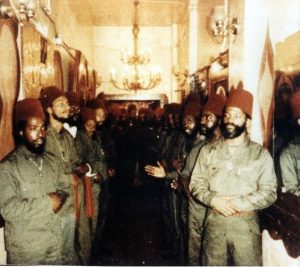
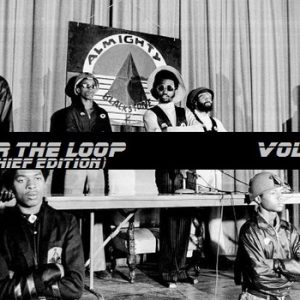
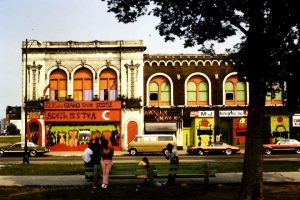
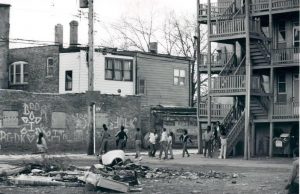
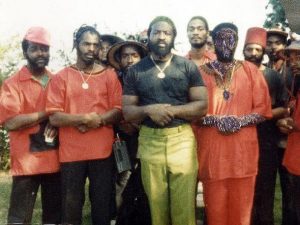
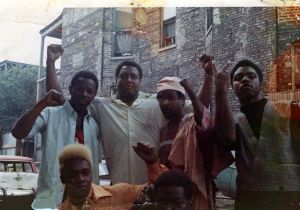
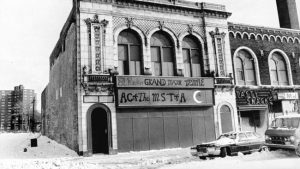
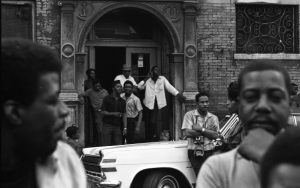
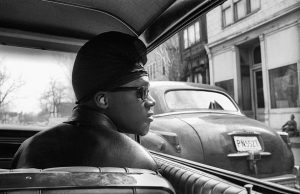
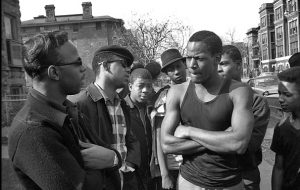
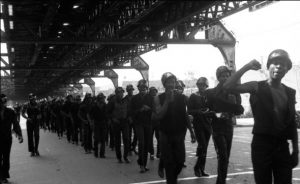
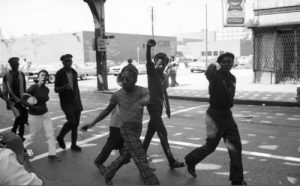
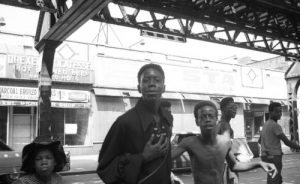
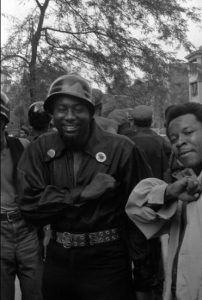

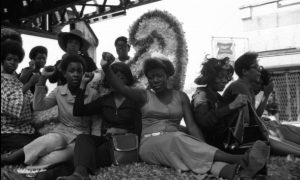
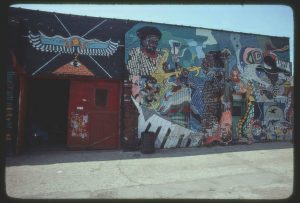
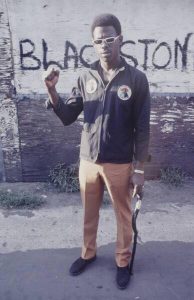
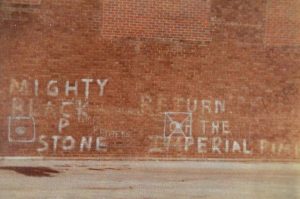

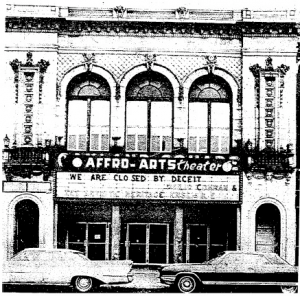
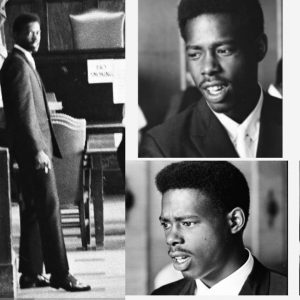
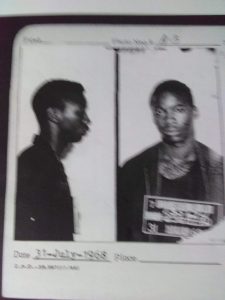
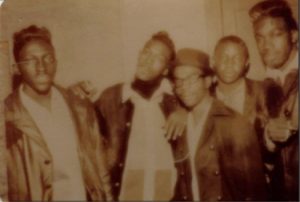
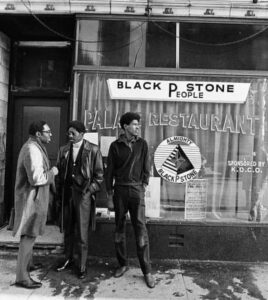

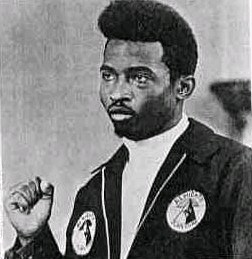
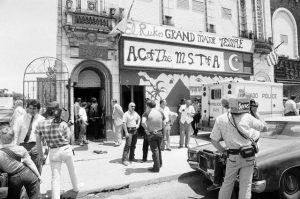
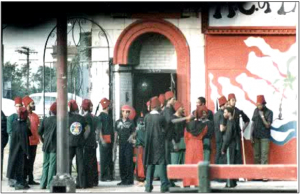
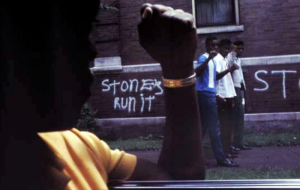
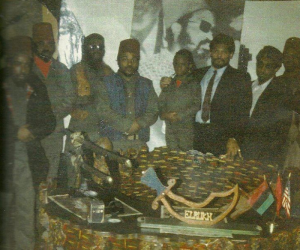

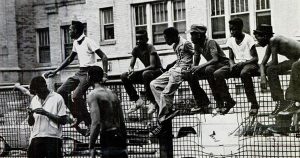
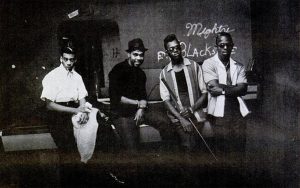

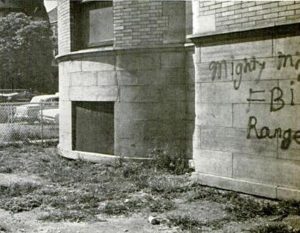
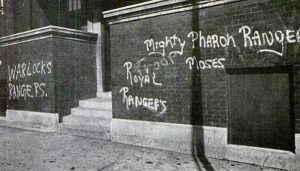
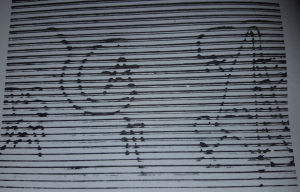
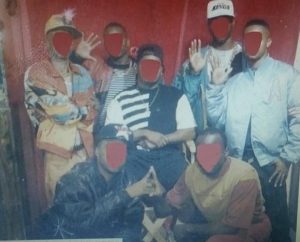
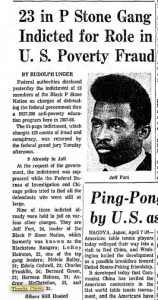
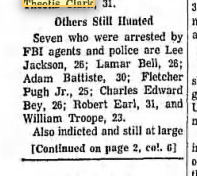
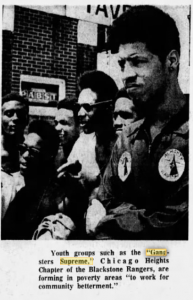
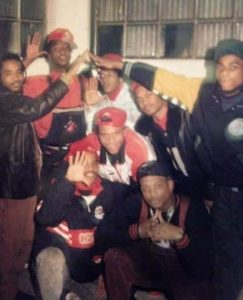
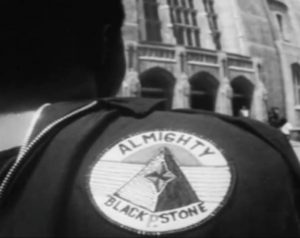
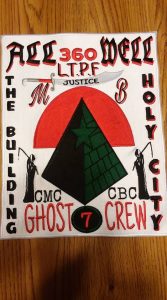
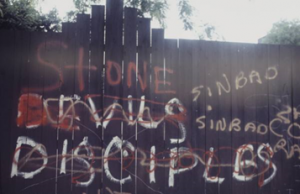
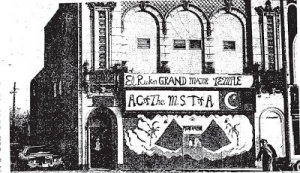

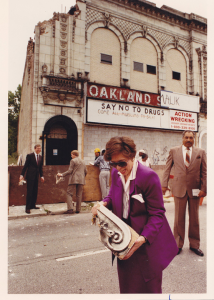
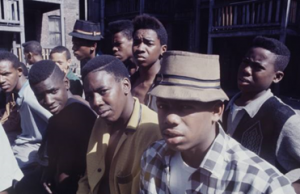
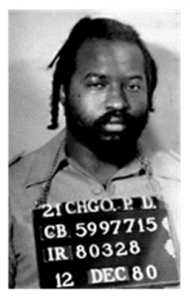

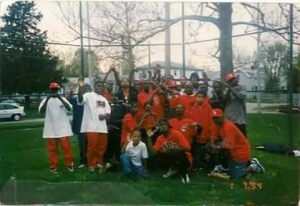
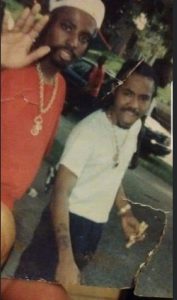
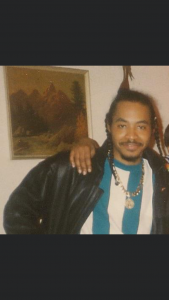
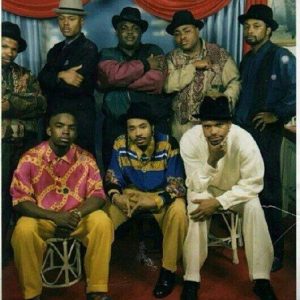
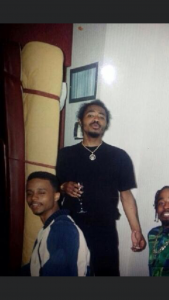
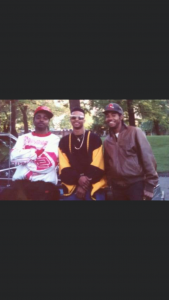
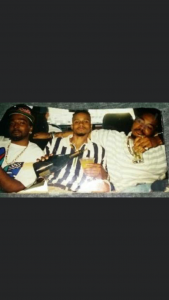
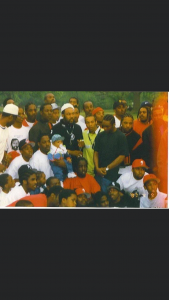
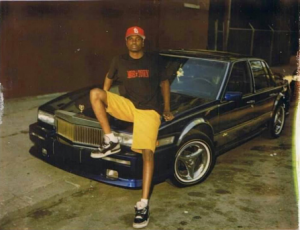
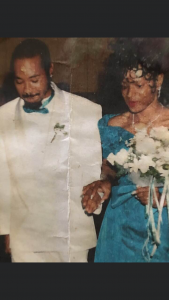
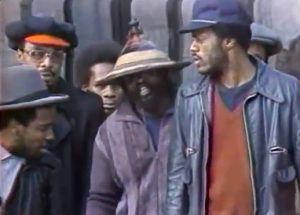
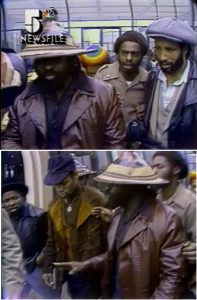
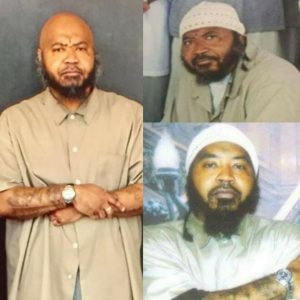
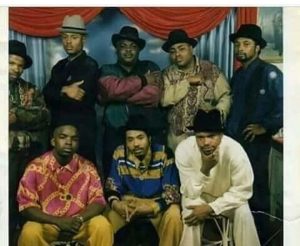
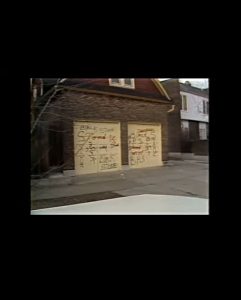
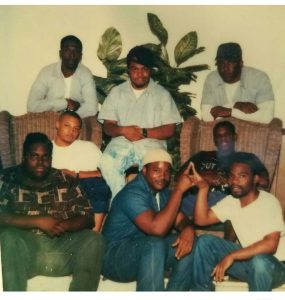

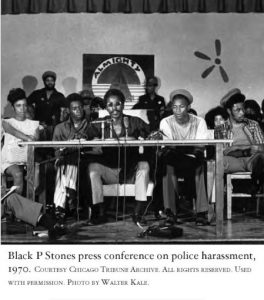
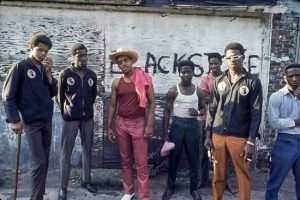
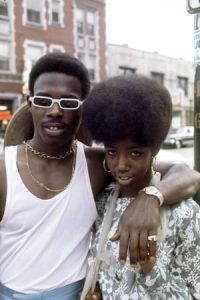
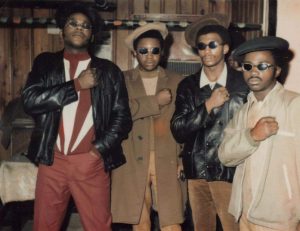

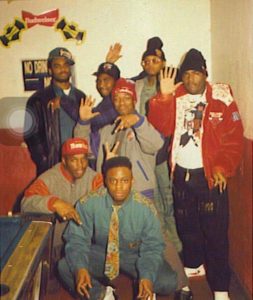
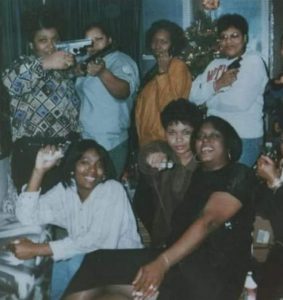
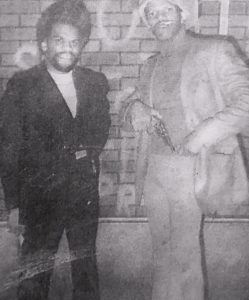
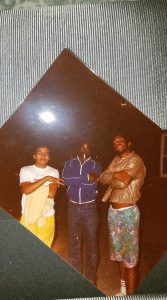
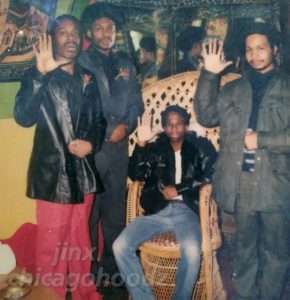
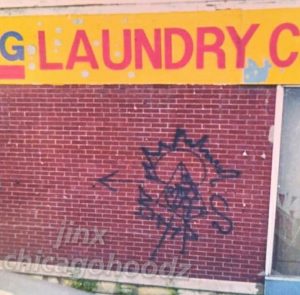
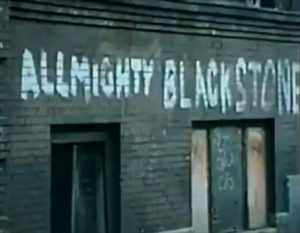
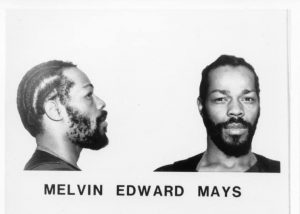

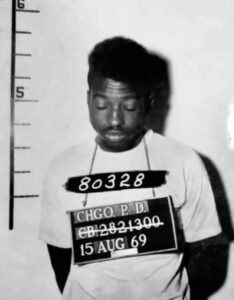
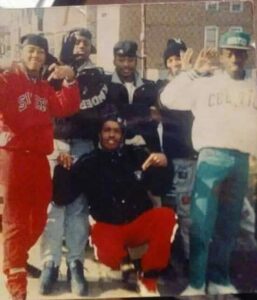
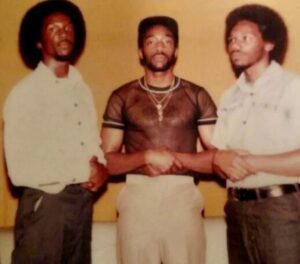
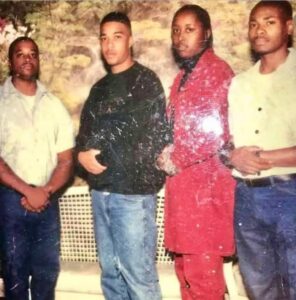
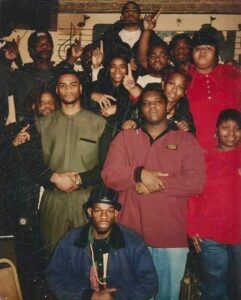
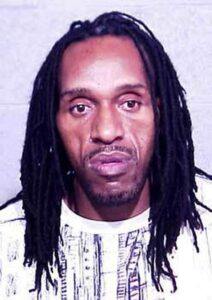
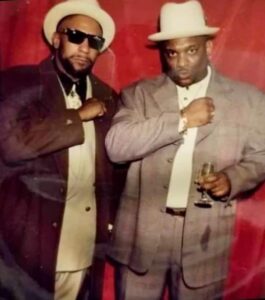
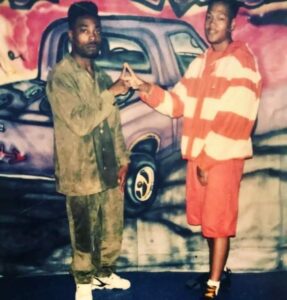
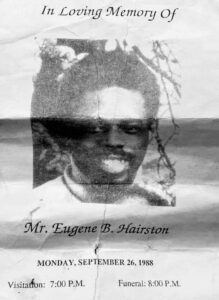
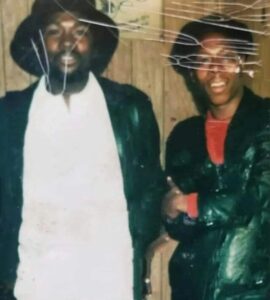
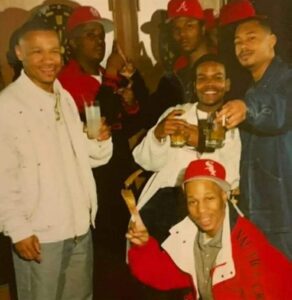
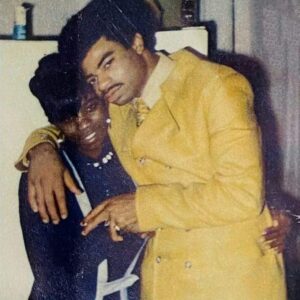
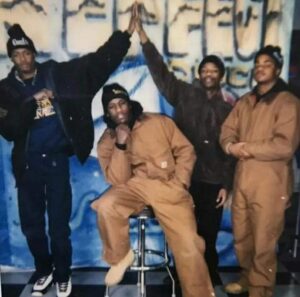
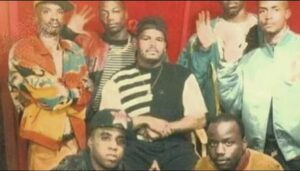
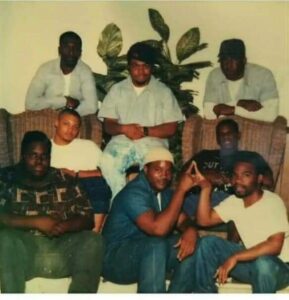

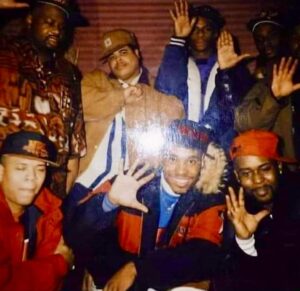

Known decks of Black P Stones past and present:
Ashburn neighborhood 1980s-present years
Decks of Ashburn
79th & Campbell
79th & Homan 80s, 90s
79th & Western 80s-present years (Shared with Gangster Disciples)
83rd & Kedzie 90s-present years (Shared with Gangster Disciples)
Auburn Gresham neighborhood Established 1964-present years
Decks of Auburn Gresham
79th to 80th, Hoyne to Damen (BBG)
79th to 80th, Emerald to Union (Espot SYS)
85th to 87th, Winchester to Hoyne
82nd to 87th, Justine to Ada (Foster Park)
83rd to 85th, Aberdeen to Carpenter (8 Tray)
Vincennes from 85th to Birkhoff (Stone Terrace)
87th to 88th, Marshfield to Justine (Cross Ashland)
89th to 90th, Emerald to Union (Fintown Sicko Gang)
77th to 81st, Halsted to Wallace (Trap Town)
79th & Winchester (Terror Dome, Shared with Conservative Vice Lords)
81st & Marshfield
82nd from Emerald to Union
83rd & Damen
87th from Damen to Winchester
87th & Racine
87th & Aberdeen
87th from Euclid to Jeffrey (Apache Stones, Outlaw City)
87th & Wallace
83rd & Marshfield (The Royal, El Rukns)
79th & Homan
79th & Racine
83rd & Rhodes
87th from Damen to Racine (Duck Town)
87th & Ashland
87th & Halsted (Fin Town)
Decks of Austin
Chicago to Huron, Lockwood to Latrobe (West Side Titanic Stones)
Augusta to Chicago, Long to Lorel
Chicago to Huron, Sawyer to Albany
Ferdinand & Laramie
Chicago & Pine
Decks of Avalon Park
81st & Woodlawn
Back of the Yards neighborhood Established 1966-present years
Section of the Back of the Yards
52nd to 53rd, Paulina to Ashland (Murdafield Moe Town)
51st to 52nd, Loomis to Laflin (Moe Town) Established 1966
53rd to 55th, Ashland to Laflin (L-Station SODMG Moe Town, Former Rubenite Stones 55th and Ashland) Established 1966
50th to 52nd, Racine to Aberdeen (Folly Boyz Moe Town)
54th to 55th, Bishop to Loomis (Back Block Moe Town) Established 1966
Morgan from 52nd to 54th (D Block Moe Town)
52nd to 53rd, Sangamon to Peoria (KTC Moe Town)
52nd to 53rd, Green to Halsted (GCE Moe Town)
51st to 55th, Ashland to Union (Moe Town) Established 1966
51st & Lowe (Jets)
53rd from Racine to May
Halsted from 53rd to 54th (Jets)
55th & Carpenter
55th & Racine
51st to 53rd, Union to Wallace (Low Life Moe Town)
Decks of Burnside
93rd & Avalon
Decks of Calumet Heights
93rd & Harper (Crazy Harper, shared with Gangster Disciples)
Blackstone from 91st to 92nd (CHB)
Chatham neighborhood Established 1964-present years
Decks of Chatham
87th to 88th, State to Wabash (Bash Town Apache Stones)
87th to 89th, Martin Luther King Dr to Cottage Grove (STL Ray Ray World)
93rd & Martin Luther King Dr
83rd & Cottage Grove (El Rukns)
East Garfield Park neighborhood
Deck of East Garfield Park
Lexington & St. Louis
Decks of Edgewater
Hollywood & Kenmore 90s, 2000s, 2010s
Bryn Mawr & Winthrop
Englewood neighborhood Established 1966-present years
Decks of Englewood
72nd to 74th, Racine to May (May Block)
55th to 57th, Ashland to Union (Moe Town) Established 1966
74th & Halsted
Decks of Hyde Park
52nd to 54th, Cottage Grove to Drexel (Drexside Titanic Stones)
51st & Blackstone (Shared with Four Corner Hustlers)
53rd & Blackstone
Gage Park neighborhood Established 1991-1997
59th & Campbell Established 1991-1997
Garfield Ridge nieghborhood Established 1979-2011
43rd to 47th, Cicero to Lavergne (Leclaire Courts projects shared with Four Corner Hustlers, 43rd and Cicero was 4CH and CVL, 45th and Leclaire was MIVL and CVL, South End Conservatives) Established 1979-2011
Grand Boulevard neighborhood Established 1966-present years
Decks of Grand Boulevard
47th & Cottage Grove (Jet Blacks)
43rd & Indiana (Lake Park Meadows projects Titanic Stones) Established 1966
42nd & Prairie (El Rukns, Israelite Stones) Established 1976
44th from Evans to Cottage Grove (Washington Park projects, Jet Blacks, 4445 S. Cottage Grove, The 4-5)
45th & Champlain (Jet Blacks)
45th & Indiana (Jet Blacks)
Greater Grand Crossing neighborhood Established 1960-present years
Decks of Greater Grand Crossing
69th to 70th, Michigan to Indiana (Kuwait City)
75th to 76th, St. Lawrence to Champlain (GMB)
73rd & Vincennes
79th & Vernon (Shared with Black Disciples)
Decks of Kenwood
Lake Park from 43rd to 47th (Moroccan Tribe, El Rukns) Established 1977-1980s
46th & Woodlawn (The Five Point Terrace, El Rukns) Established 1977-1980s
44th & University
46th & Greenwood
Lincoln Park neighborhood 90s, 2000s
Clybourn/Damen to Leavitt/Hoyne (Lathrop projects) 90s, 2000s
Lincoln Square neighborhood Established 1975-present years
Decks of Lincoln Square
Devon to Rosemont, Bell to Hamilton Established 1975-present years
Logan Square neighborhood 90s-present years
Decks of Logan Square
Humboldt & Sacramento
Marquette Park neighborhood 90s
Decks of Marquette Park
63rd & Campbell 90s
Marshall Square neighborhood 90s-present years
Deck of Marshall Square
25th to 26th, California to Washtenaw (Lawndale Gardens projects shared with Conservative Vice Lords) 90s-present years
Morgan Park neighborhood Established 1969-present years
Decks of Morgan Park
113th Pl & Morgan
115th & Morgan
Near North Side neighborhood Established 1966-2011
Decks of Near North Side
Cabrini Green projects Established 1966
Near West Side neighborhood Established late 60s-2010 as Gangster Stones
Decks of Near West Side
150 North Hermitage Avenue building (Gangster Stones, Henry Horner projects, Lake and Hermitage, the Fortress) Established late 60s-2010
1625 West Washington Boulevard (Gangster Stones, Ashland and Washington)
Near South Side neighborhood Established 1966-2009
Decks of Near South Side
Harold Ickes projects Established 1966-2009
North Center neighborhood Established 1992-2011
Decks of North Center
Diversey & Hoyne (Lathrop Projects shared with Latin Kings and Conservative Vice Lords) Established 1992-2011
Oakland neighborhood Established 1966-present years
Decks of Oakland
39th to 42nd, Lake Park to Ellis (Suwu TTB, 40th to 42nd former El Rukns territory)
Ida B. Wells projects Established 1966-2002
Clarence Darrow projects Established 1966-2000
Madden Park projects Established 1970-2005
38th & Cottage Grove
Lake Park Ave from 39th to 43rd (Moroccan Tribe, El Rukns) Established 1976-1989
Drexel & Oakwood (The Fort, El Rukn Moorish Science Mosque, El Rukn Grand Major Temple) Established 1977-1989
Pullman neighborhood Established 1969-present years
Decks of Pullman
95th to 97th, Avalon to Cottage Grove Established 1969-present years
Riverdale neighborhood Established 1969-present years
Decks of Riverdale
134th Street from St. Lawrence to Corliss (Titanic Stones)
131st & Evans (Altgeld Gardens projects, Jet Blacks)
Rogers Park neighborhood Established 1975-present years
Decks of Rogers Park
Howard to Birchwood, Ridge to Clark (Stoneville)
Albion to Arthur, Clark to Greenview
Ashland & Pratt (was shared with Outlaw Bloods)
Jarvis & Damen
Howard from Damen to Ridge (The Jungle)
Roseland neighborhood Established 1964-present years
Decks Roseland
91st to 95th, Wentworth to Eggleston (Lowden Gardens projects) Established 1964-present years
91st & Harvard (Princeton Park)
100th to 103rd, Dauphin to St. Lawrence (Sin City)
101st & Cottage Grove (shared with Conservative Vice Lords)
103rd & Wallace (10-3)
105th & Halsted
105th & Indiana (Shared with Conservative Vice Lords)
Edbrooke from 105th to 107th
111th & Wentworth
122nd & Elizabeth (El Rukns)
109th & Michigan (The People’s Choice Restaurant, El Rukns)
100th to 103rd, Cottage Grove to State (London Town)
103rd to 107th, Halsted to Eggleston
107th from Michigan to Indiana
113th & Harvard
113th & Eggleston
113th & Michigan (shared with Mickey Cobras)
Decks of South Chicago
79th to 80th, Houston to South Shore Drive (EBE Jacktown Titanic Stones)
81st to 82nd, Houston to South Shore Drive (8 Deuce)
83rd to 84th, Kingston to Saginaw (No Limit Stones, Tony World)
83rd to 84th, Burnham to Muskegon (Quill Block)
86th to 87th, Phillips to Kingston (D Block Apache Stones)
87th to 88th, Essex to Colfax (No Limit Stones, Medina)
87th to 89th, Burley to Mackinaw (GME Roe Block)
90th to 92nd, Muskegon to Commercial (Bloodstones, Slaughter Town)
82nd & Escanaba (Shared with Conservative Vice Lords, Triple Bs)
82nd from Houston to Baltimore (Titanic Stones)
83rd & Colfax (No Limit Stones)
Kingston from 79th to 83rd (Kingston Killers)
79th to 83rd, Yates to Colfax (Terror Town)
87th from South Chicago Dr to Commercial
Escanaba from 90th to 91st (Slaughter Town)
South Deering neighborhood 2010s-present years
Decks of South Deering
95th & Constance 2010s-present years
South Shore neighborhood Established 1960-present years
Decks of South Shore
67th to 69th, Jeffrey to Clyde (Murder Show, Titanic Stones)
74th to 75th, Bennett to Jeffrey (Guwop Gang)
75th to 78th, Yates to Exchange (Terror Town)
77th to 79th, Exchange to South Shore Drive (Ceno City Coles Mobb)
78th to 79th, Constance to Cregier (C Block)
71st & Blackstone
75th & Stoney Island
74th & Phillips (Maniac Stones)
75th & Colfax (El Rukns)
78th & Kingston
79th & Essex
79th & Yates (El Rukns)
Kingston from 72nd to 75th (Kingston Raiders)
74th Pl & Kingston (Peace and Love Building, El Rukns)
76th & Kingston (East Side, El Rukns)
71st & Stoney Island (El Rukns)
69th & Stoney Island (Titanic Stones)
73rd to 79th, Yates to Colfax (Terror Town)
74th & Essex
79th & Paxton
79th & Oglesby
Uptown neighborhood Established 1969-present years
Decks of Uptown
Foster to Lawrence, Winthrop to Sheridan Established 1969-present years
Washington Heights neighborhood Established 1964-present years
Decks of Washington Heights
89th to 90th, Ashland to Bishop (Duck Town)
89th to 91st, Throop to Ada (D Block Stro City)
91st to 93rd, Ashland to Beverly (Cel City)
93rd to 94th, Green to Union (Rack City)
95th to 103rd, Beverly to Vincennes (Nateville)
91st to 95th, Halsted to Eggleston (Rack City)
West Englewood neighborhood Established 1966-present years
Decks of West Englewood
55th to 58th, Hermitage to Paulina (Art Gang Moe Town) Established 1966-present years
59th to 61st, Wolcott to Wood (9 Block)
57th & Justine
69th & Laflin
West Pullman neighborhood Established 1969-present years
Decks of West Pullman
113th & Carpenter
113th & Morgan
115th & Halsted
117th & Laflin
122nd & Carpenter
128th & Lowe
West Ridge neighborhood Established 1979-present years
Decks of West Ridge
Bell from Highland to Devon
Howard to Touhy, Ridge to Western (The Jungle)
Wicker Park (West Town neighborhood) Established 1993-mid-2010s
Decks of Wicker Park
Potomac to Crystal, Leavitt to Hoyne (Shared with Conservative Vice Lords) 1993-2010s
Woodlawn neighborhood Established 1959-present years
Decks of Woodlawn
61st to 63rd, Langley to Evans (Chief Town) Established 1959-present years
62nd to 63rd, Blackstone to Stoney Island (Stoney Spot) Established 1959-present years
64th to 65th, Blackstone to Stoney Island (Dipset 650) Established 1959-present years
Blackstone from 63rd to 67th (Mecca) Established 1959-present years
Harper from 63rd to 64th (Historic Harper’s Boys turf of 1959)
Ellis from 65th to 67th (Ellis Rebel Stones)
67th & Stoney Island (Southmoor Hotel, The Crest Hotel) Established 1969
64th & Harper (The Harper Building, El Rukns)
63rd & Woodlawn (The Stone Hedge, El Rukns)
64th & Kenwood (The African Hut Restaurant, Alahambra, El Rukns)
64th& Woodlawn (The Pyramid Towers, El Rukns)
Woodlawn & Minerva (Morroco, El Rukns)
Suburbs
Alsip
Bellwood Established 1980
Bolingbrook Established 1980
Calumet City
Calumet Park
Chicago Heights Established 1964
Crestwood
Decatur
Dixmoor Established 1964
Dolton
Evanston Established 1980
Flossmoor
Ford Heights Established 1964
Harvey Established 1964
Hoffman Estates
Joliet
Justice
Markham Established 1964
Maywood Established 1980
Moline
Peoria
Riverdale, IL
Phoenix Established 1964
Robbins Established 1964
Rockford
Waukegan Established 1980
Westmont
Zion Established 1980
Gary, IND
Hammond, IND
